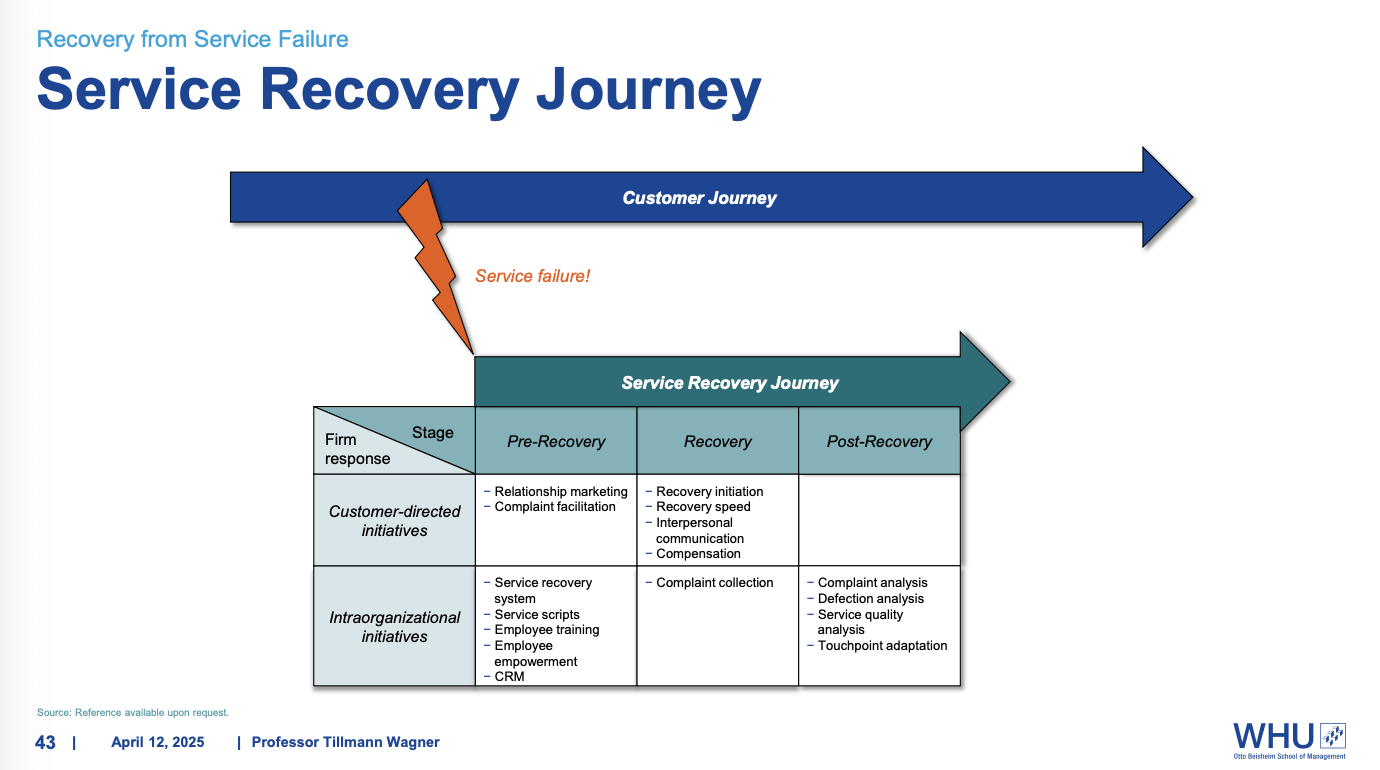Nurturing Customer Relationships
1/104
There's no tags or description
Looks like no tags are added yet.
Name | Mastery | Learn | Test | Matching | Spaced |
|---|
No study sessions yet.
105 Terms
Chapter 1 - 1.2 Service Foundations
Physical goods vs Services
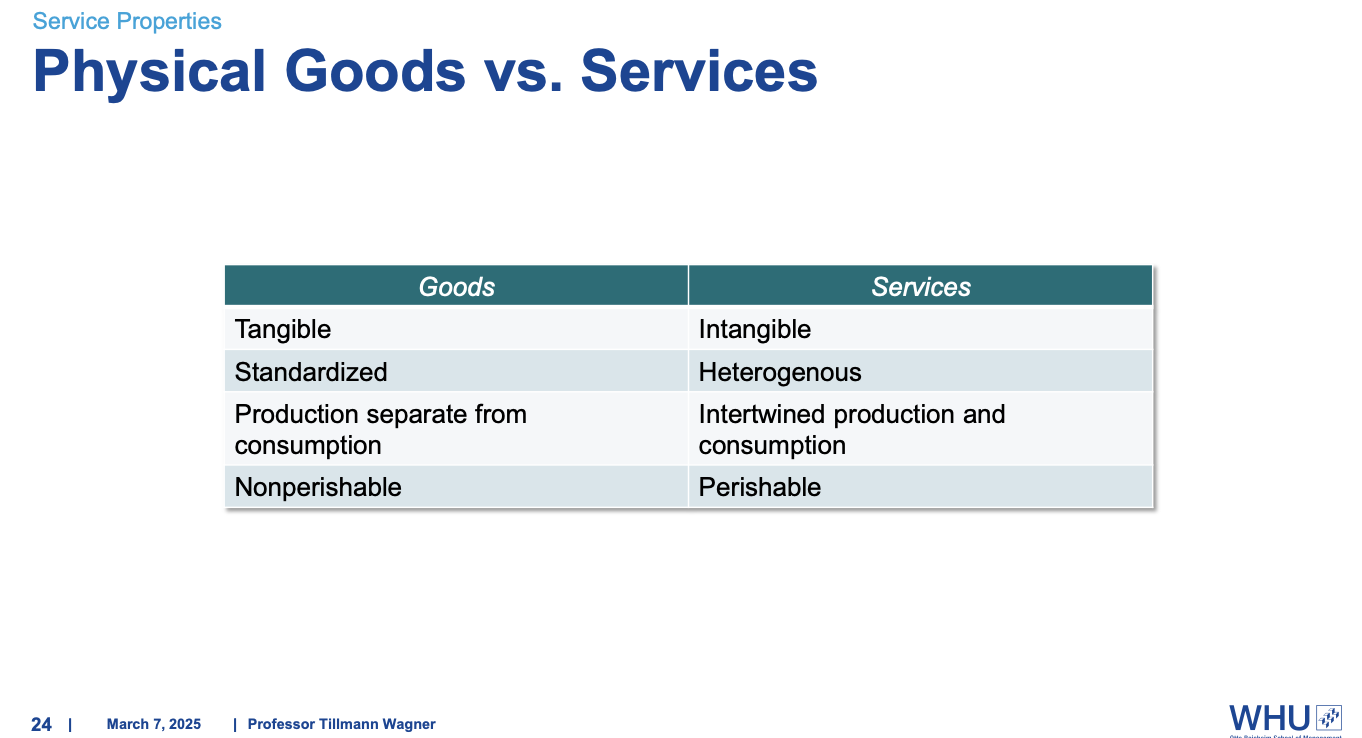
Intangibility
Consumers’ evaluations and choices are often driven by their expectancies of outcomes or experiences of given options (i.e., expectancy-value perspective).
− One’s ability to form expectancies varies among marketing contexts.
Different types of attributes in marketing:
Search attributes
− can effectively be judged by customers before purchase (e.g., price, time of service delivery)
Experience attributes
− can effectively be judged only after or during service delivery (e.g., Burning Man festival)
Credence attributes
− are difficult to realistically evaluate even after service delivery (e.g., legal or medical advice)
Experience & credence attributes
− are more common among services
− ↑ perceived risk
− ↑ experienced uncertainty
Psychological certainty
− represents a critical human cognition
− absence of a sense of certainty can cause an aversive state, which people are motivated to reduce
Intangibility can be a major challenge for communication and pricing of services!
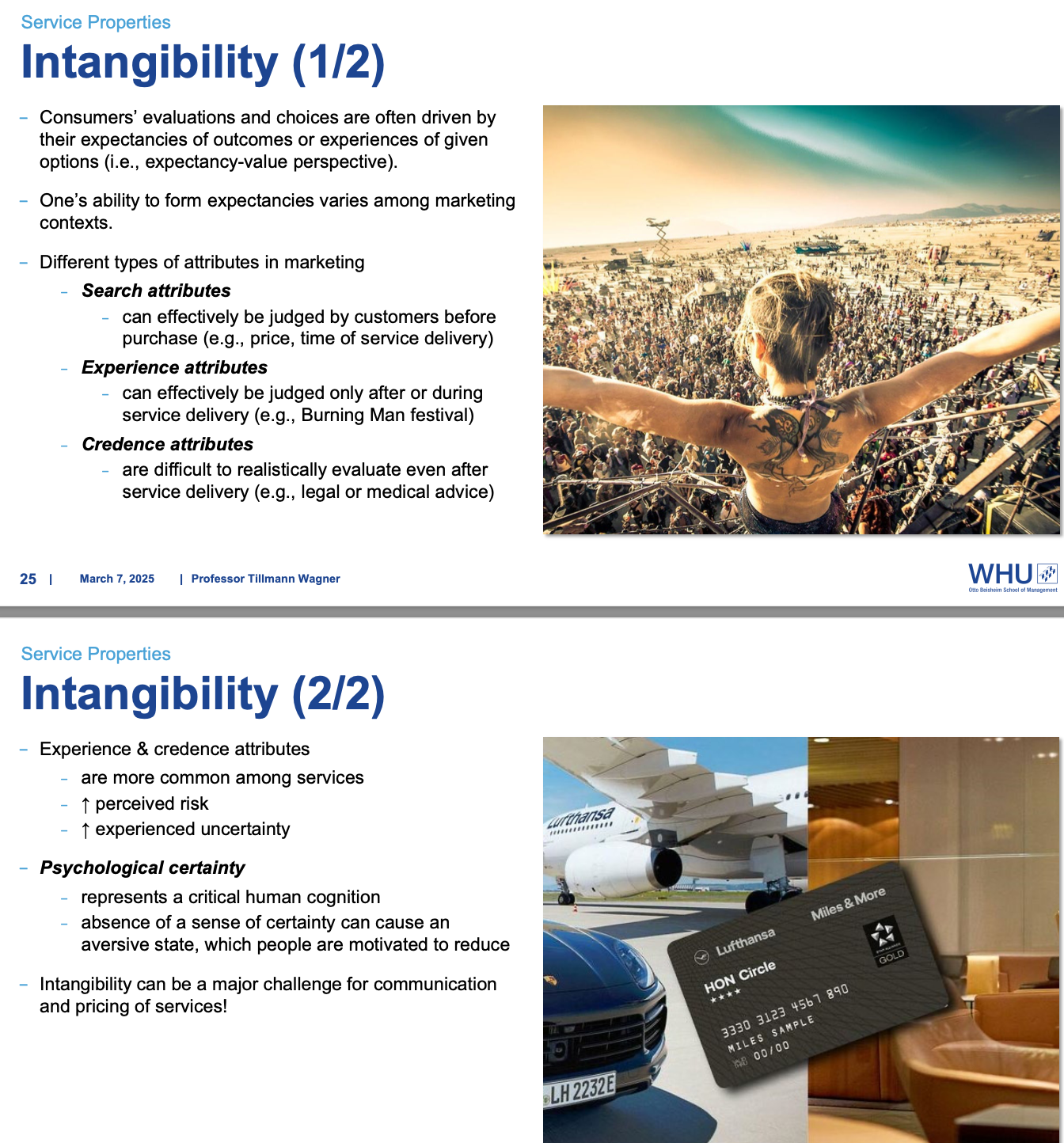
Heterogeneity
Non-digital service “production” is typically less technology dependent than manufacturing of physical goods.
− Demonstrated service quality may vary due to inconsistent employee performance.
− Demonstrated service quality may vary due to inconsistent customer participation.
− Subjective service experience may vary due to customer’s mood state.

Intertwined Production & Consumption
− Non-digital mass production is difficult.
Customers
− participate in coproduction
− i.e., customer in-role behaviors
Often required in the first place to produce/provide a service
(e.g., legal counseling, consulting, education)
Generally increasing (e.g., airline check-in, Internet provider)
− are affected by
service professionals,
service “factories” (i.e., facilities),
other customers.
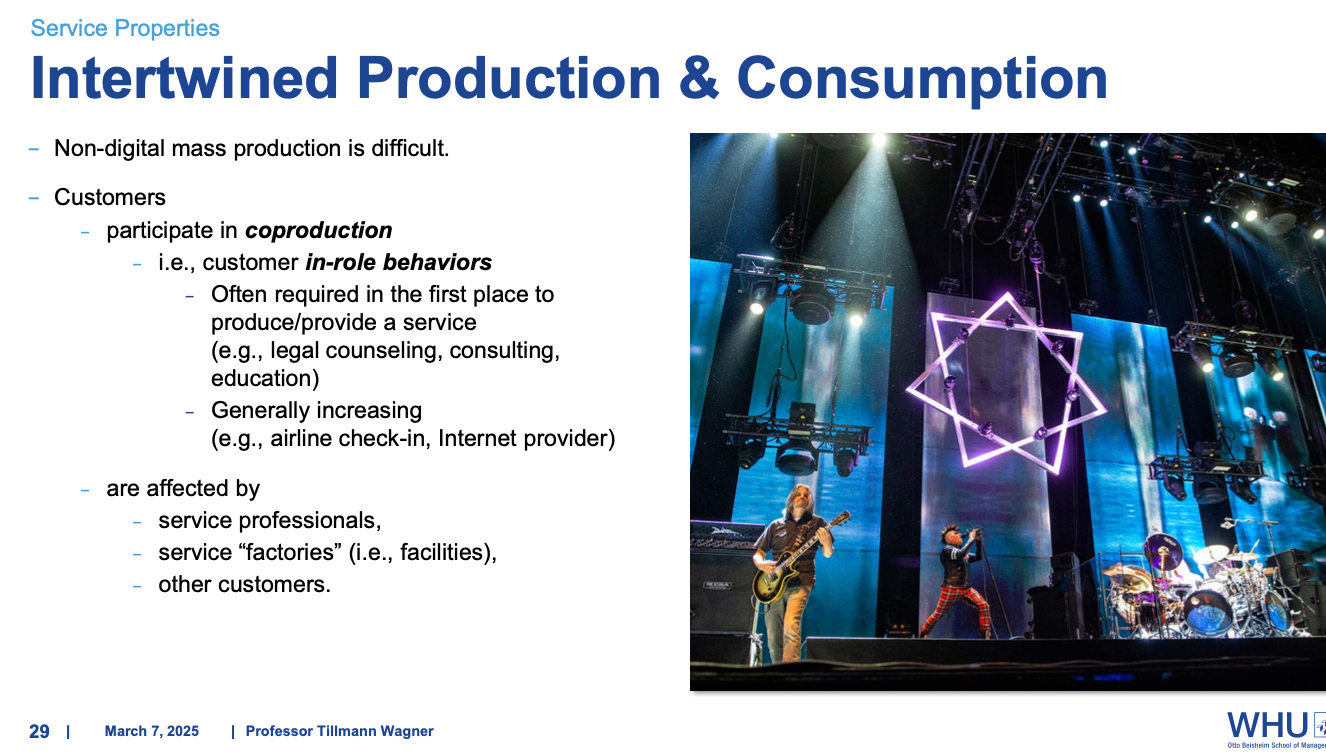
Perishability
− Many (non-digital) services cannot be stored.
− Many services cannot be returned & resold.
− The delivery of many services cannot be postponed.
− Productive overcapacity (e.g., too many frontline employees on the floor) results in wasted resources.
− Productive under capacity (e.g., not enough frontline employees) deteriorates service quality.
− Synchronizing supply & demand is critical for many service firms.
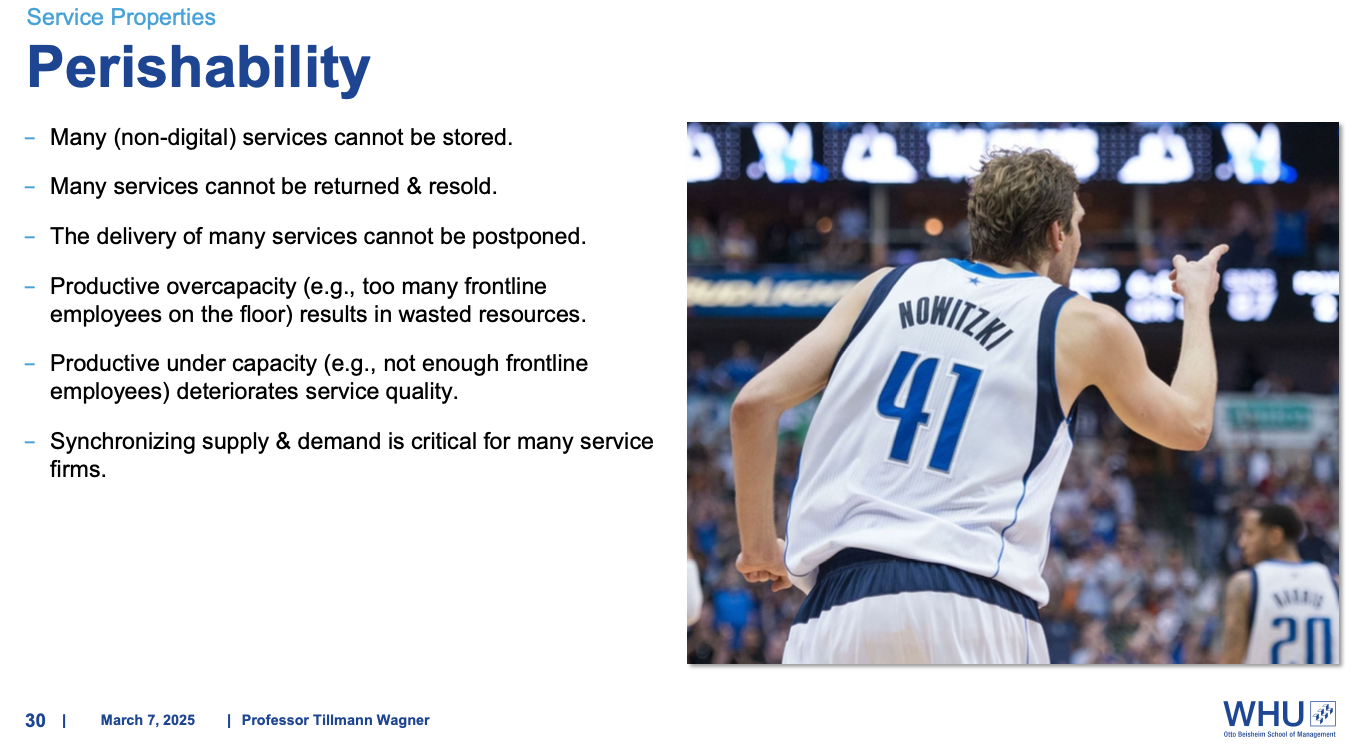
Marketing Mix
− The marketing mix of services is more differentiated.
− Three additional elements (i.e., Ps)
People
Physical & digital environments
Processes
− Services marketing is intertwined with
operations &
human resources.
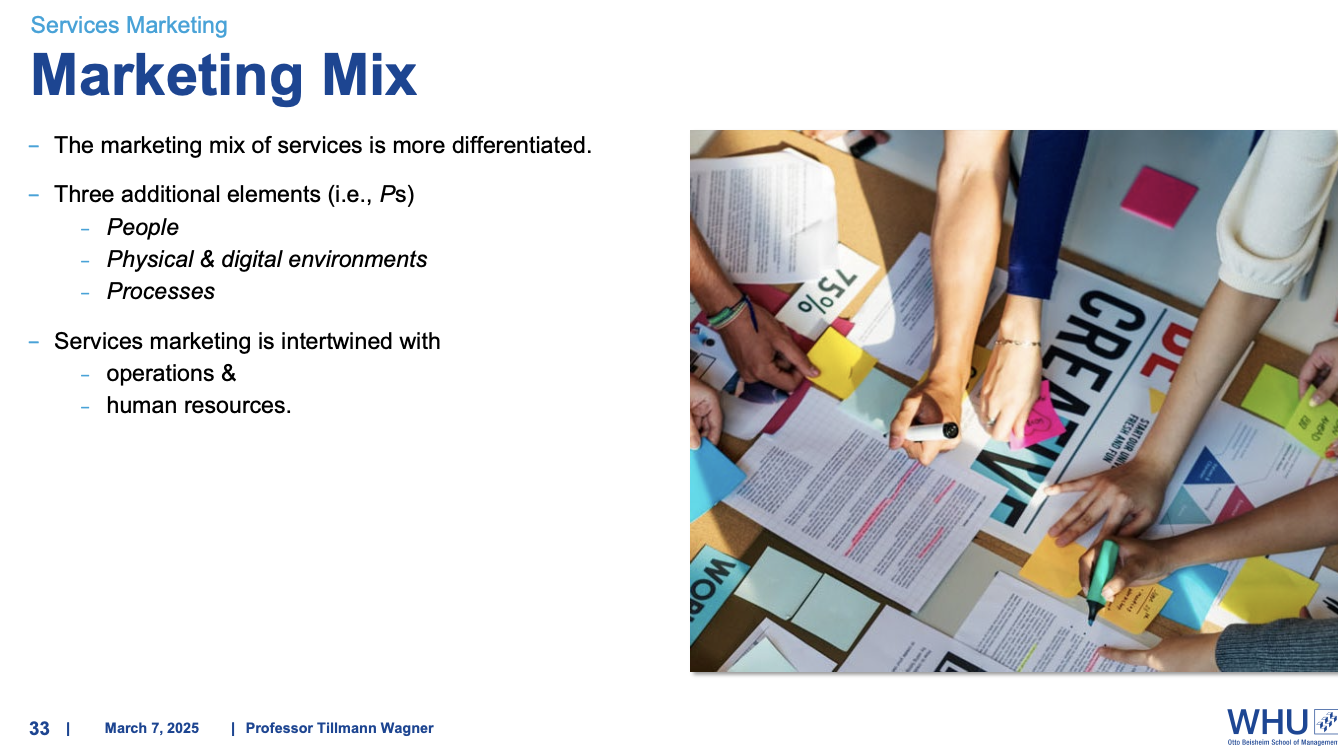
Service Marketing Mix
People
− i.e., human actors participating in service delivery
Frontline professionals
Other customers
Customer (as an individual)
Processes
− i.e., procedures, platforms, & technologies by which a service is delivered, consumed, and cocreated
− Employee & customer roles, self-service technologies, online lecture held live and/or being recorded etc.
Physical & digital environments
− i.e., visible elements of (physical or digital) environments of service delivery, information facilitating performance or communication of services
− Design of mobile apps, websites, physical facilities, signage, business cards, employee attire etc.
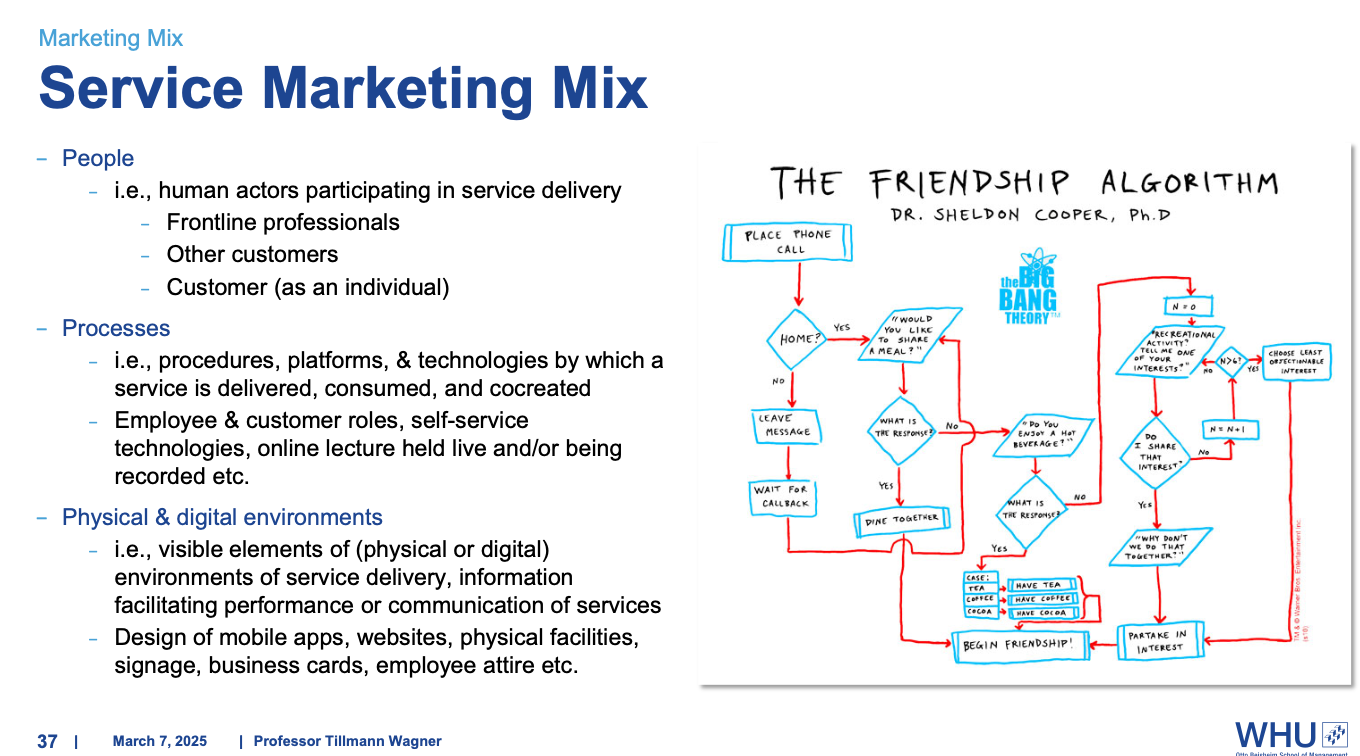
Chapter 2 - 2.0
Evolved Avenues to Customer Impact
− Industrial age
Transaction marketing
Post-industrial age
Relationship marketing
− Digital age
Engagement marketing
− Transaction marketing & relationship marketing can be thought of as alternative approaches.
− To an extent, engagement marketing may be viewed as an expansion of successful relationship marketing.
− None of the three approaches is superior/inferior per se or to be considered outdated.
− Choosing/rejecting any of the approaches will be due to the firm’s strategic objectives and the nature of the relevant customer base.
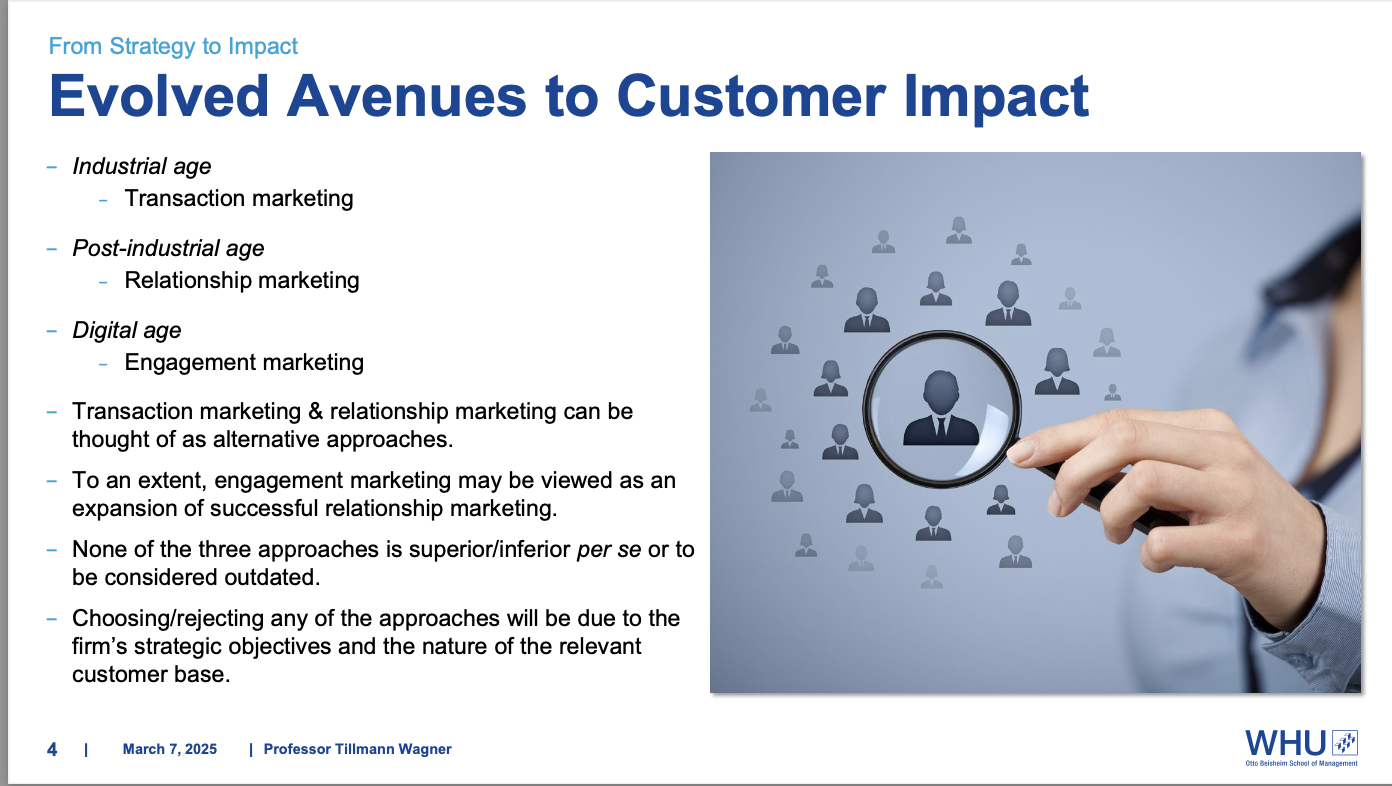
Chapter 2 - 2.1 Transactional Marketing
Transactional Marketing - definition
− i.e., marketing initiatives to raise customers’ interest and to
elicit purchases of the focal product or service over
competing ones (also: promotion marketing)
− Central premises
High efficiency
relating to mass production & mass consumption represents the central principle underlying economic success
Mass communication & promotional effortsdrive customer demand
Brands allow for differentiating products from competing market offers
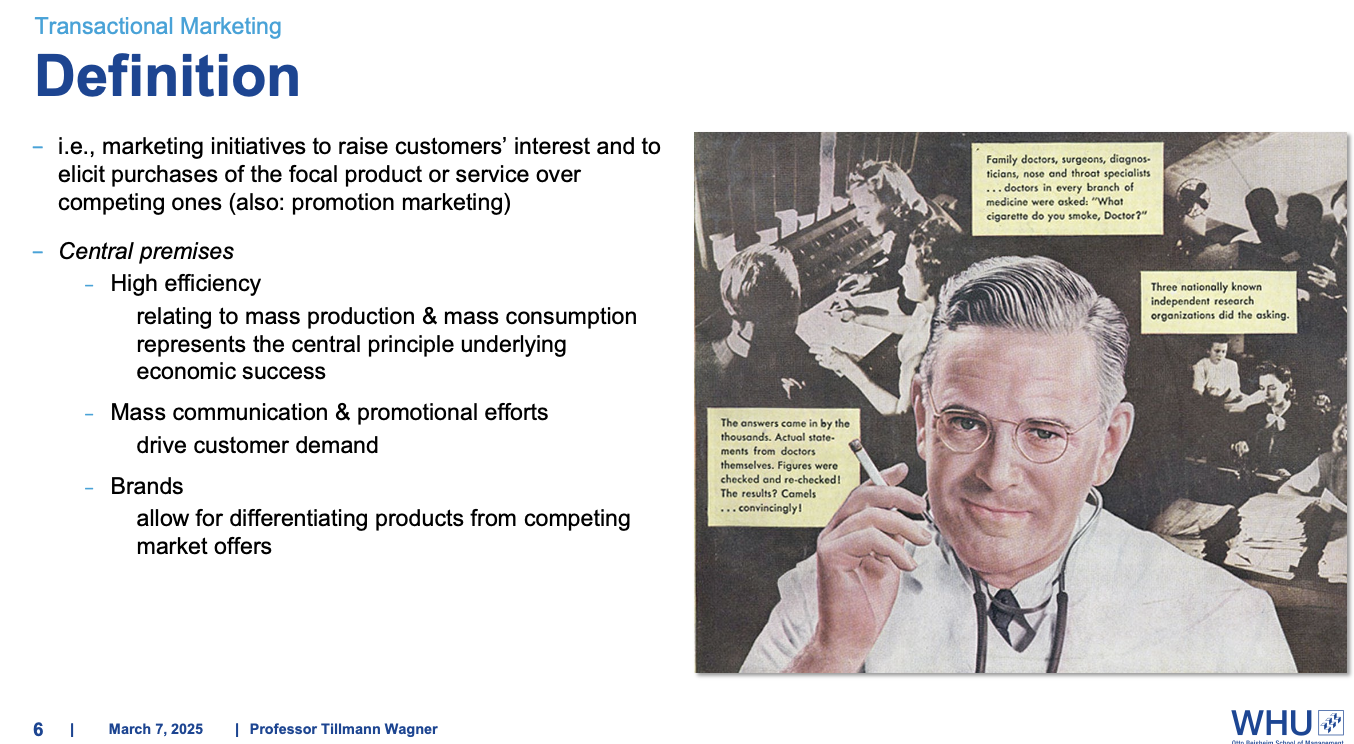
Transactional Marketing - perspective
− Information flow
One-directional
Mass communication
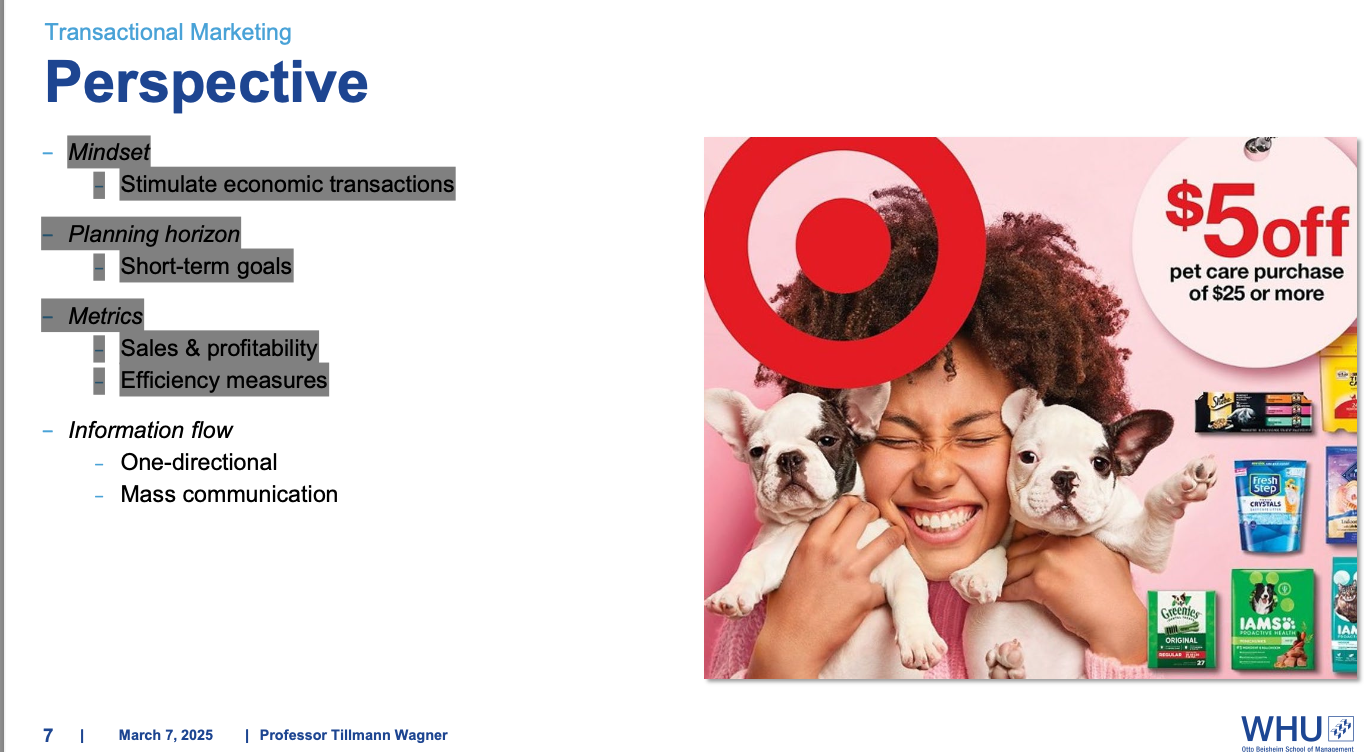
Transactional Marketing - Marketing Emphasis
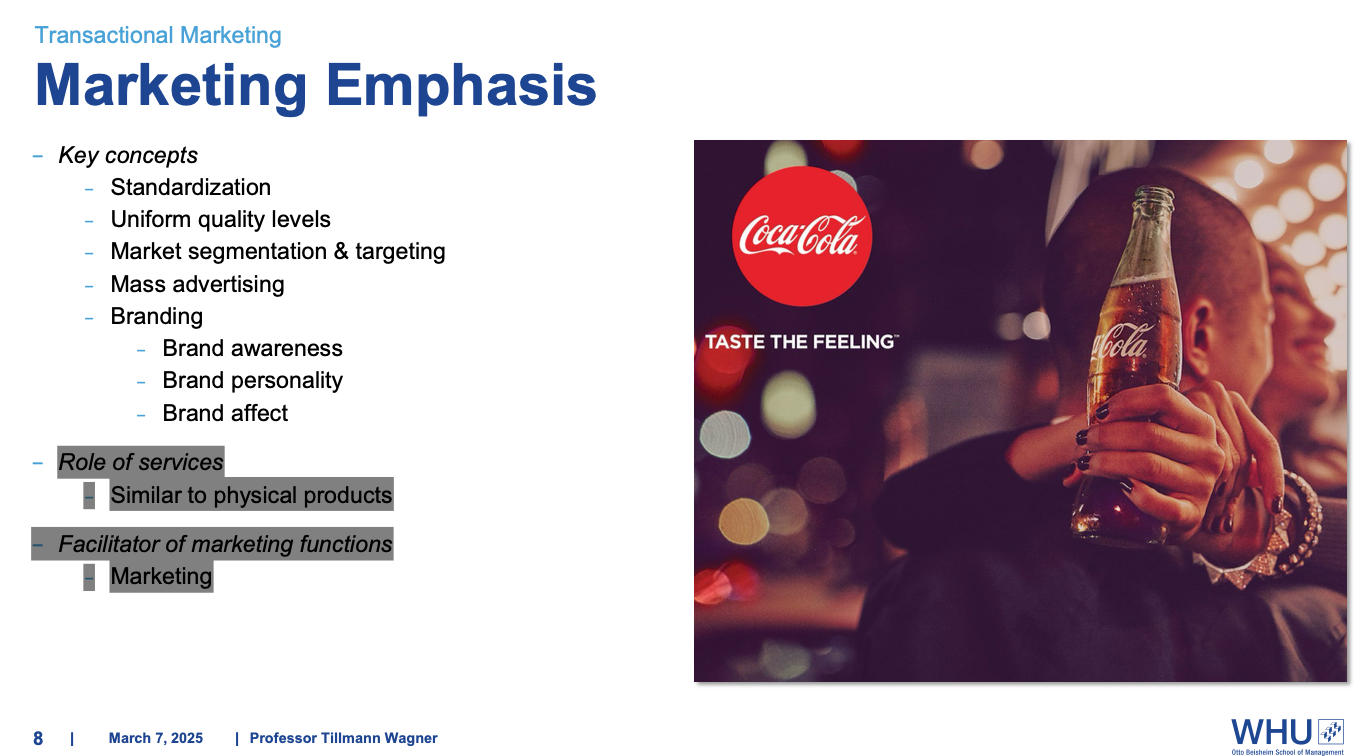
Chapter 2 - 2.2 Relationship Marketing
Relationship Marketing - Definition

Relationship Marketing - Perspective
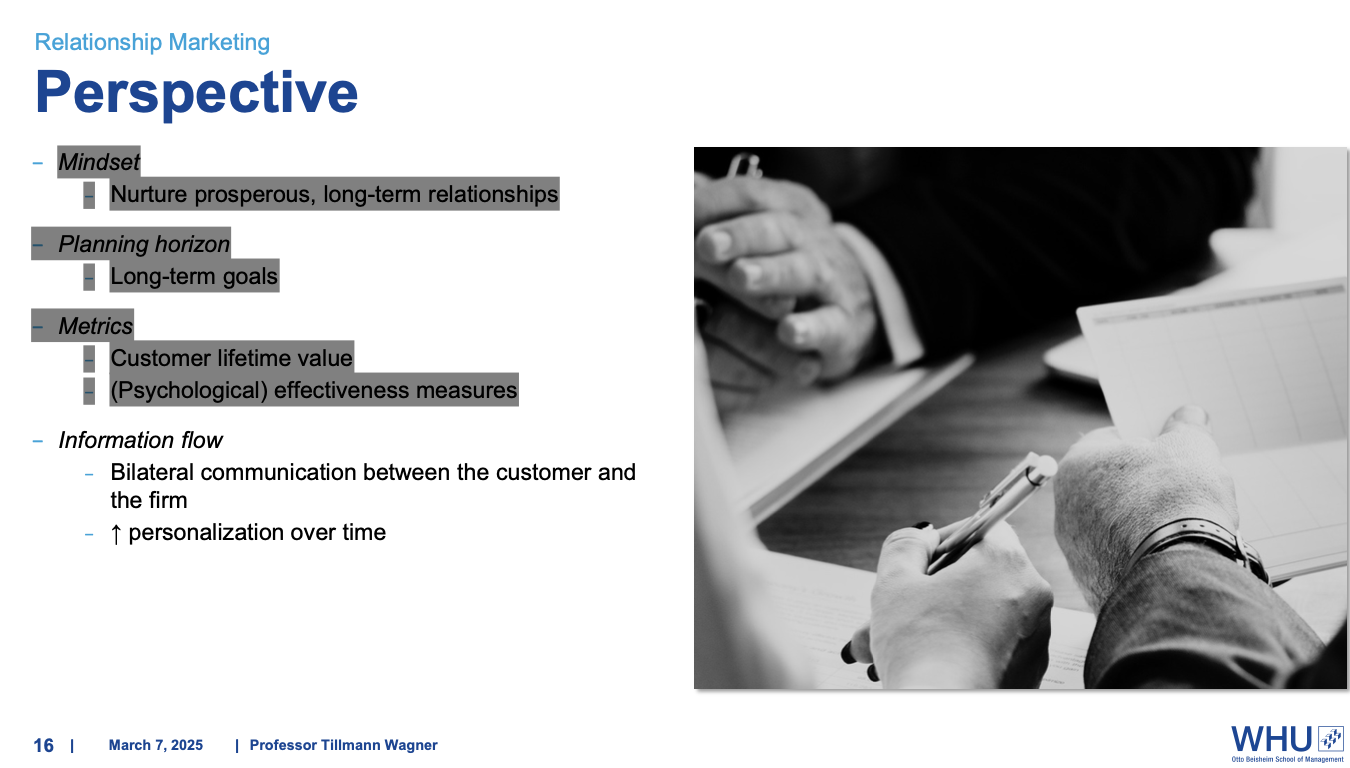
Relationship Marketing - Marketing Emphasis
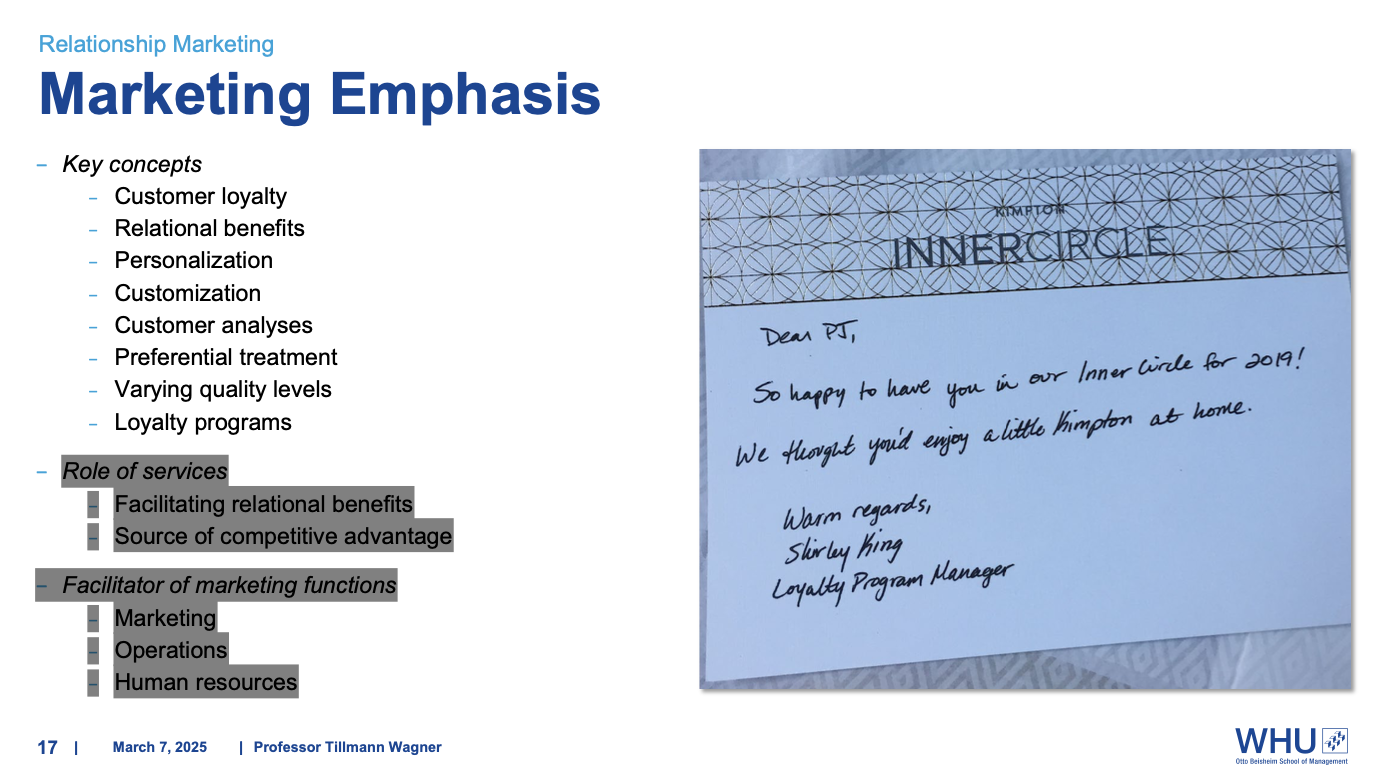
Relationship Marketing - Relational Benefits
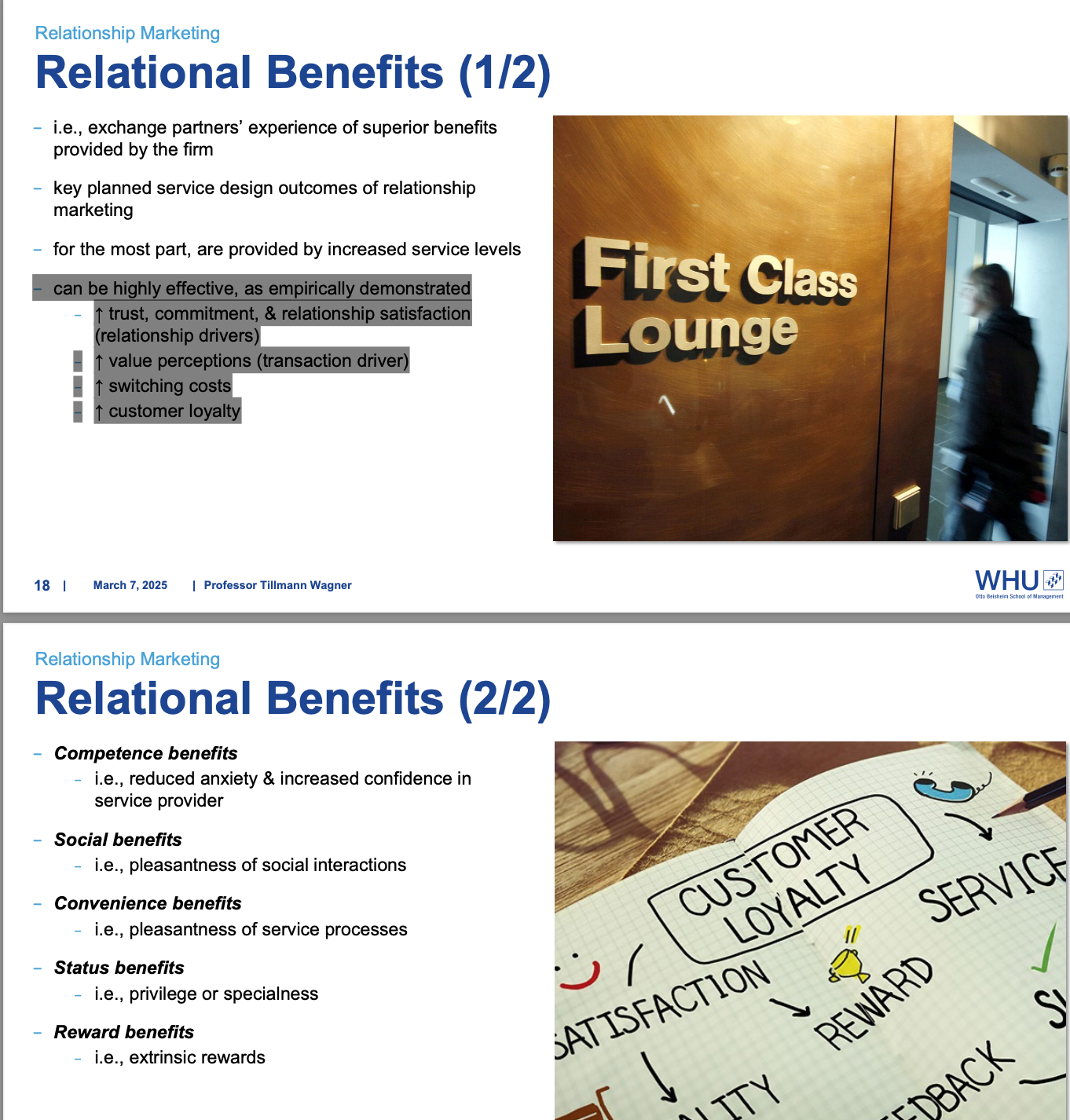
Relationship Marketing - Extrinsic Motivation
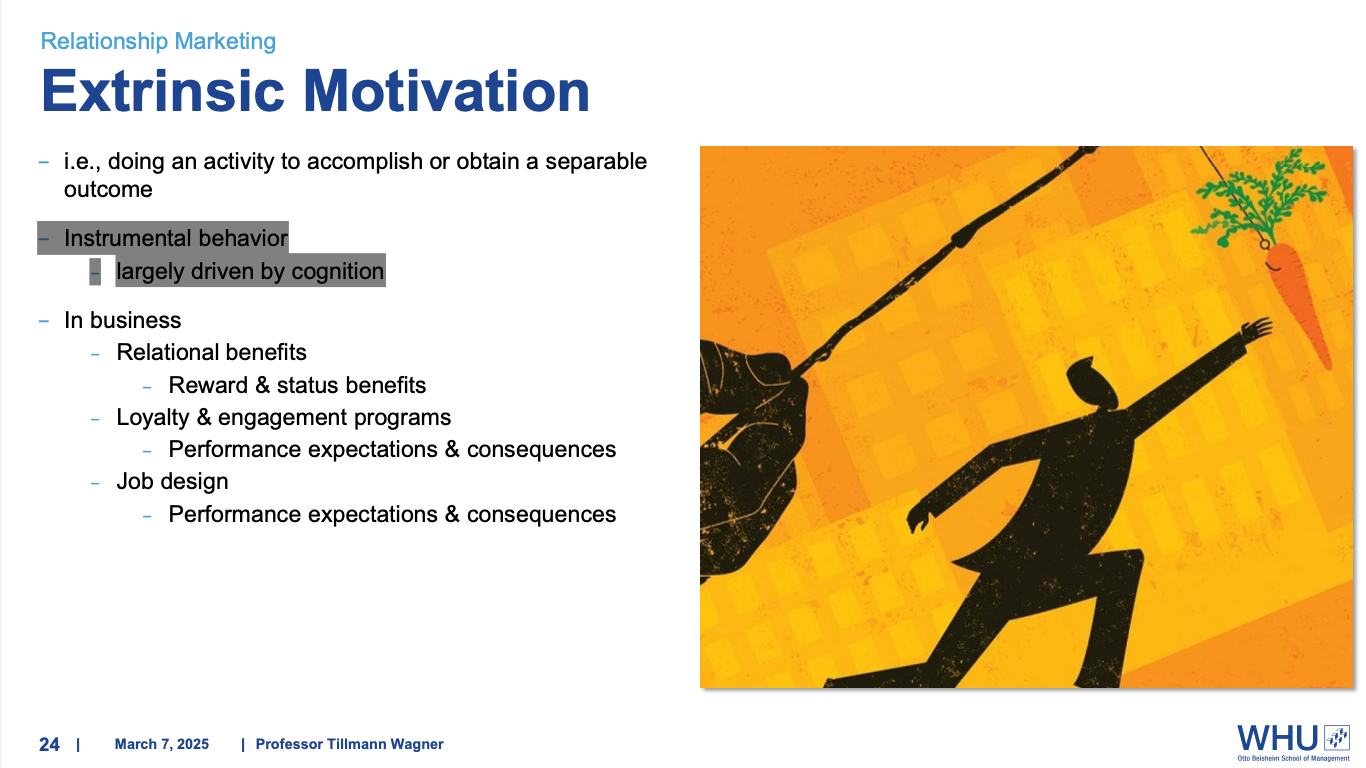
Extrinsic Motivation - Positive Reinforcers
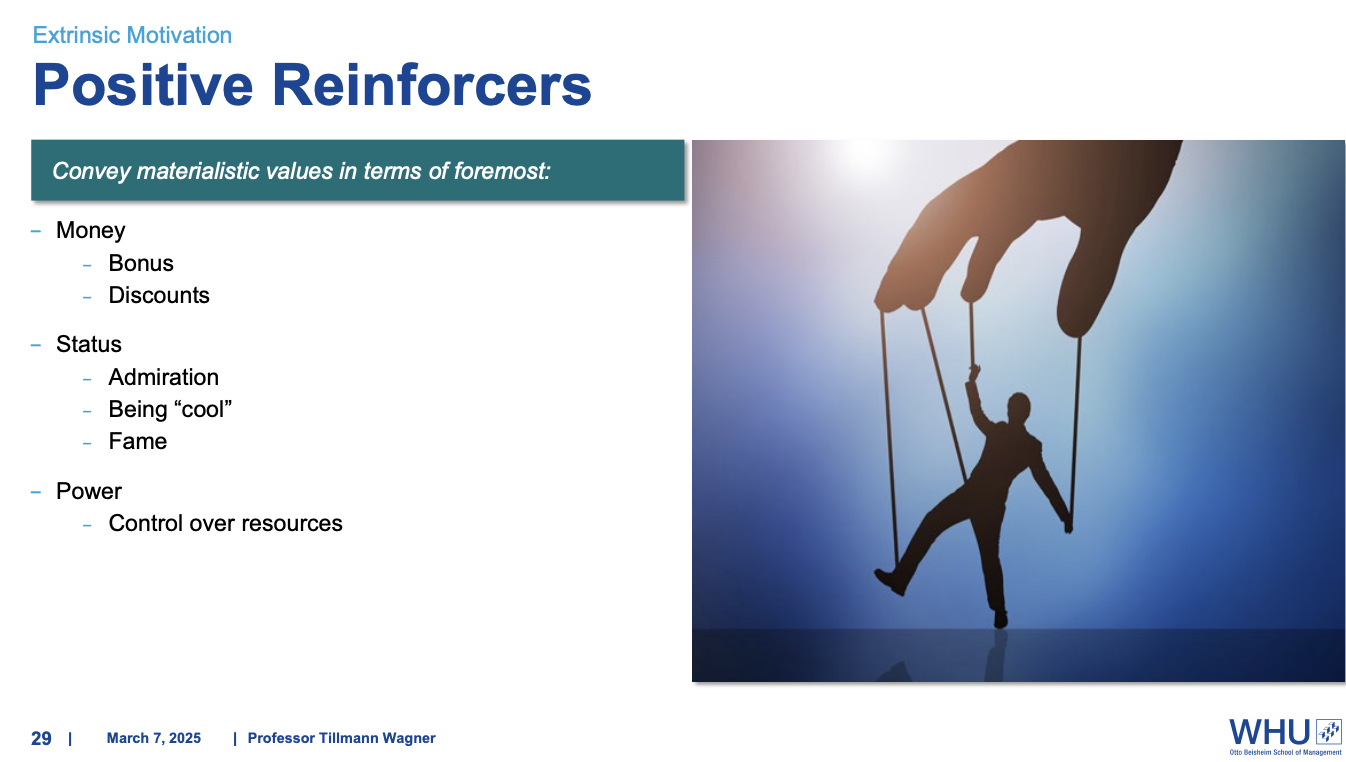
Extrinsic Motivation - Social Status
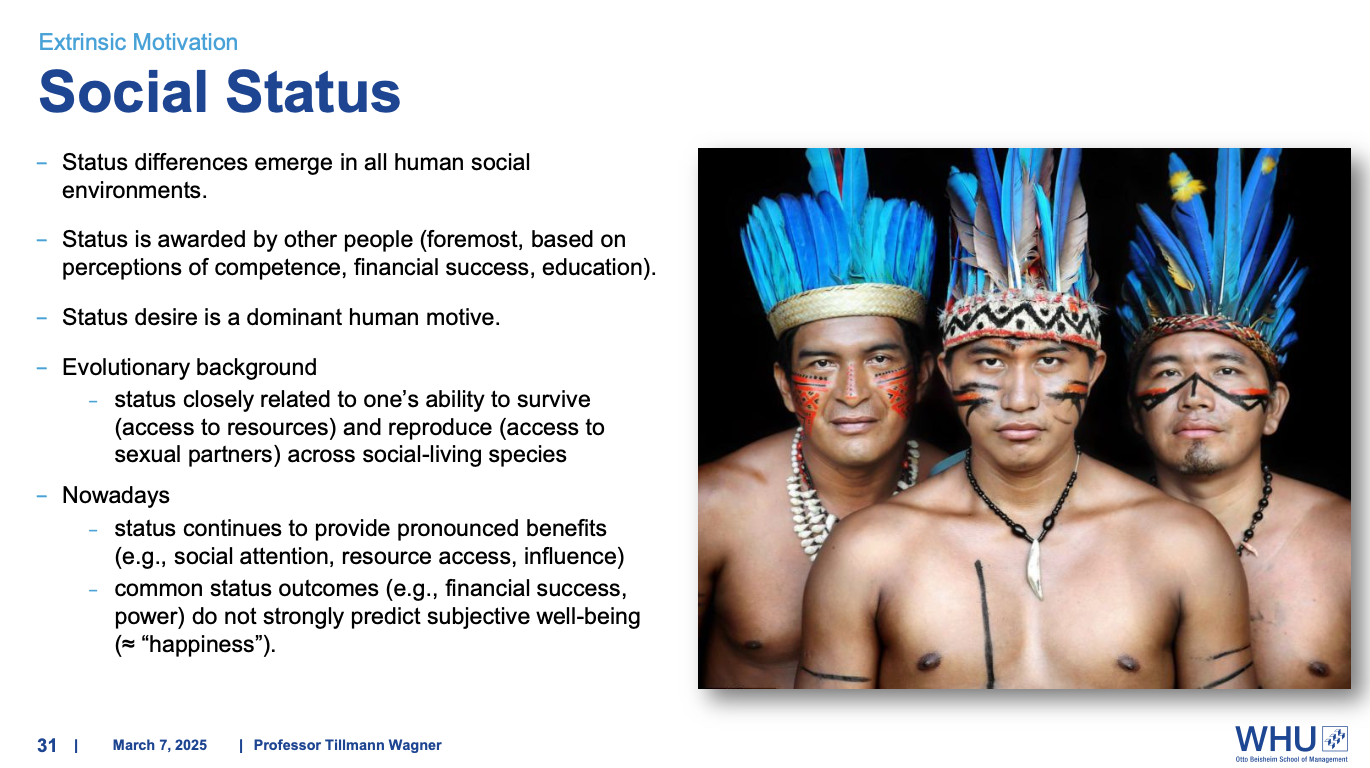
Relationship Marketing - (Customer) Social Status: Gains & Losses
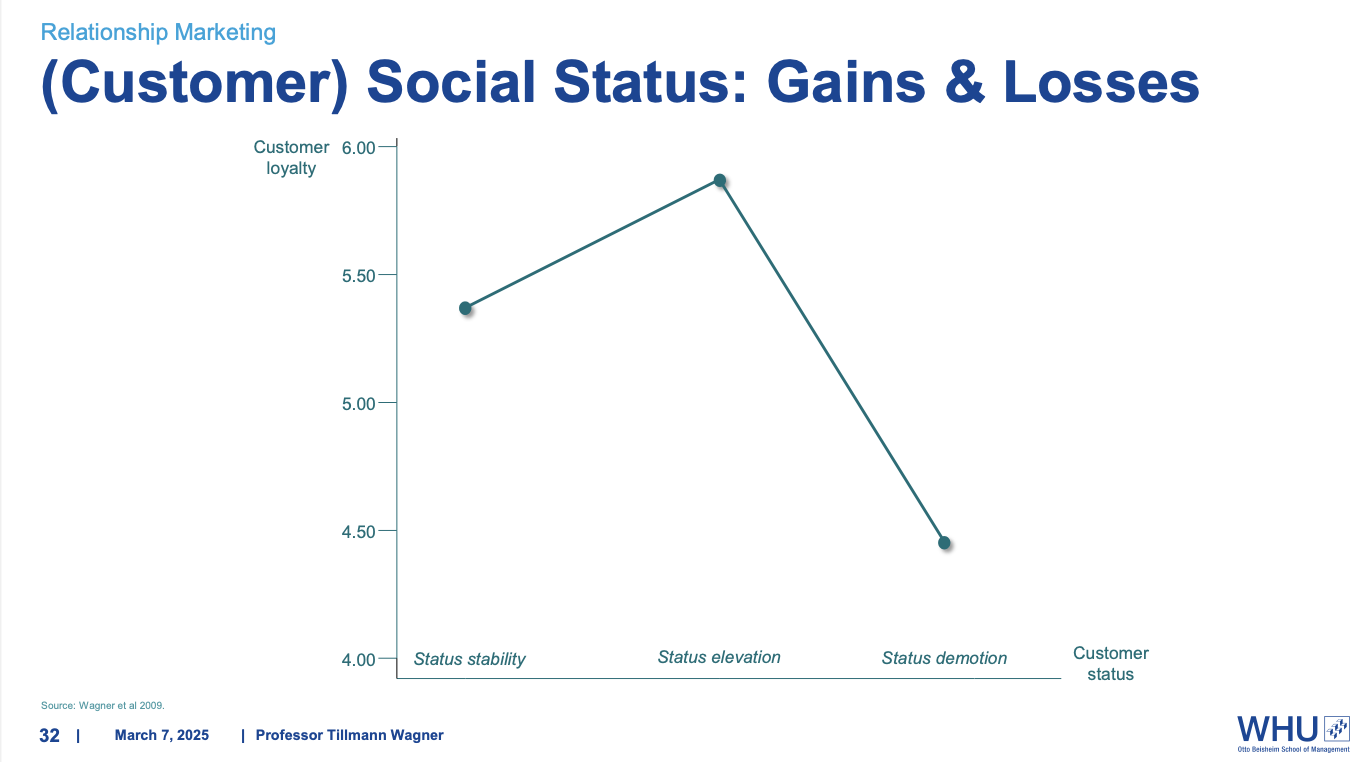
Chapter 2 - 2.3 Customer Engagement Marketing
Customer Engagement Marketing - Customer Engagement
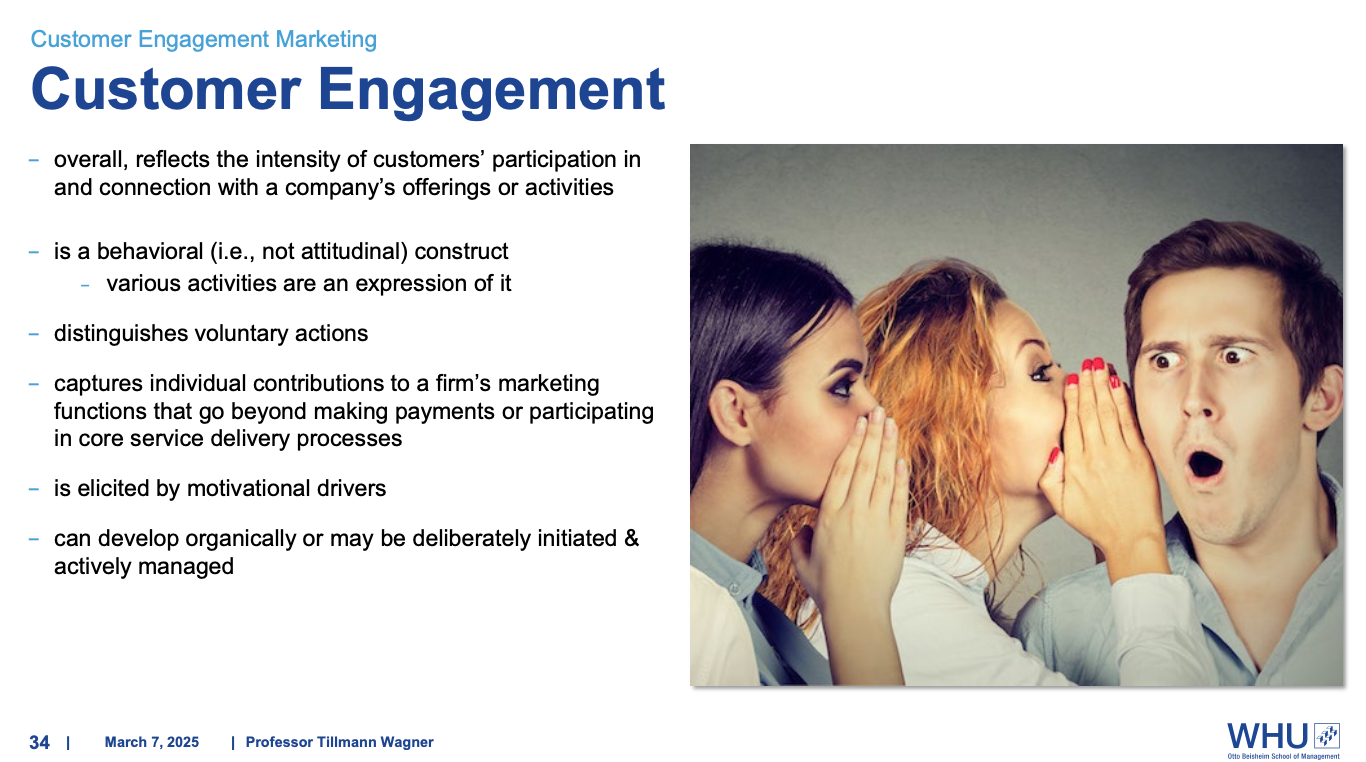
Customer Engagement Marketing - Definition
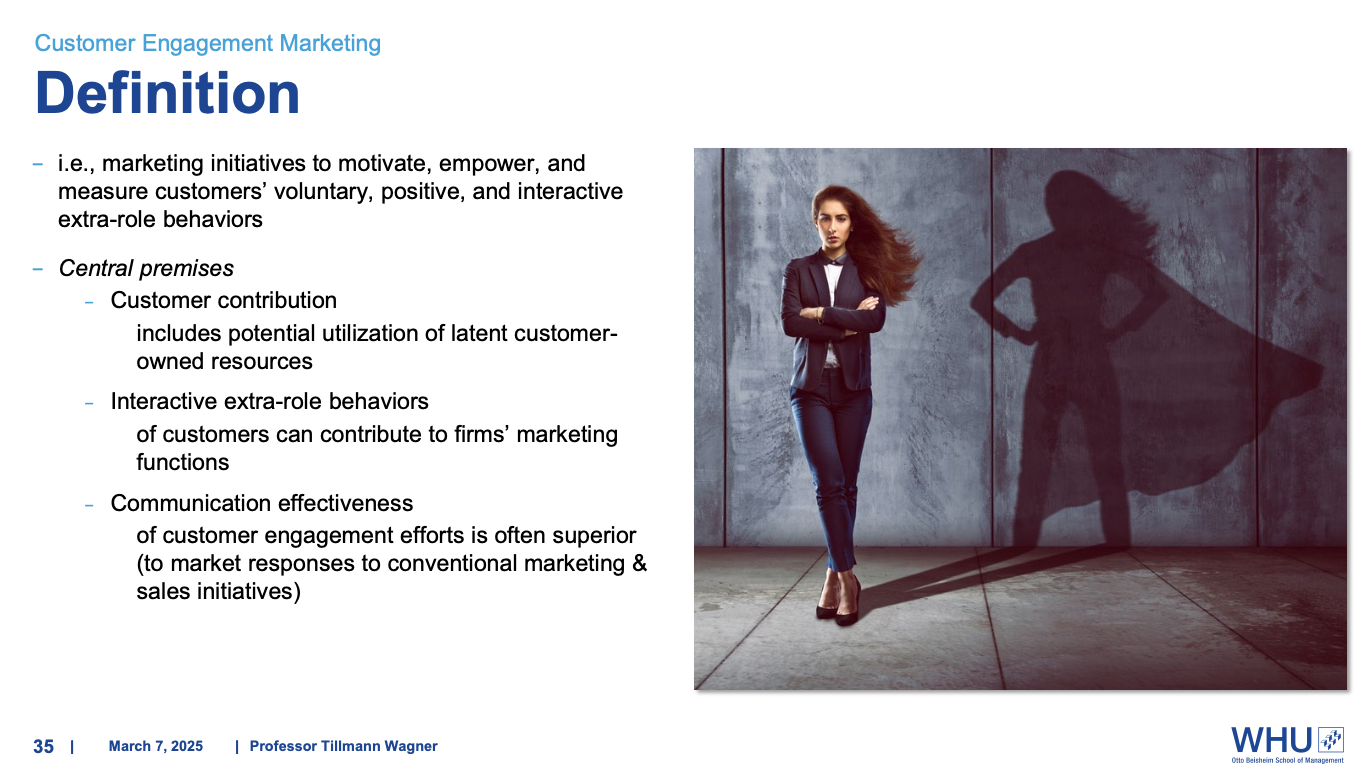
Customer Engagement Marketing - Perspective

Customer Engagement Marketing - Marketing Emphasis
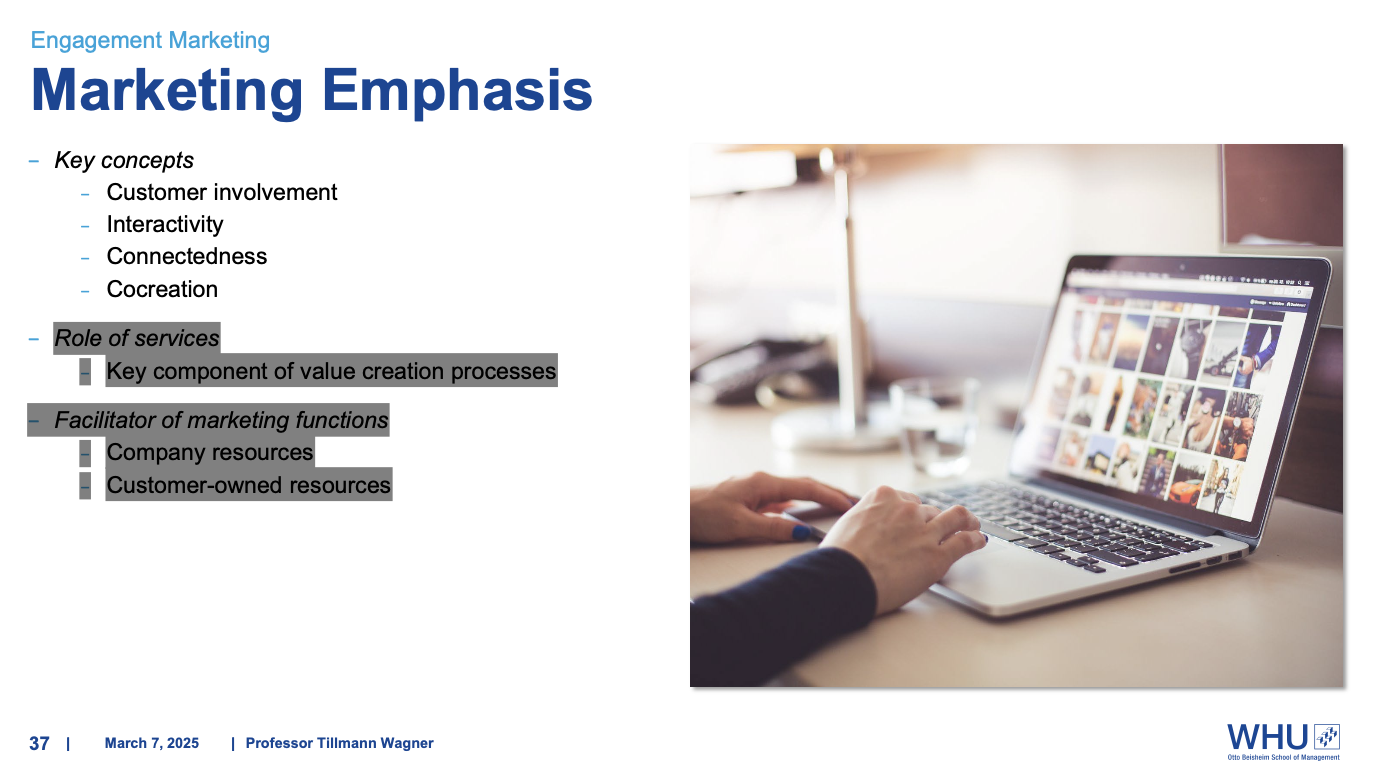
Customer Engagement Marketing - Customer-Owned Resources
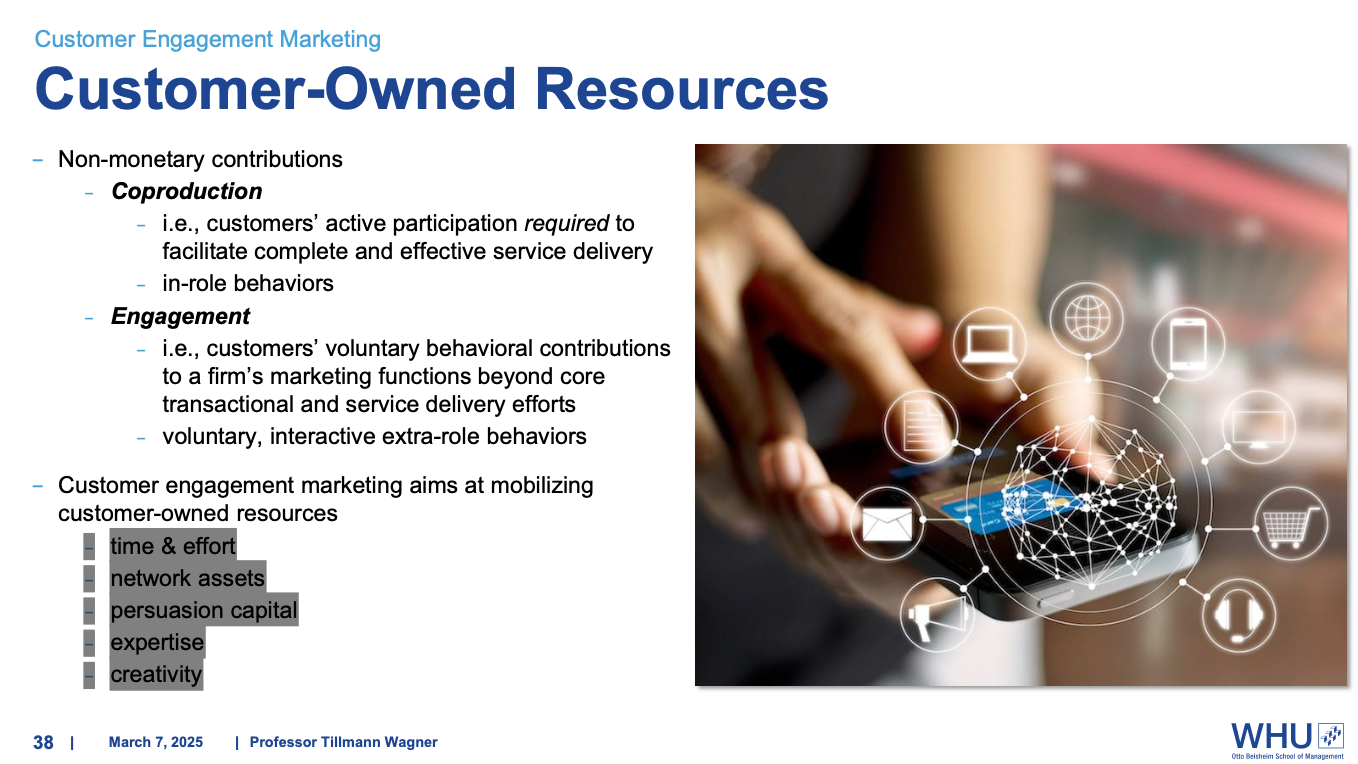
Customer Engagement Marketing - Engagement Behaviours

Chapter 2 - 2.4 Roadmap to Customer Impact
From Strategy to Impact - Roadmap to Customer Impact
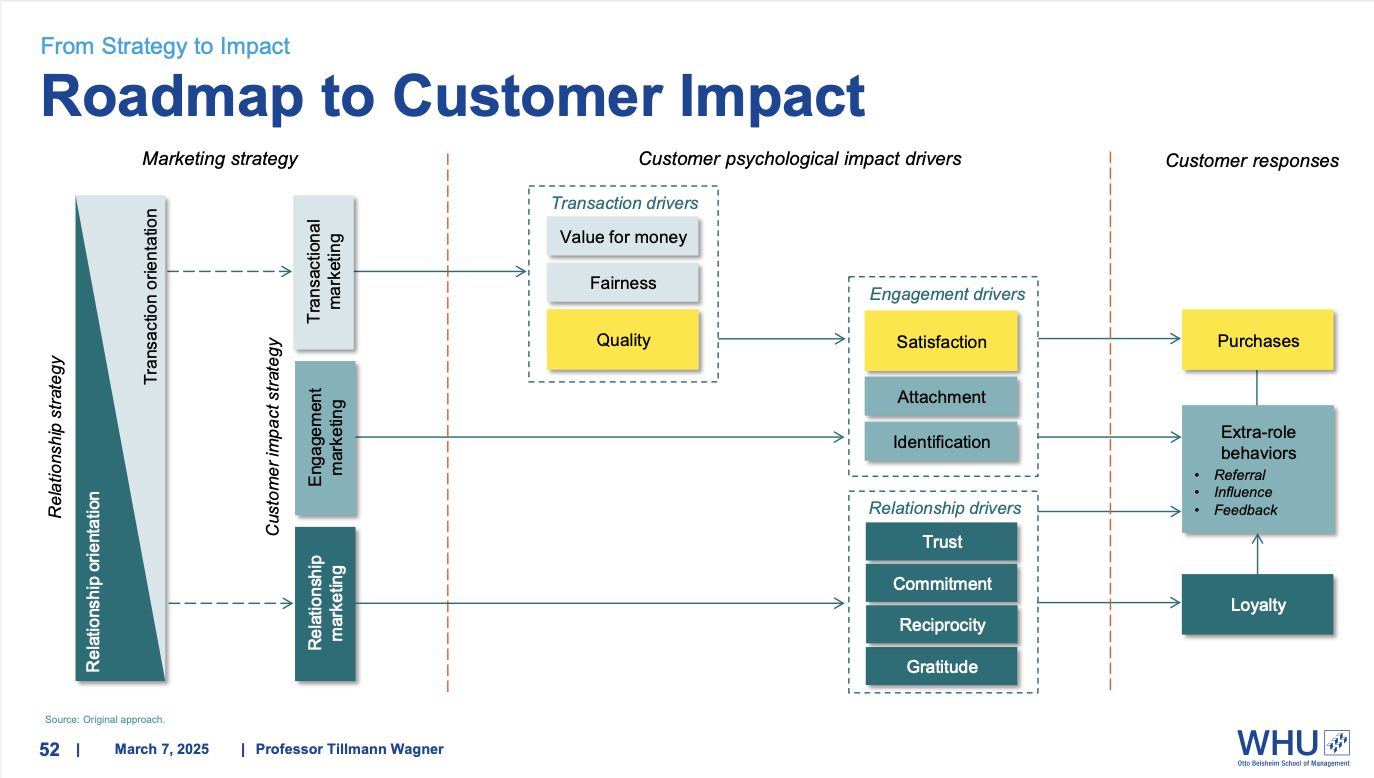
Marketing Strategy - Relationship Strategy
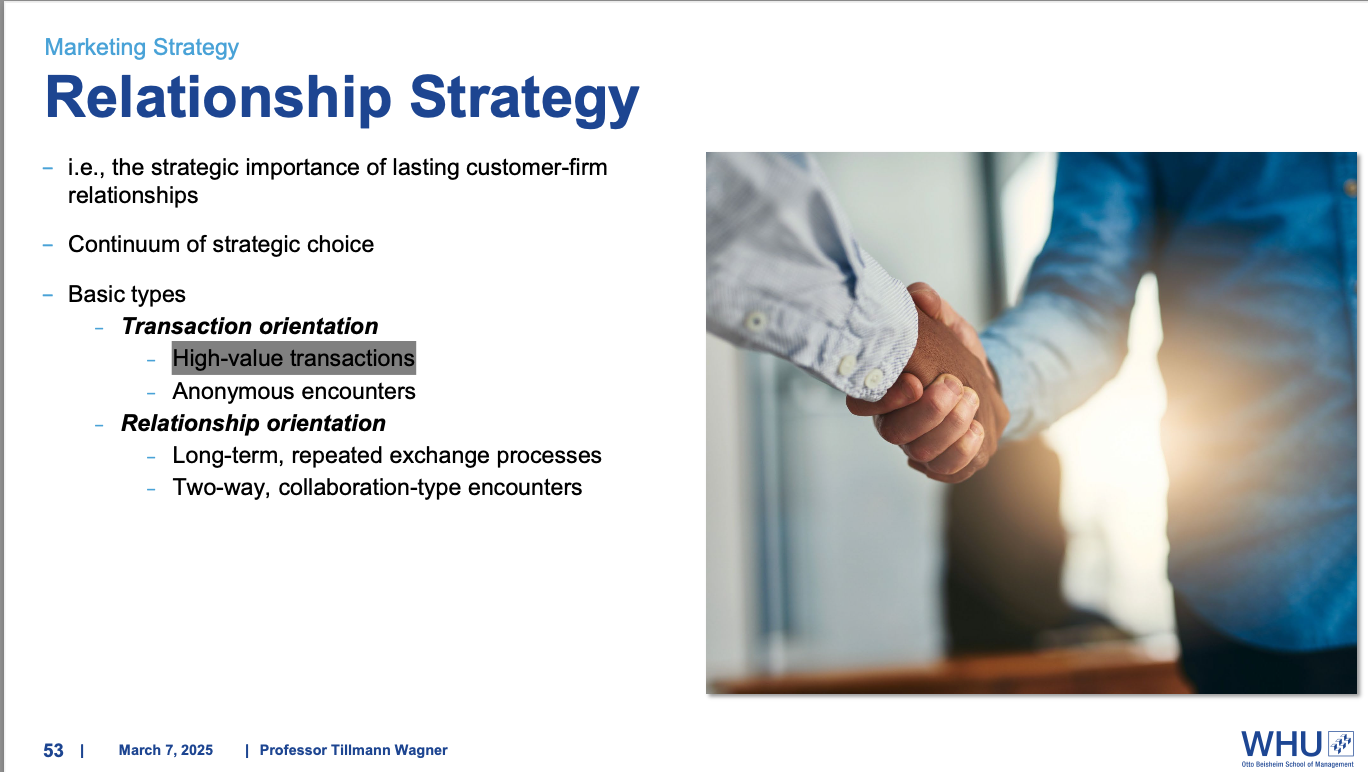
Customer Psychological Drivers - Transaction Drivers
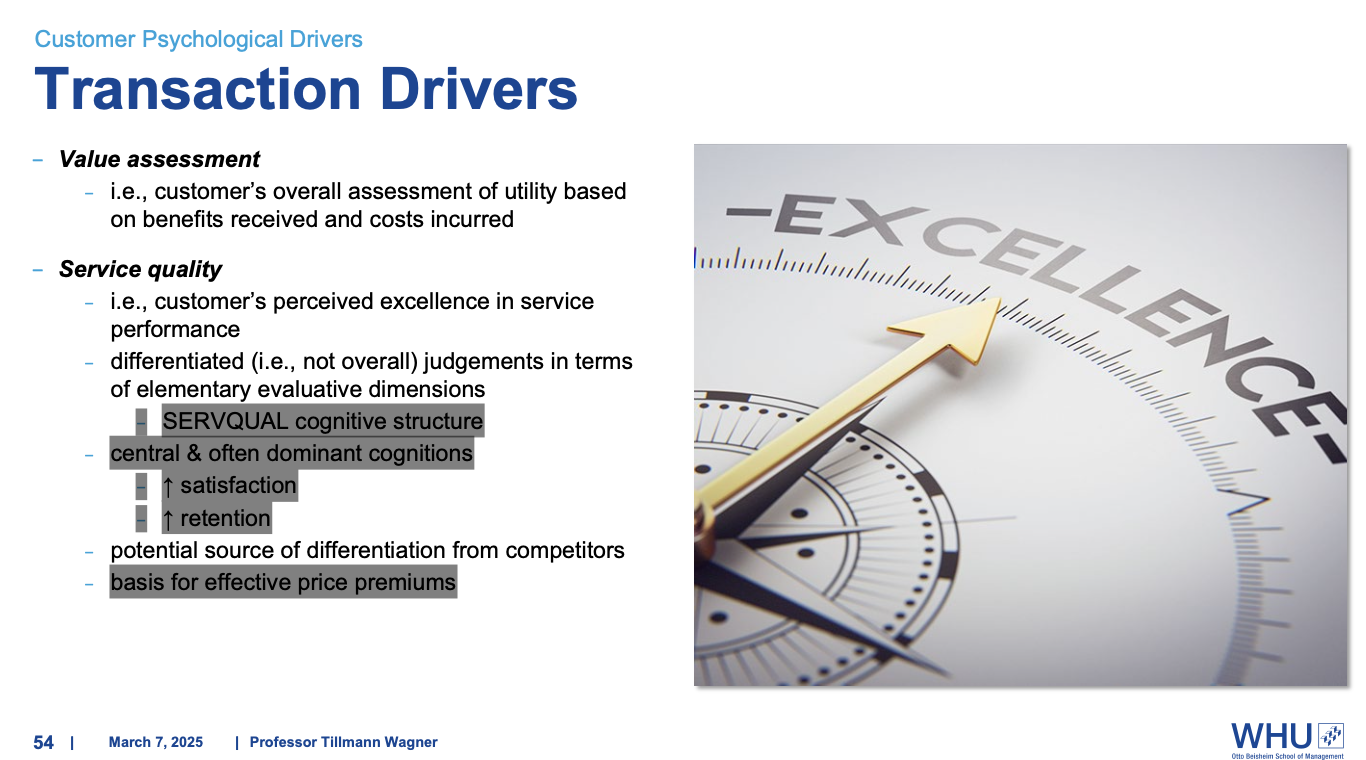
Customer Psychological Drivers - Relationship Drivers
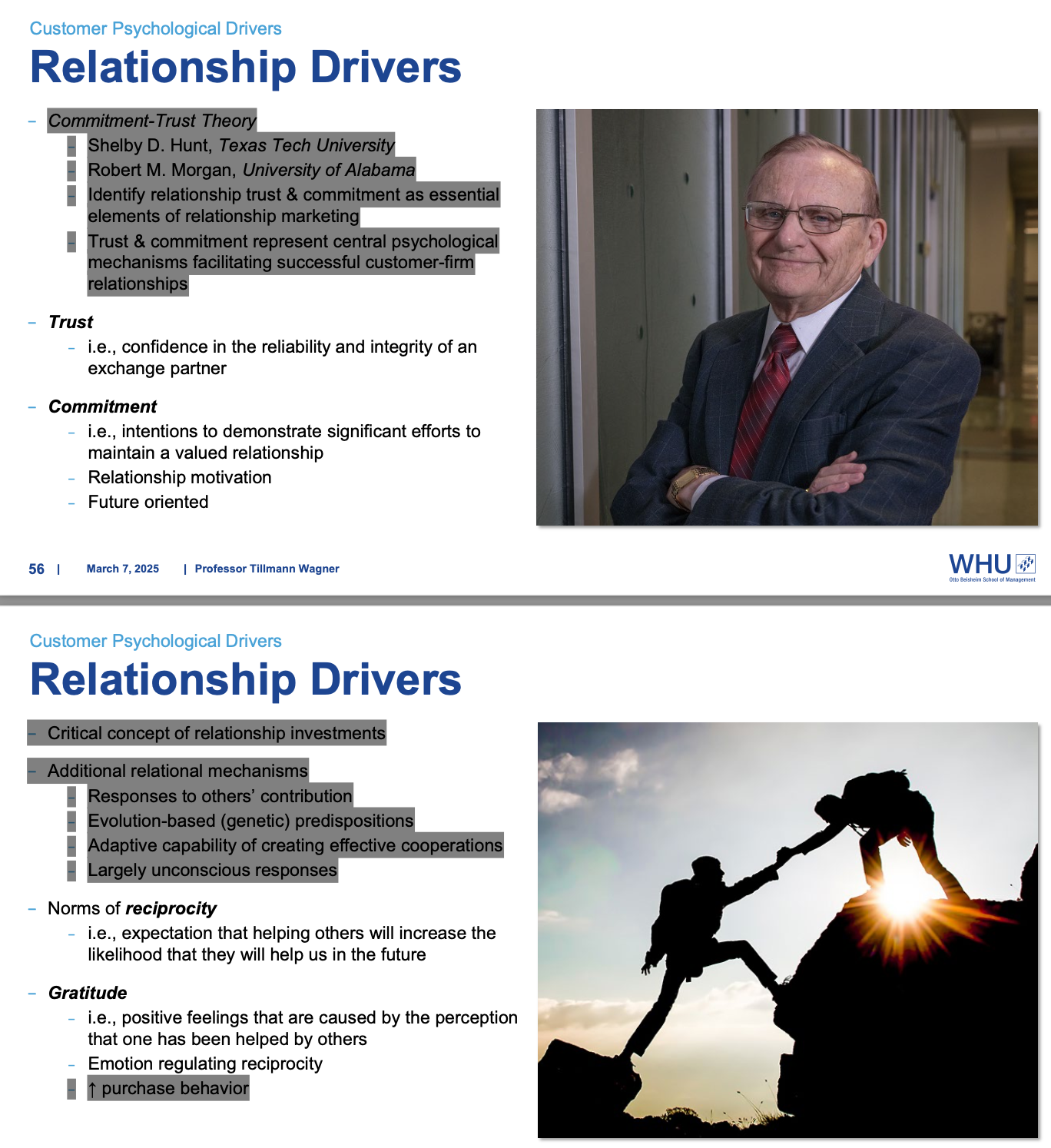
Customer Psychological Drivers - Engagement Drivers
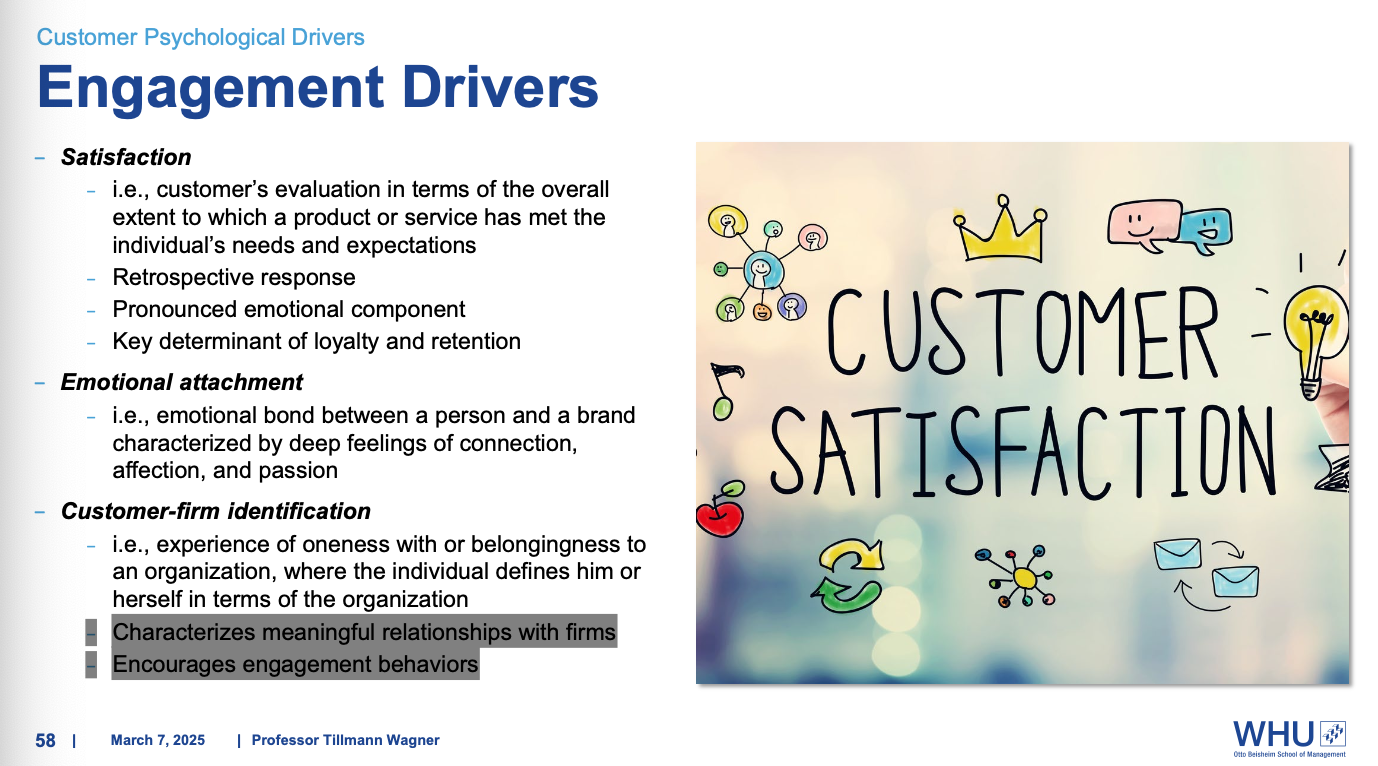
Customer Responses - Customer Loyalty
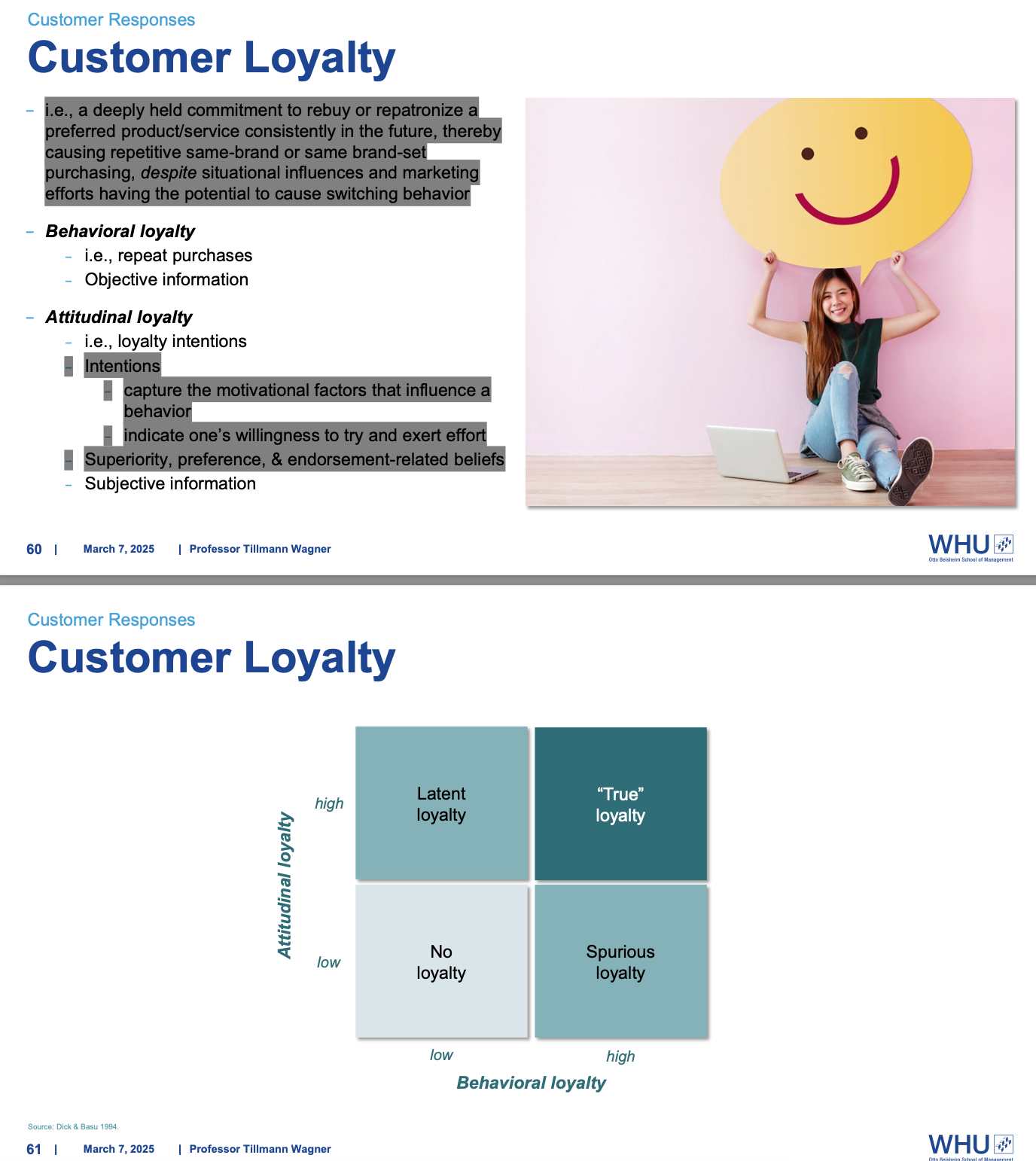
Chapter 2 - 2.5 Customer Loyalty Programs
Loyalty Programs - Customer Loyalty Programs
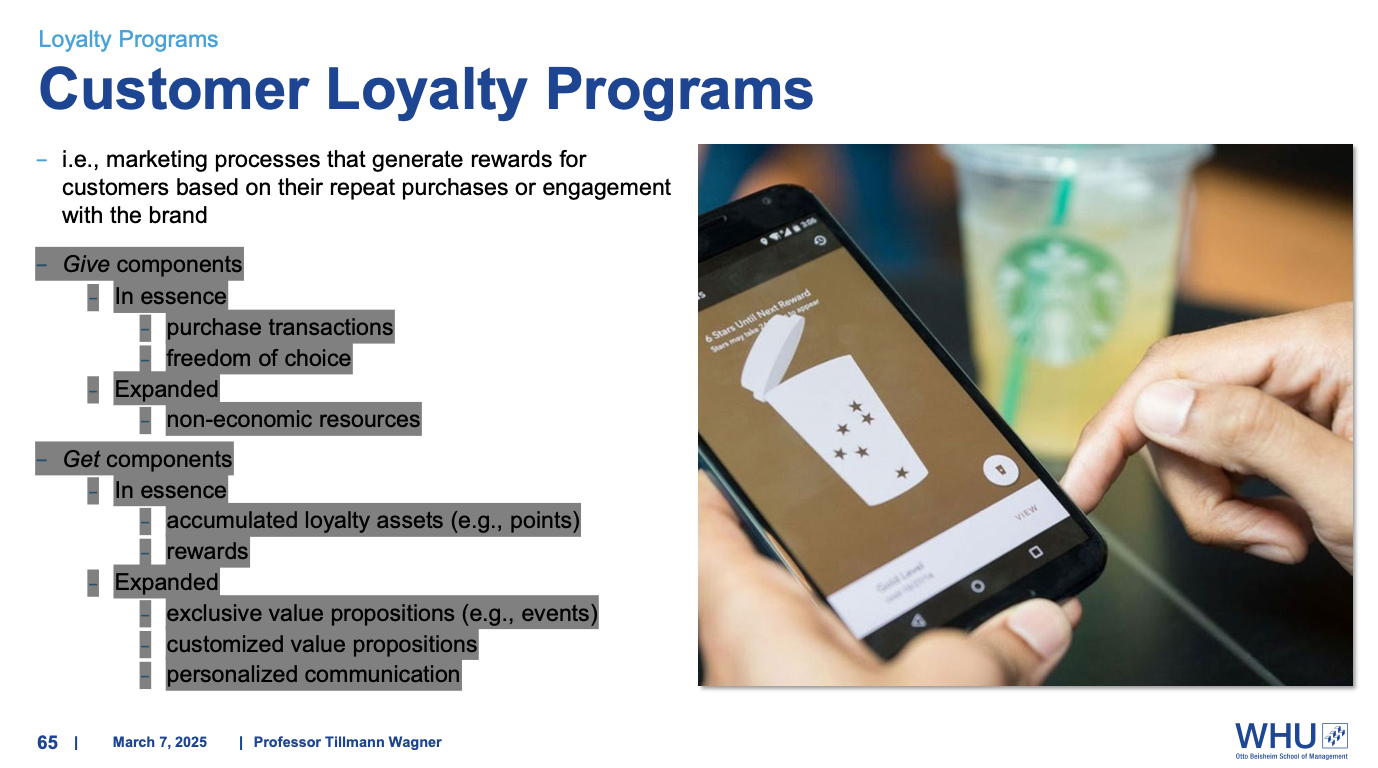
Loyalty Programs - Firm Objectives
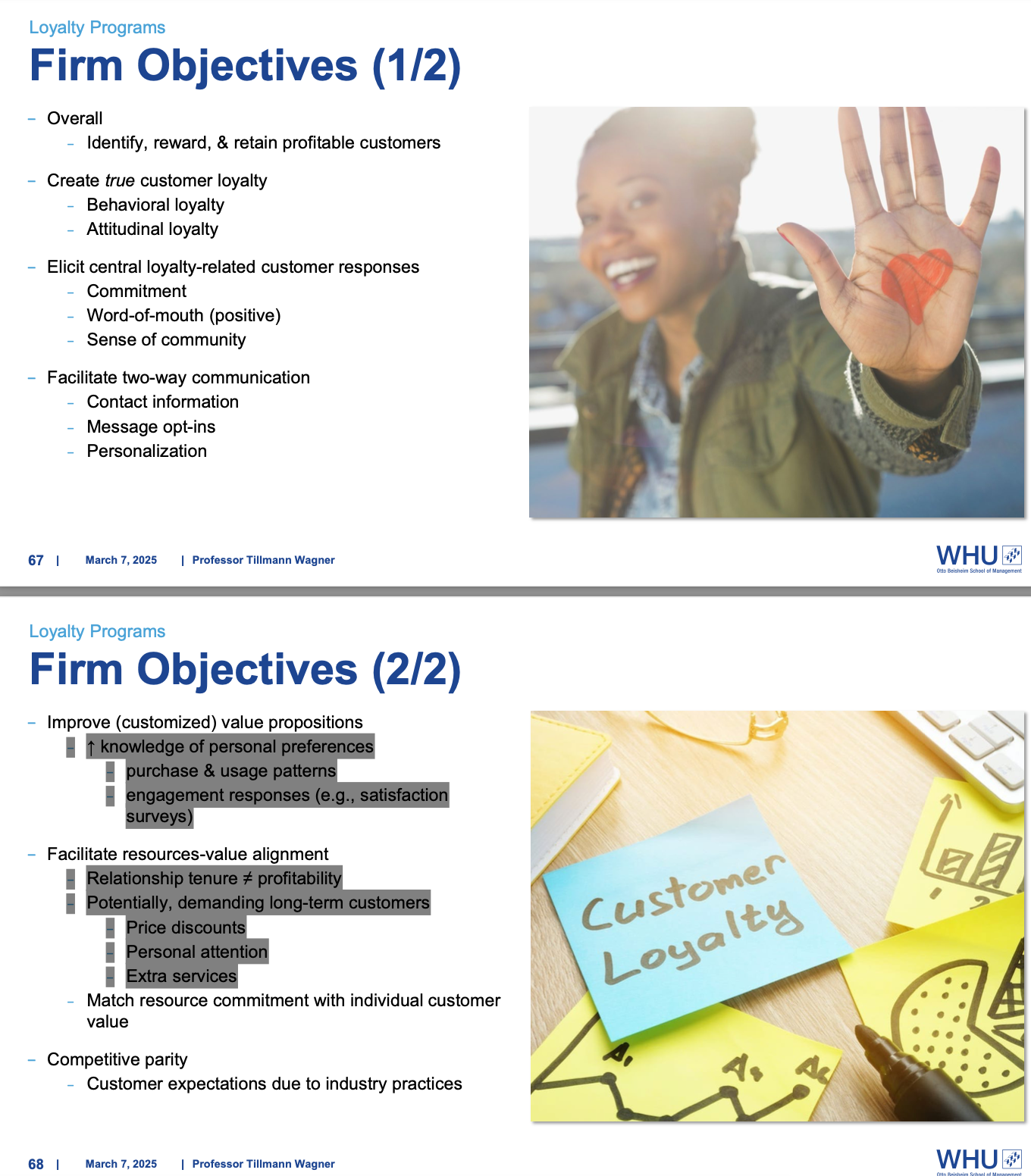
Chapter 3 - 3.1 Influences of
Social Environments - Influences of Social Presence
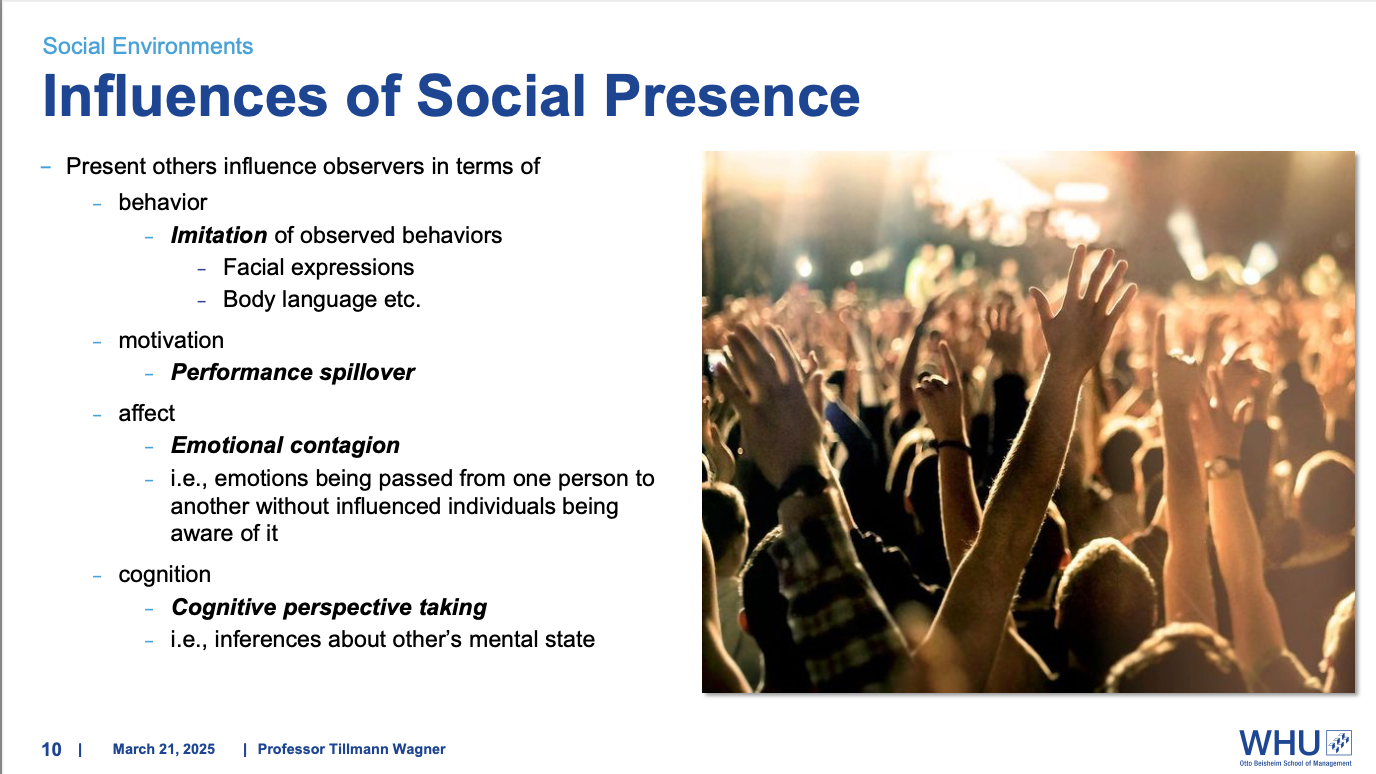
Social Environments in Services - Emotional Contagion
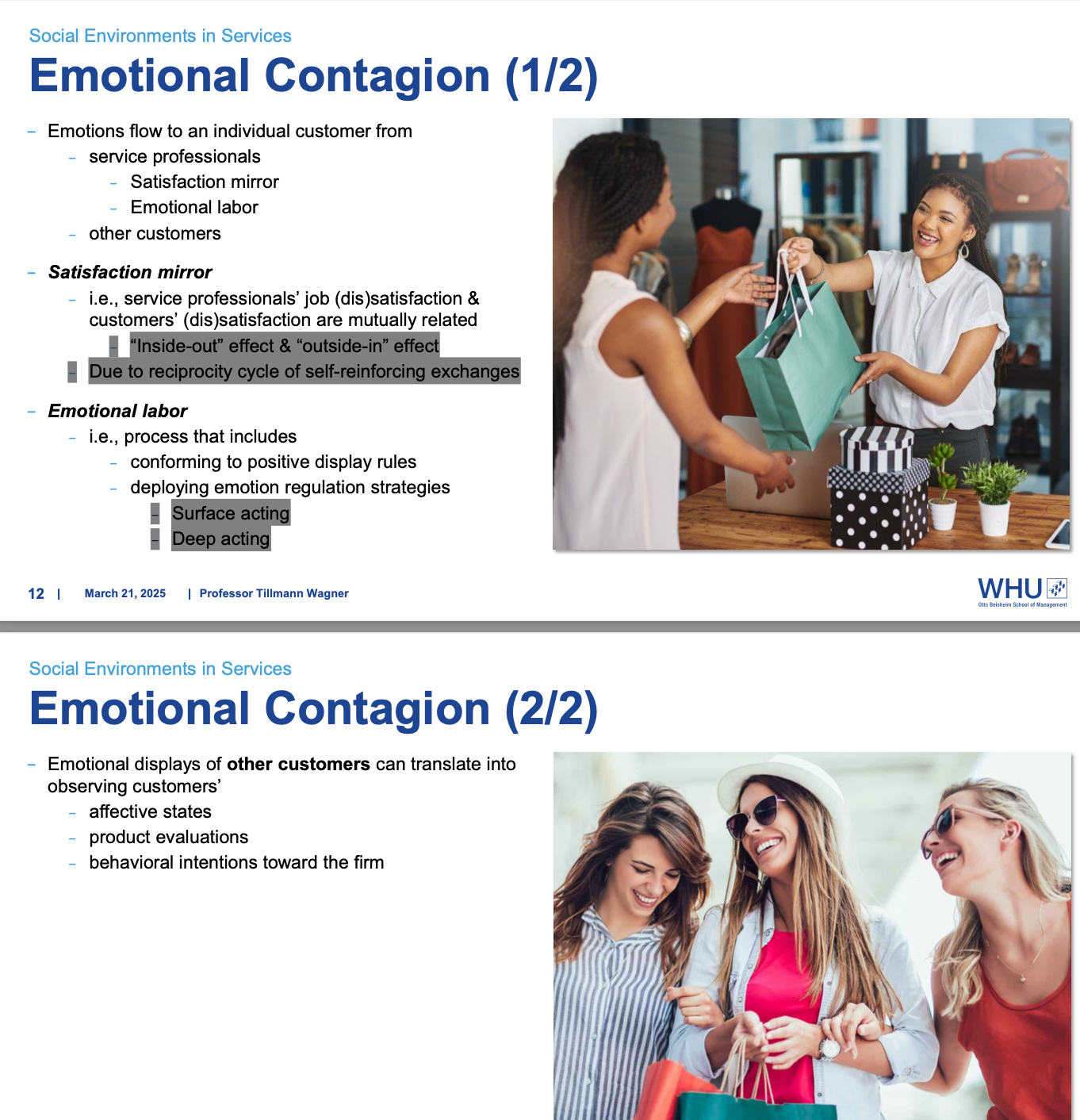
Chapter 3 - 3.2 Social Interdependencies in Services
Social Interdependence - Interdependence in Services
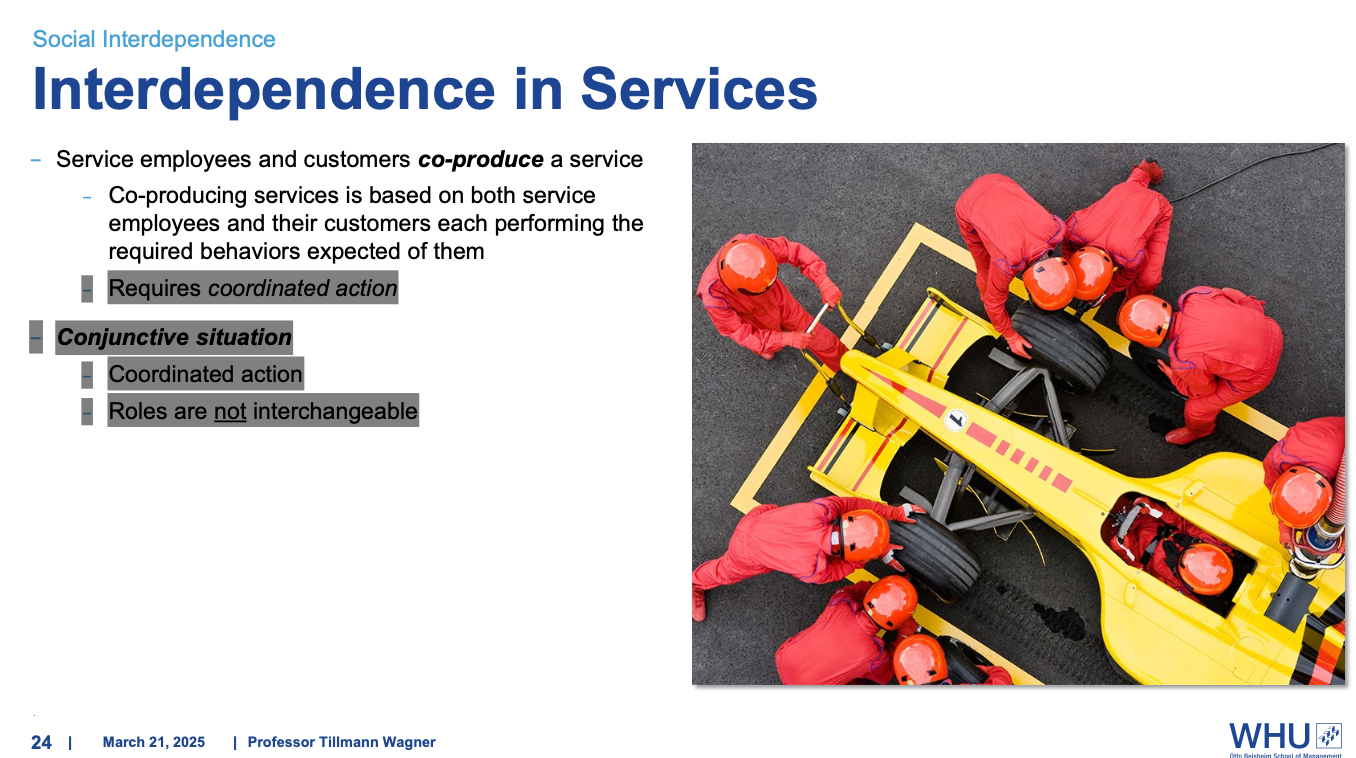
Social Interdependence - Service Customers as Partial “Employees”
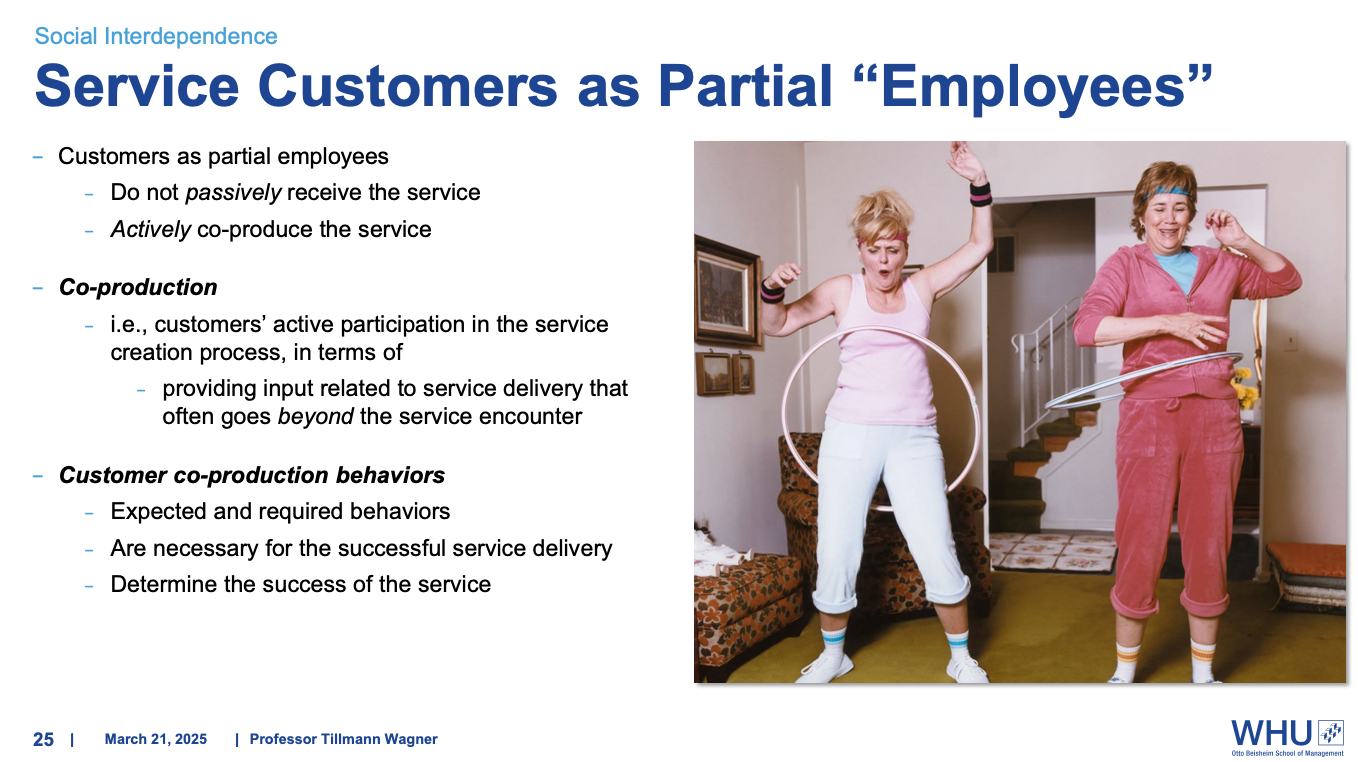
Social Interdependence - Customer Power
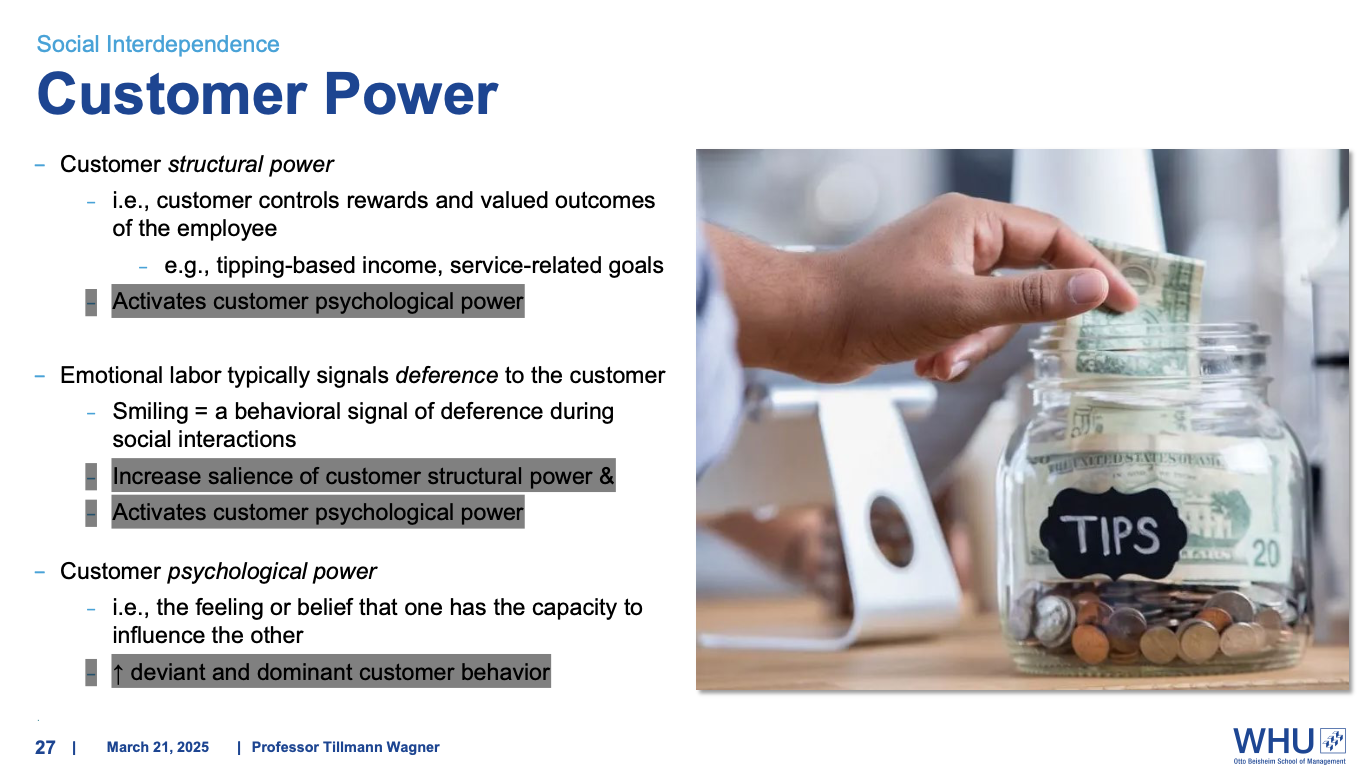
Chapter 3 - 3.3 Customer Participation
Customer Participation - Customer Compliance
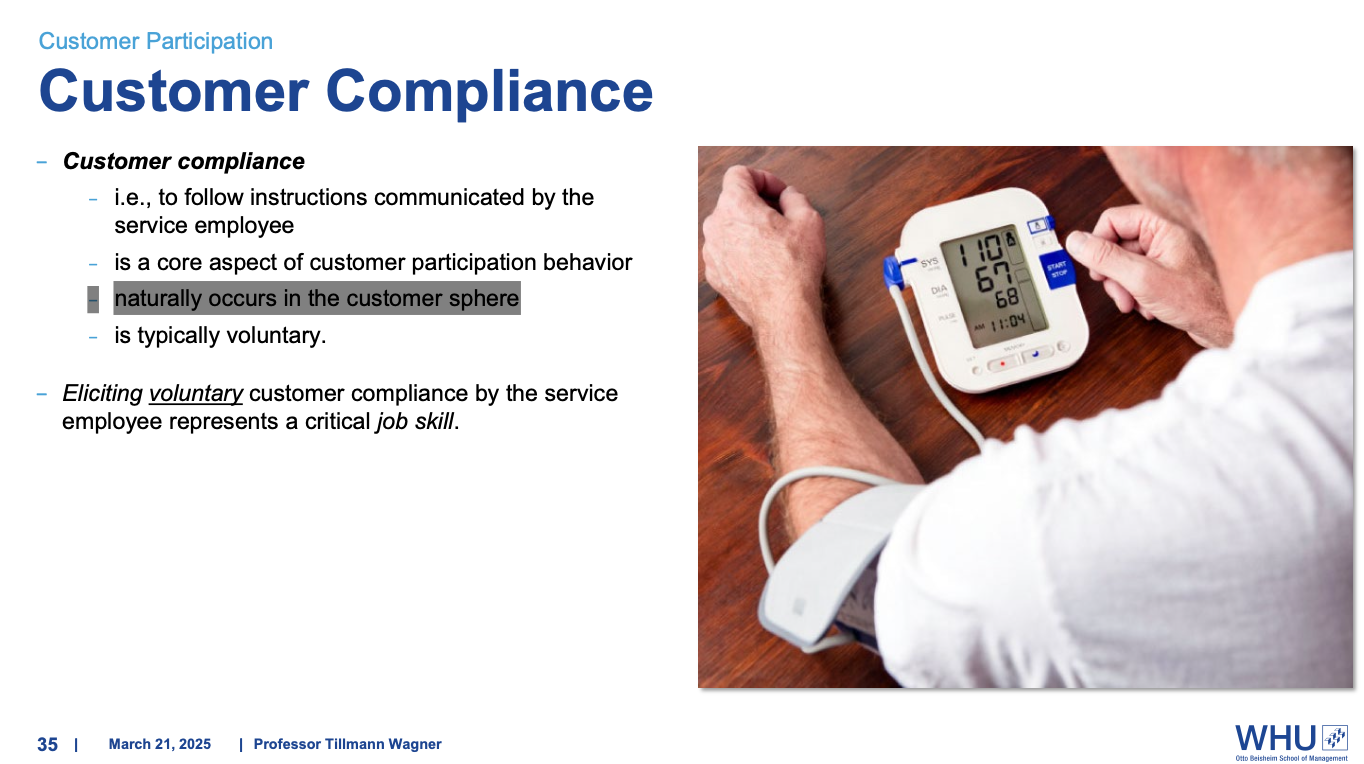
Customer Participation - Customer Non-Compliance
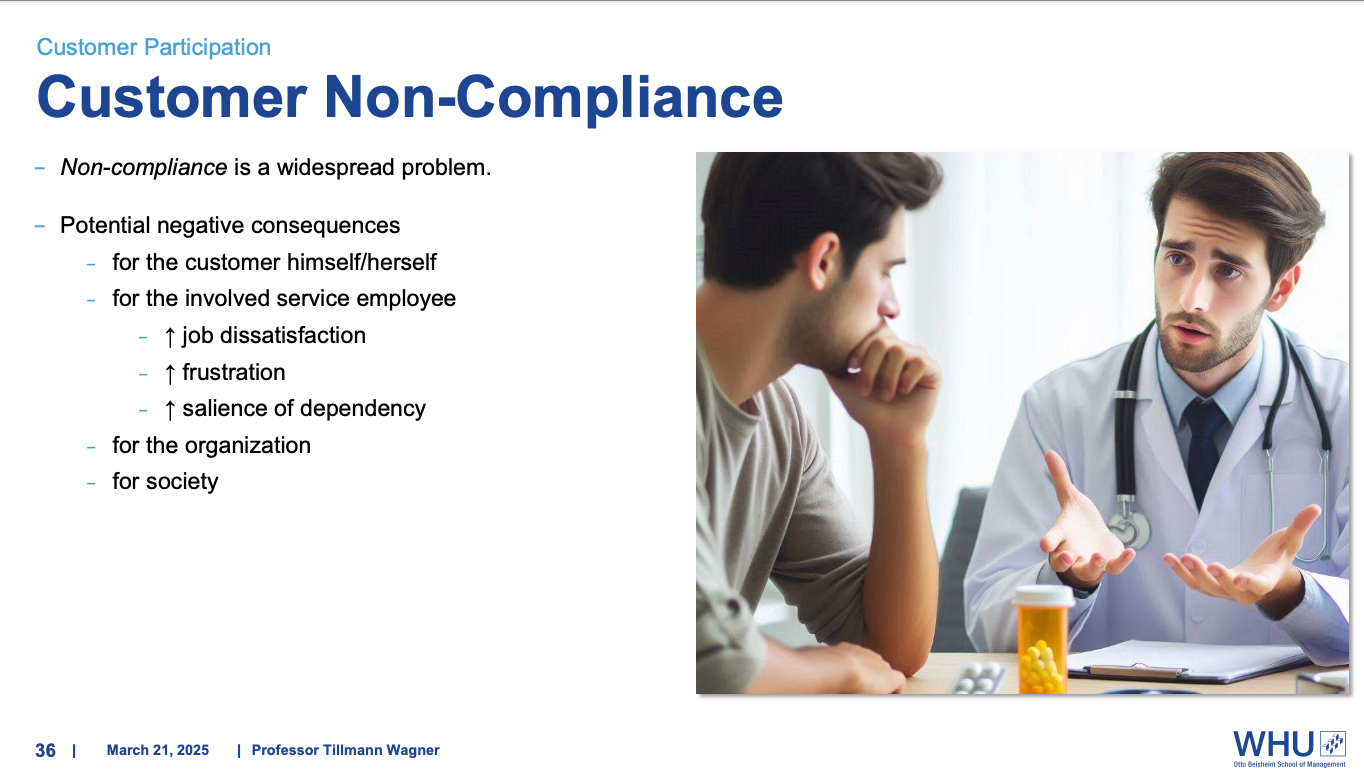
Customer Participation - Customer-Role Neglect
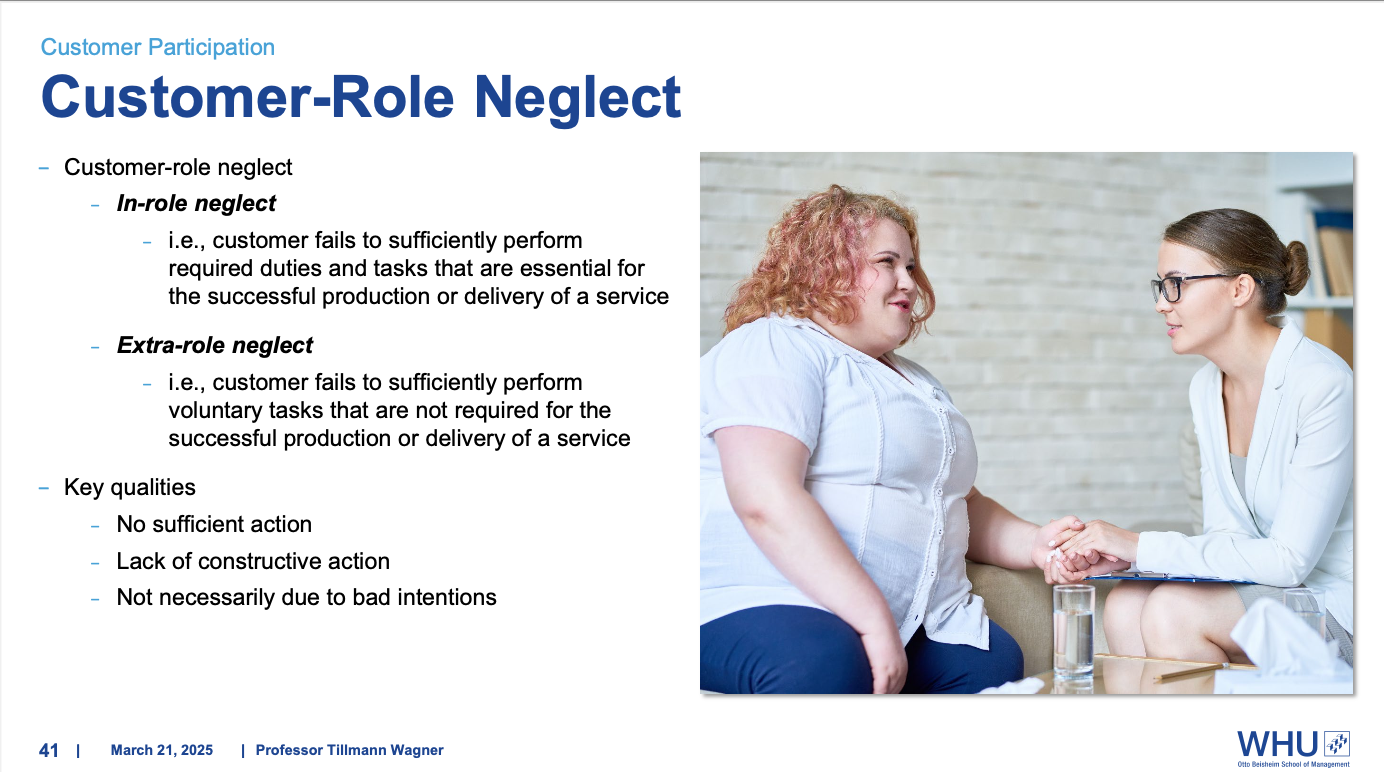
Chapter 4 - 4.2 Psychological Foundations
Psychological Foundations - Role of Experience
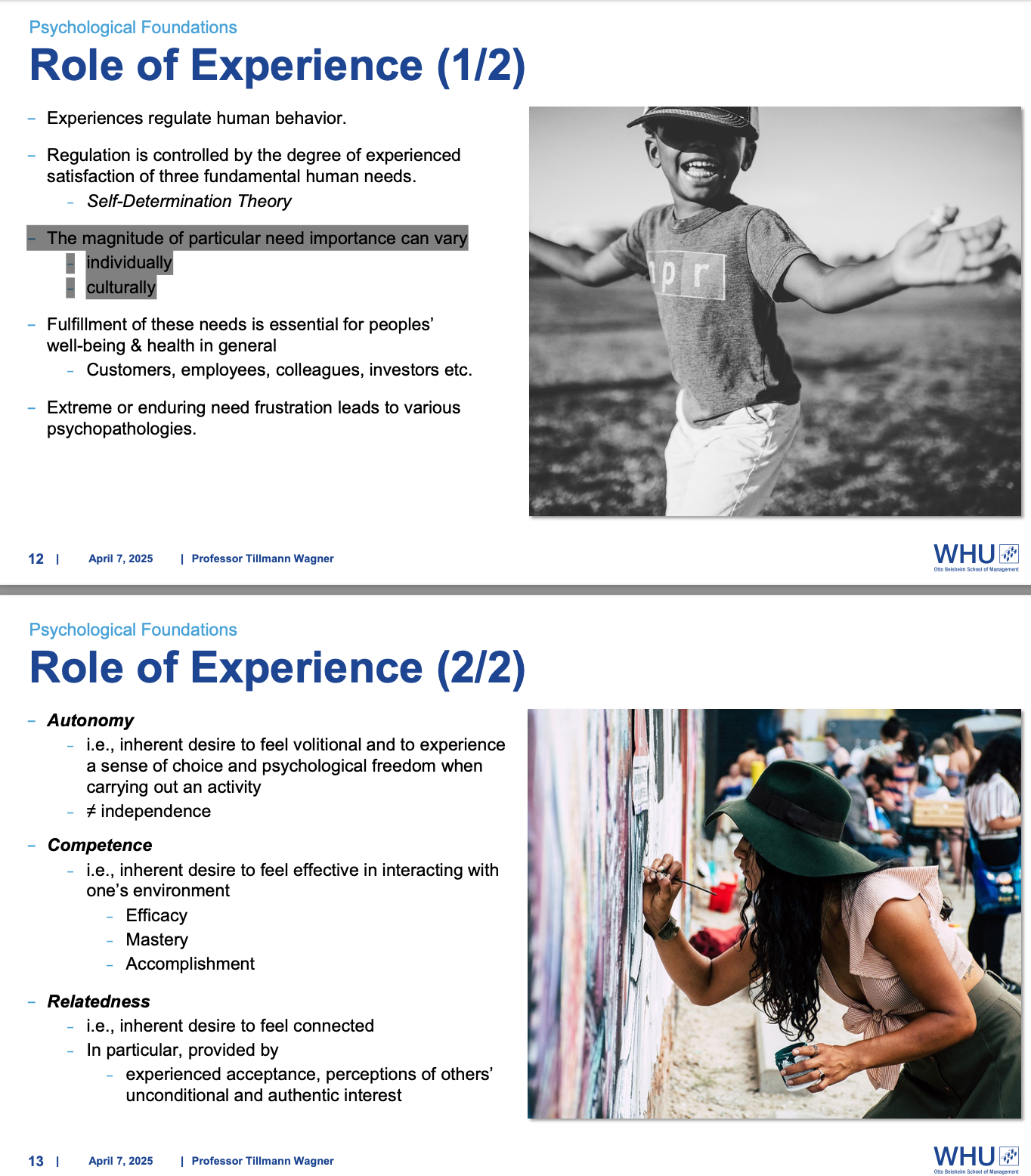
Psychological Foundations - Why does my dog like my neighbour?
- Intuitive explanation neighbour shows affection to the dog
- Some neighbours don’t like dogs, dog still like those neighbours
- Talk to the neighbours, for the dog they think if the owner talks to them they’re part of the pack, mental representation, something means something
- We see more than what is actually there
Psychological Foundations - Subjective Nature of Experience
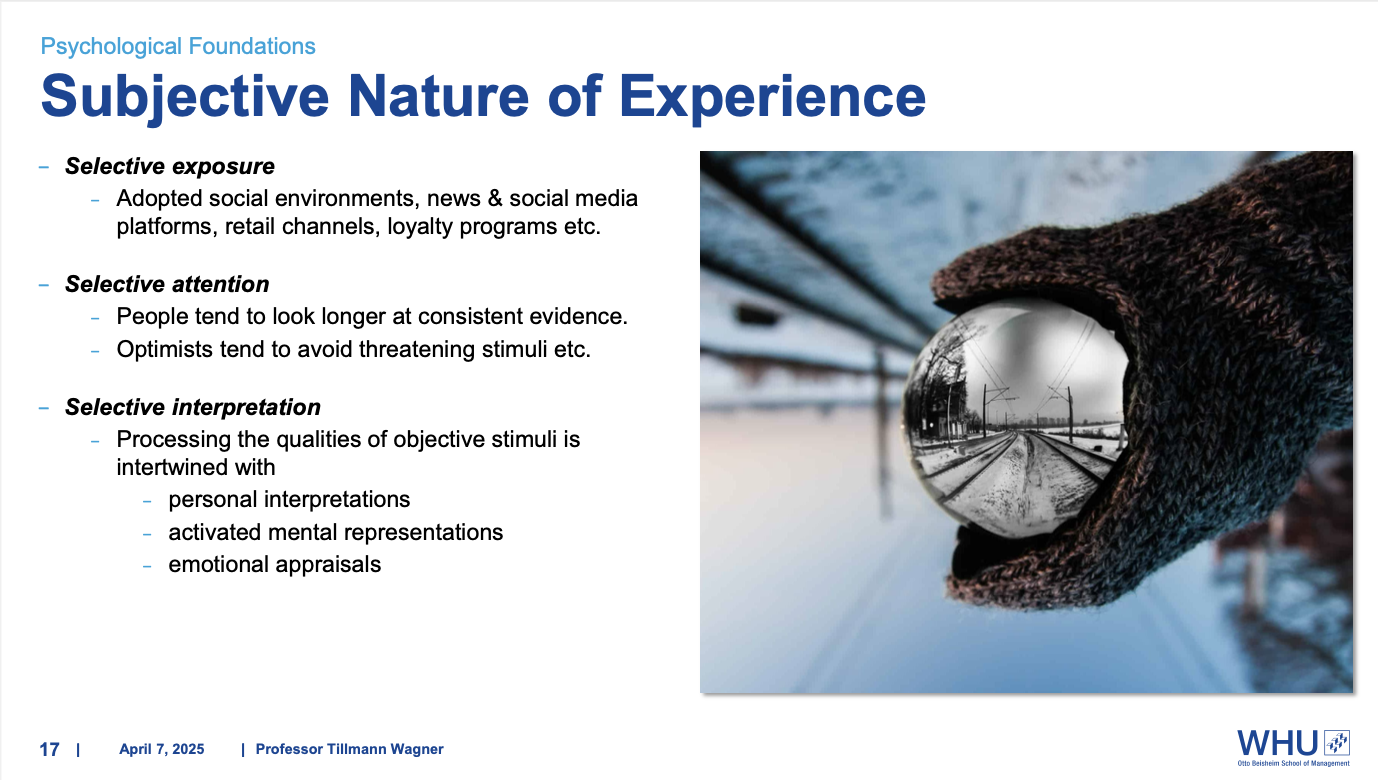
Psychological Foundations - Causations of Experience
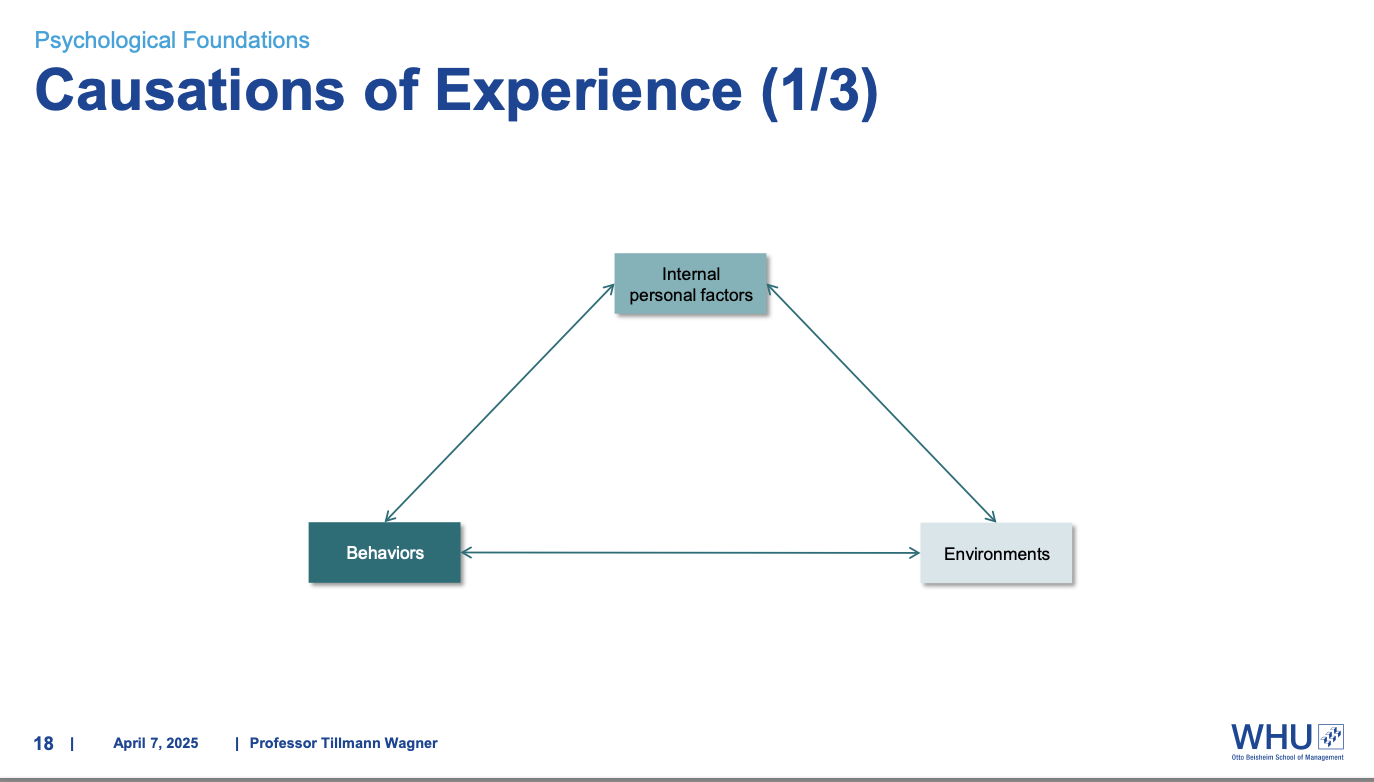
Psychological Foundations - Targeting Emotional Motivators
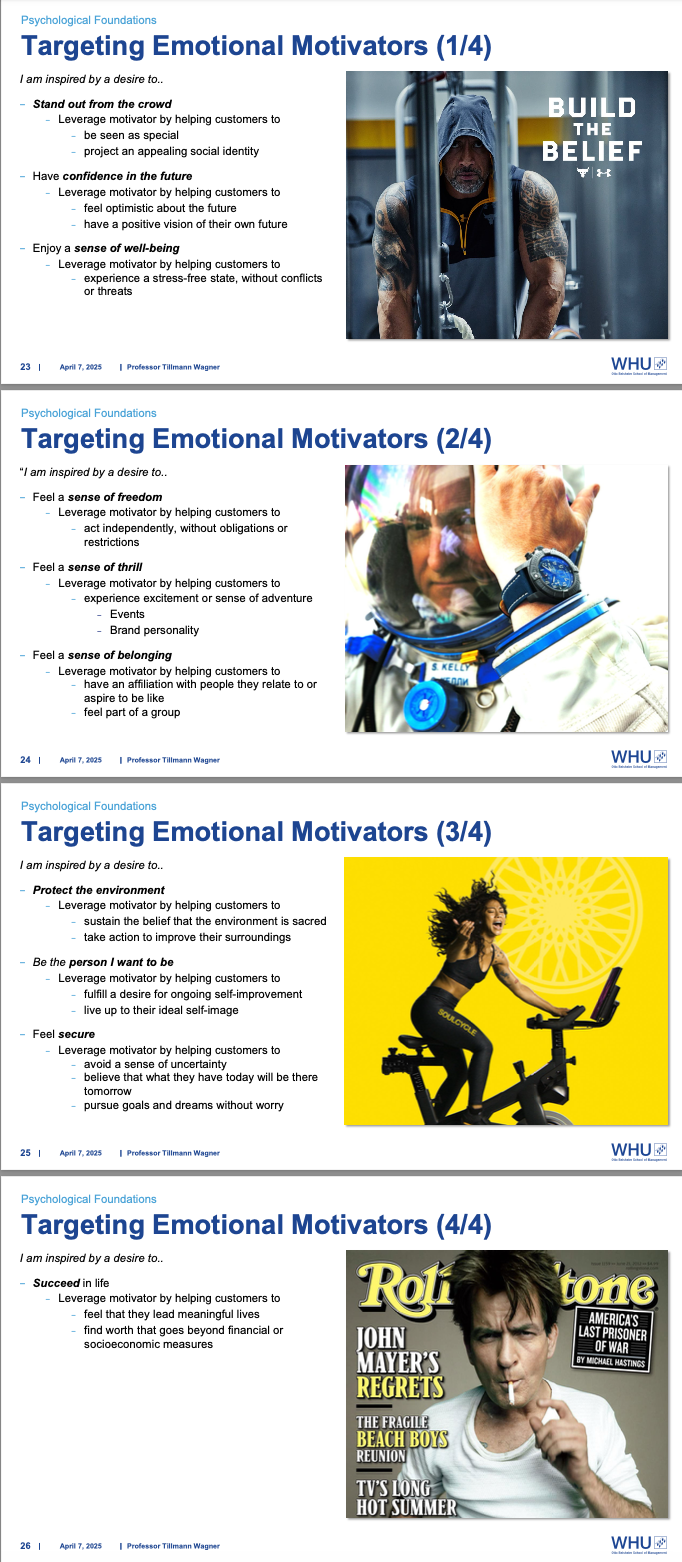
Marketing Mix Deployment - Services-Marketing Mix Elements
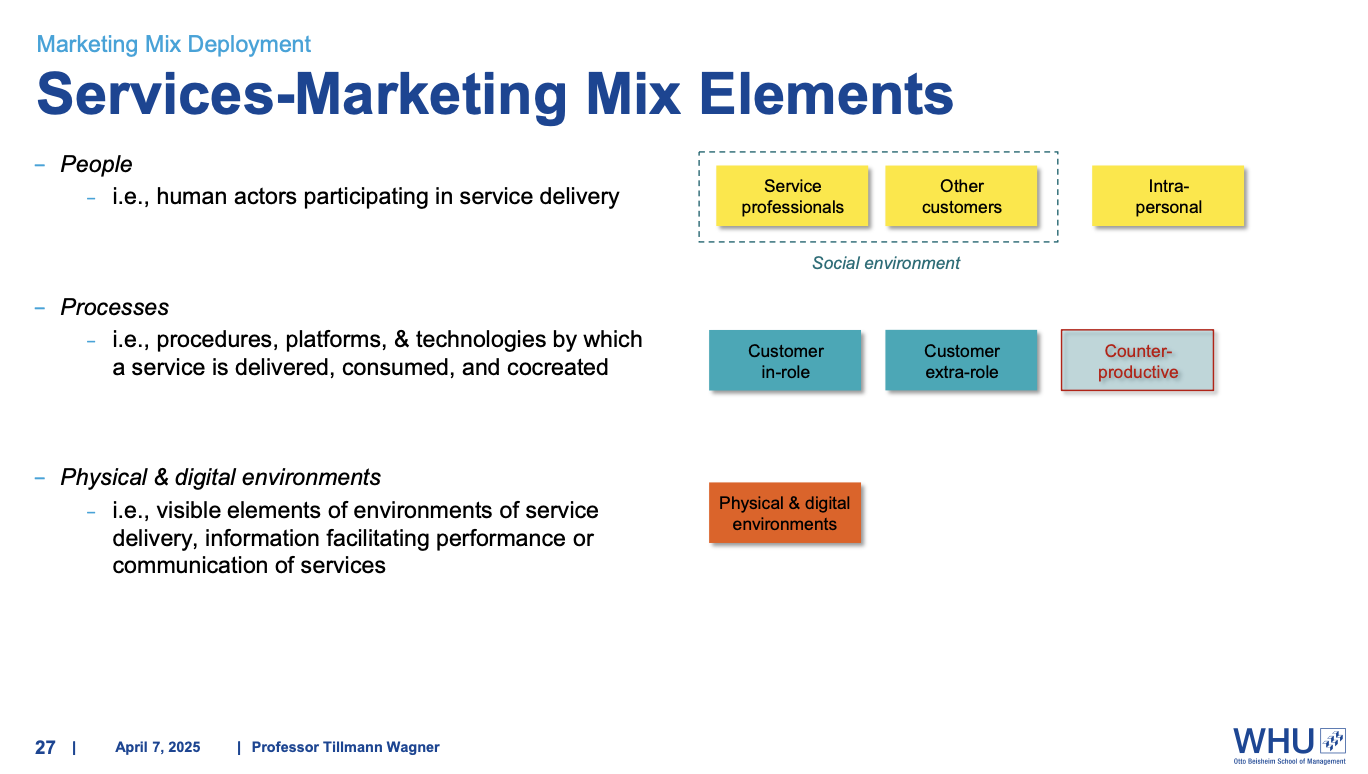
Marketing Mix Deployment - Mix Elements & Customer Experience
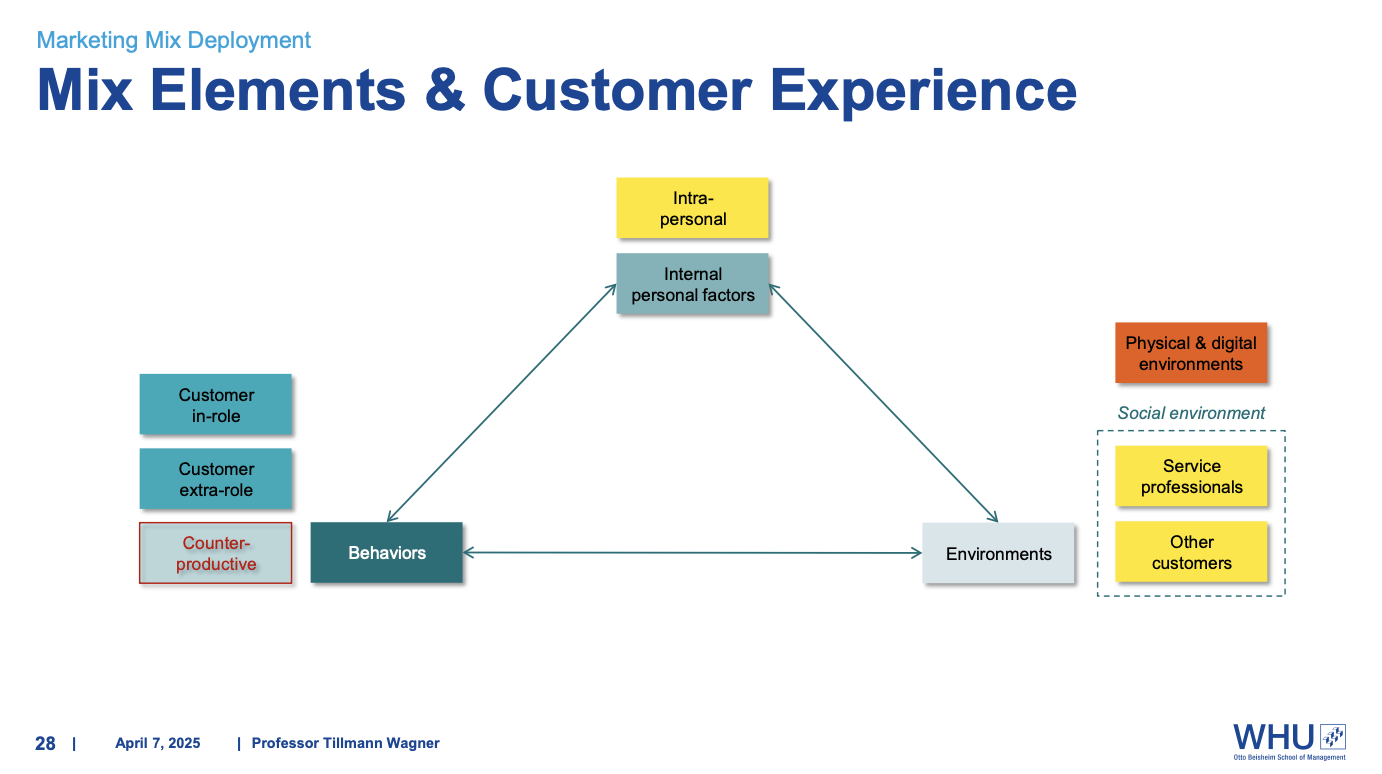
Chapter 4 - 4.3 Human Experiences
Customer Experience Foundation - Experience Types
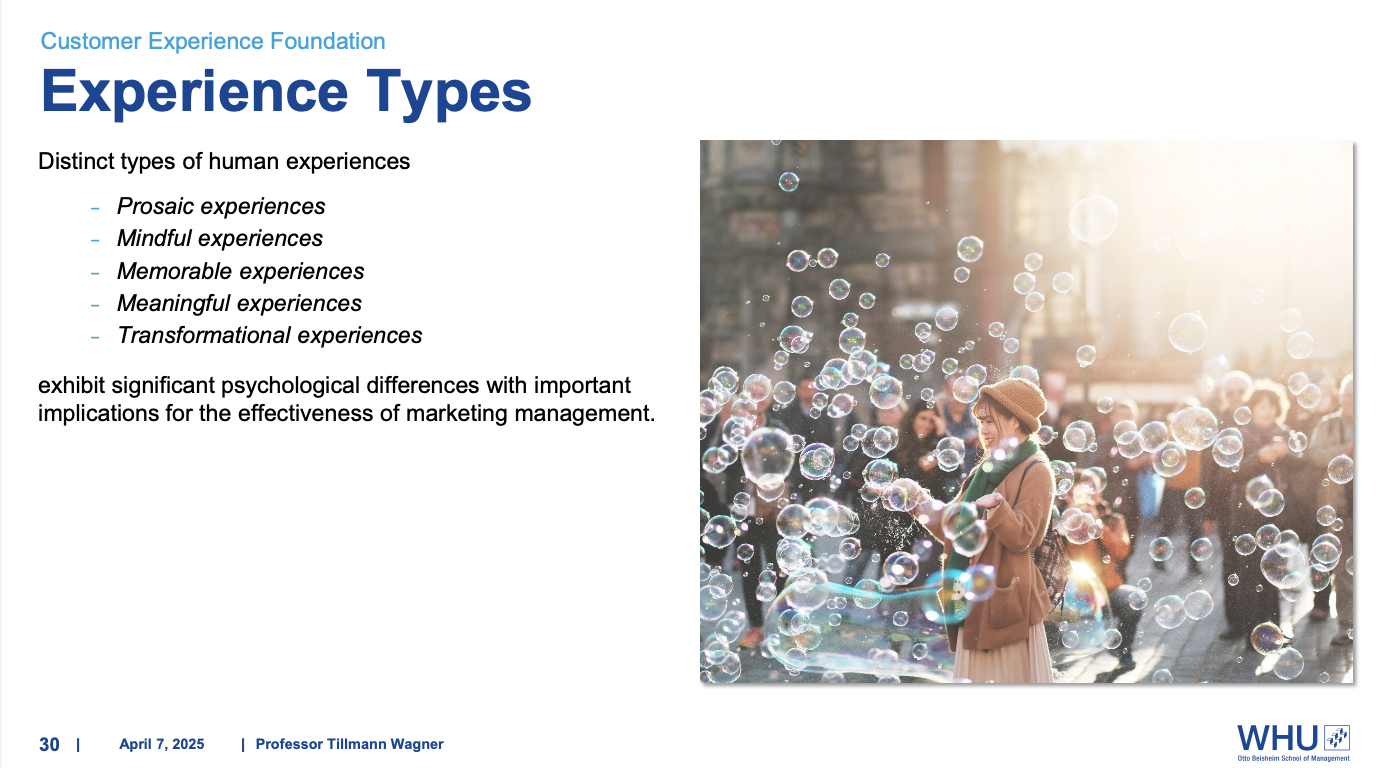
Experience Types - Prosaic Experiences
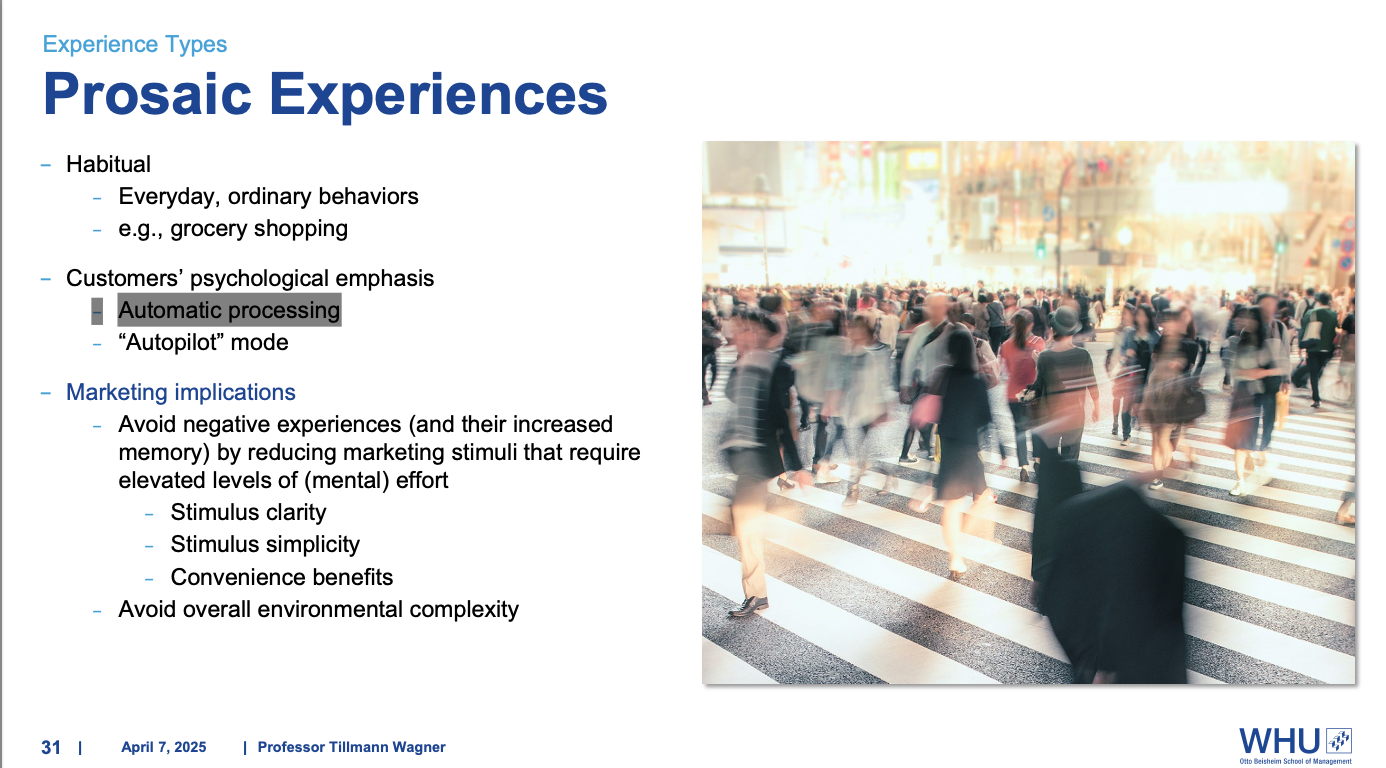
Experience Types - Mindful Experiences
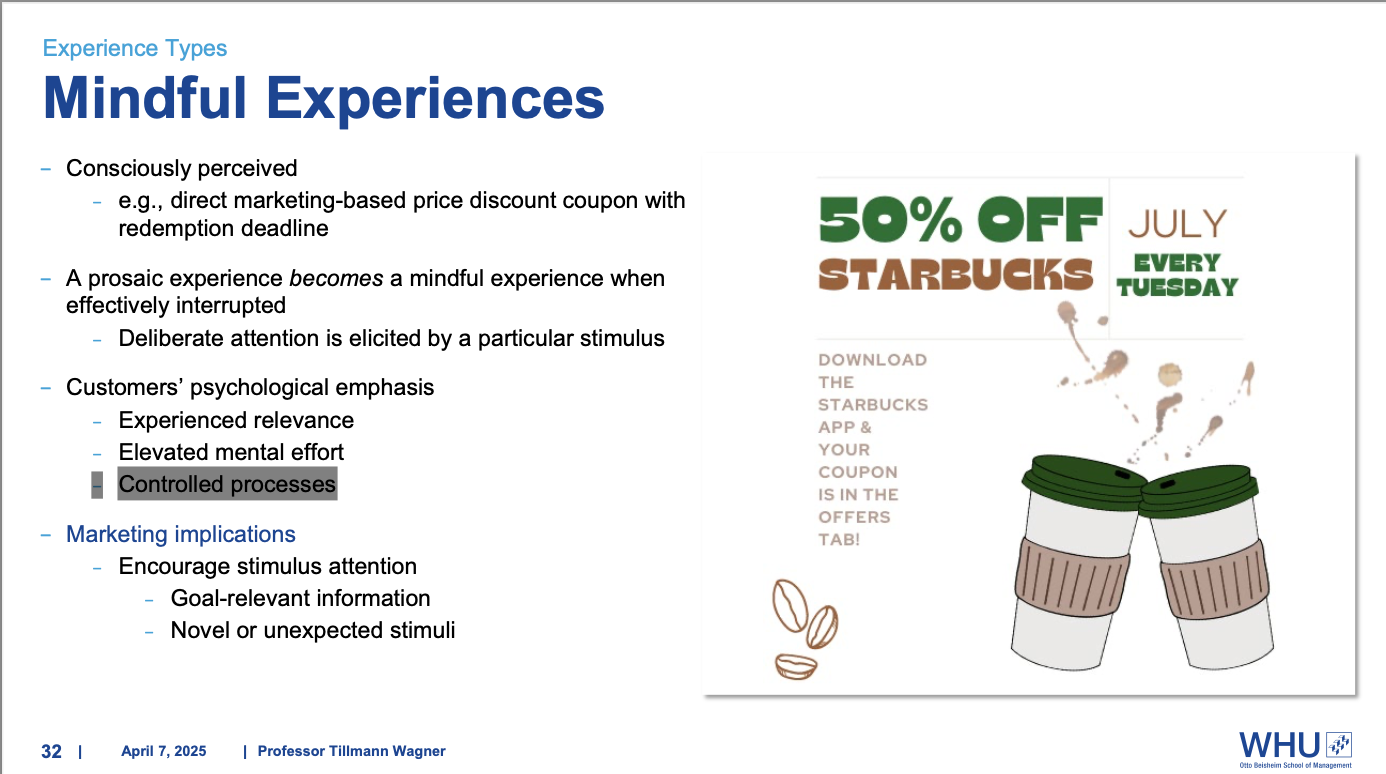
Prosaic vs Mindful Experiences - Evolutionary Psychology
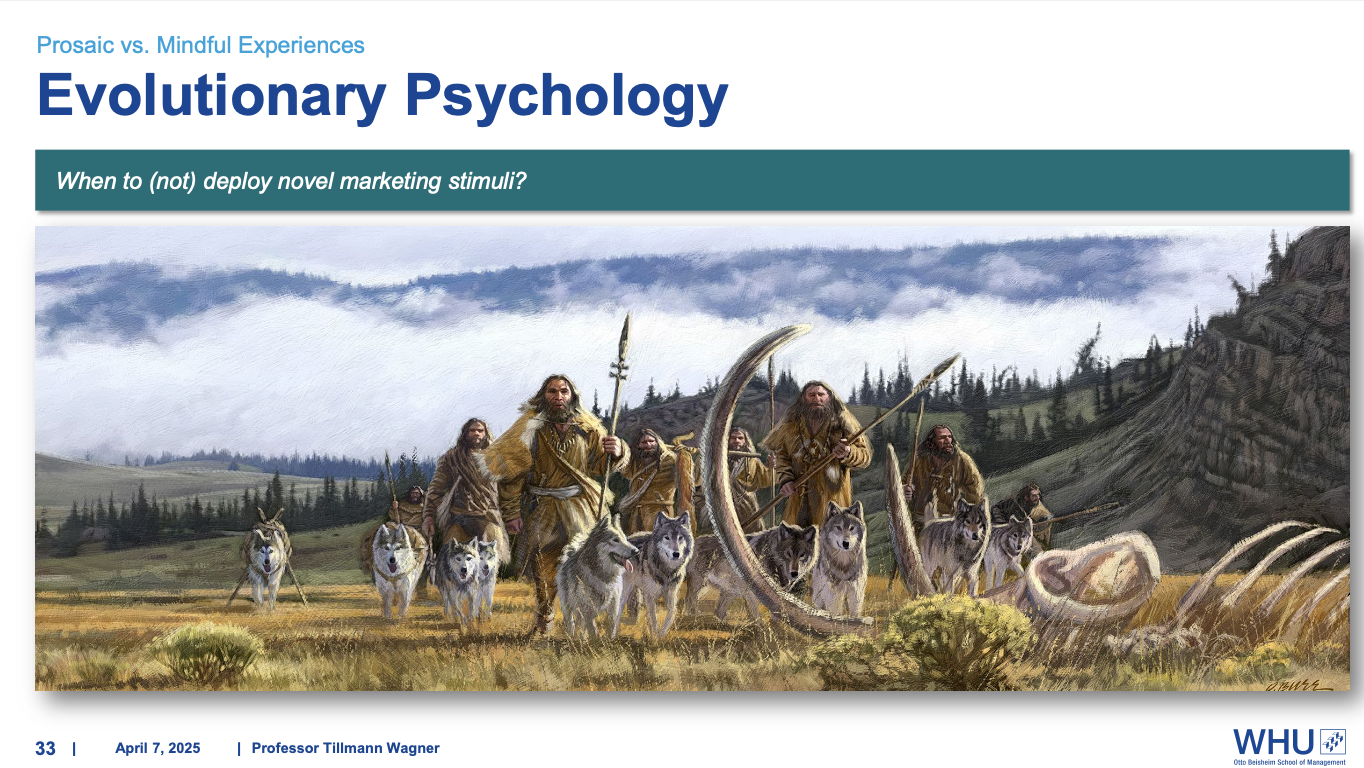
Human Motivational Systems

Human Motivational Systems - Lower Levels of Arousal
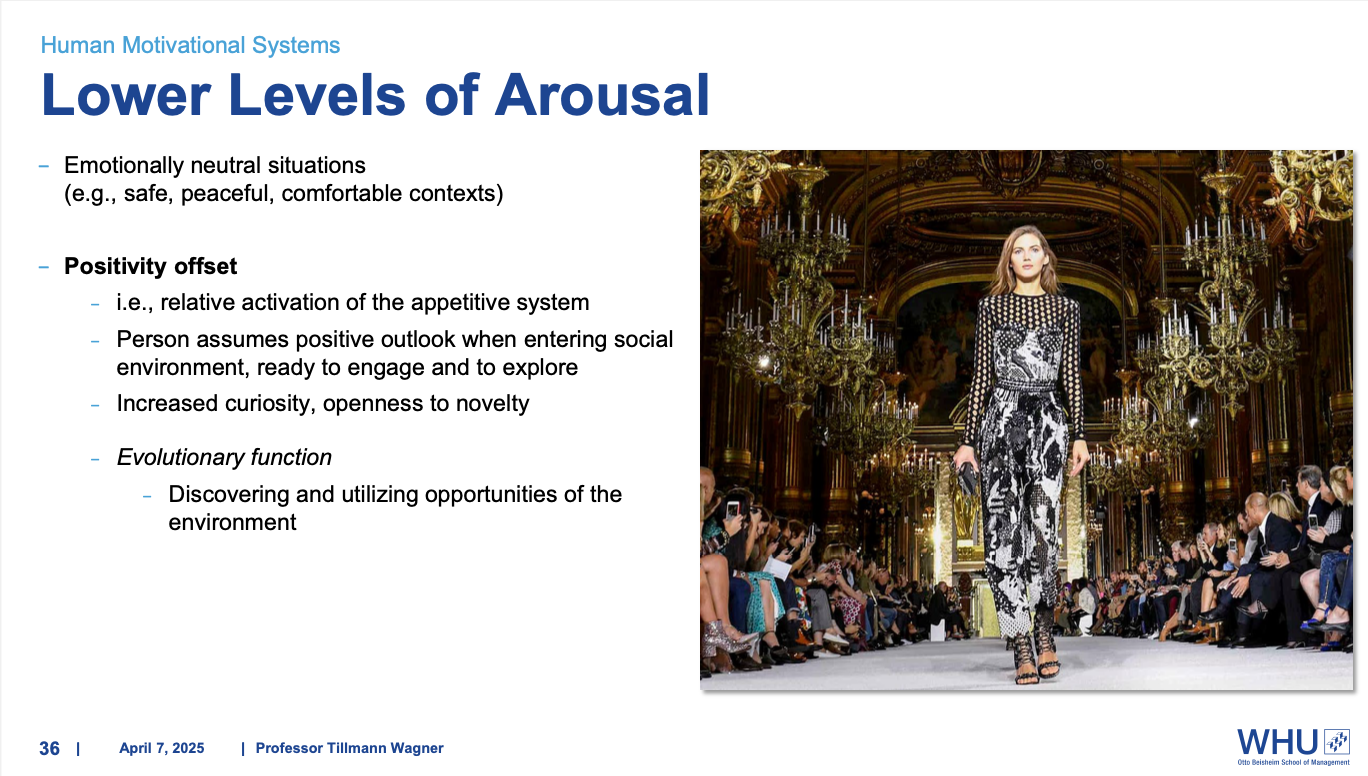
Human Motivational Systems - Higher Levels of Arousal

Experience Types - Memorable Experiences
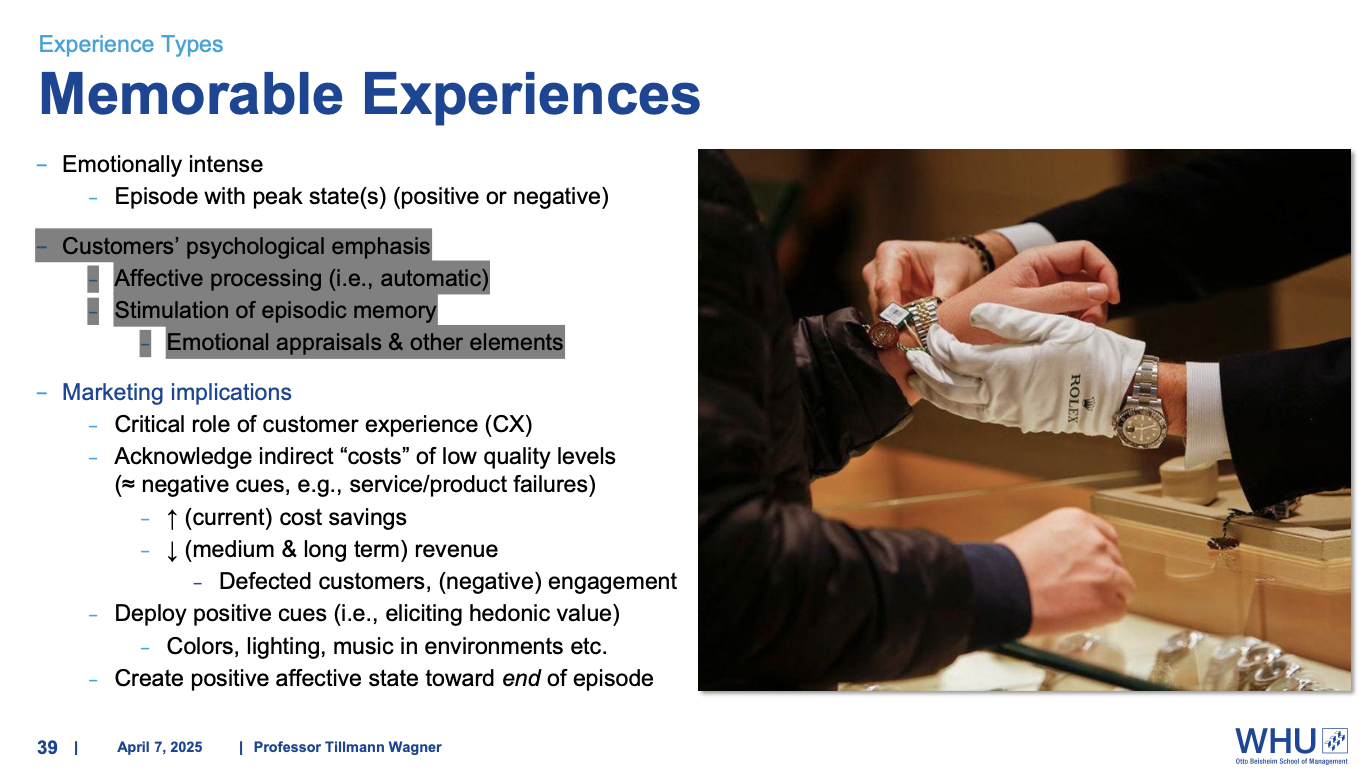
Experience Types - Meaningful Experiences
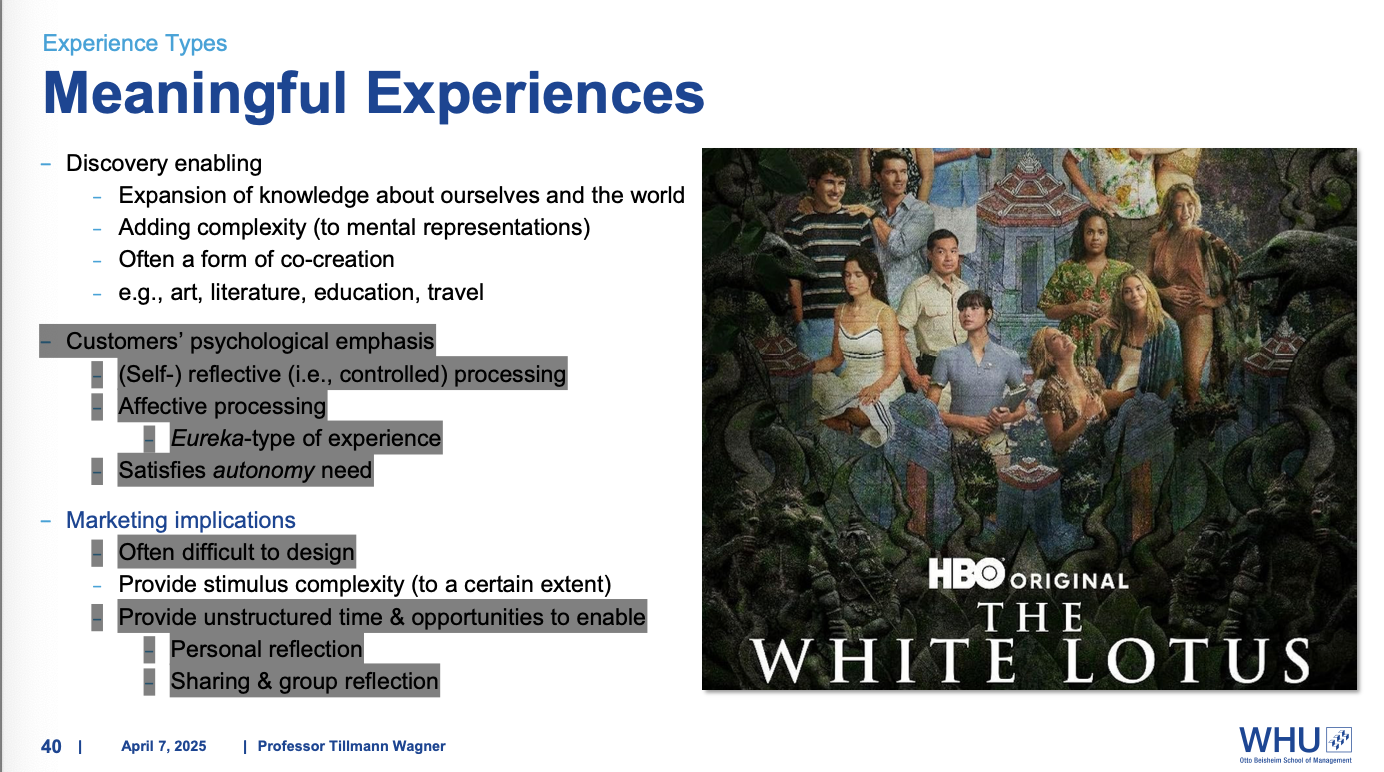
Experience Types - Transformational Experiences
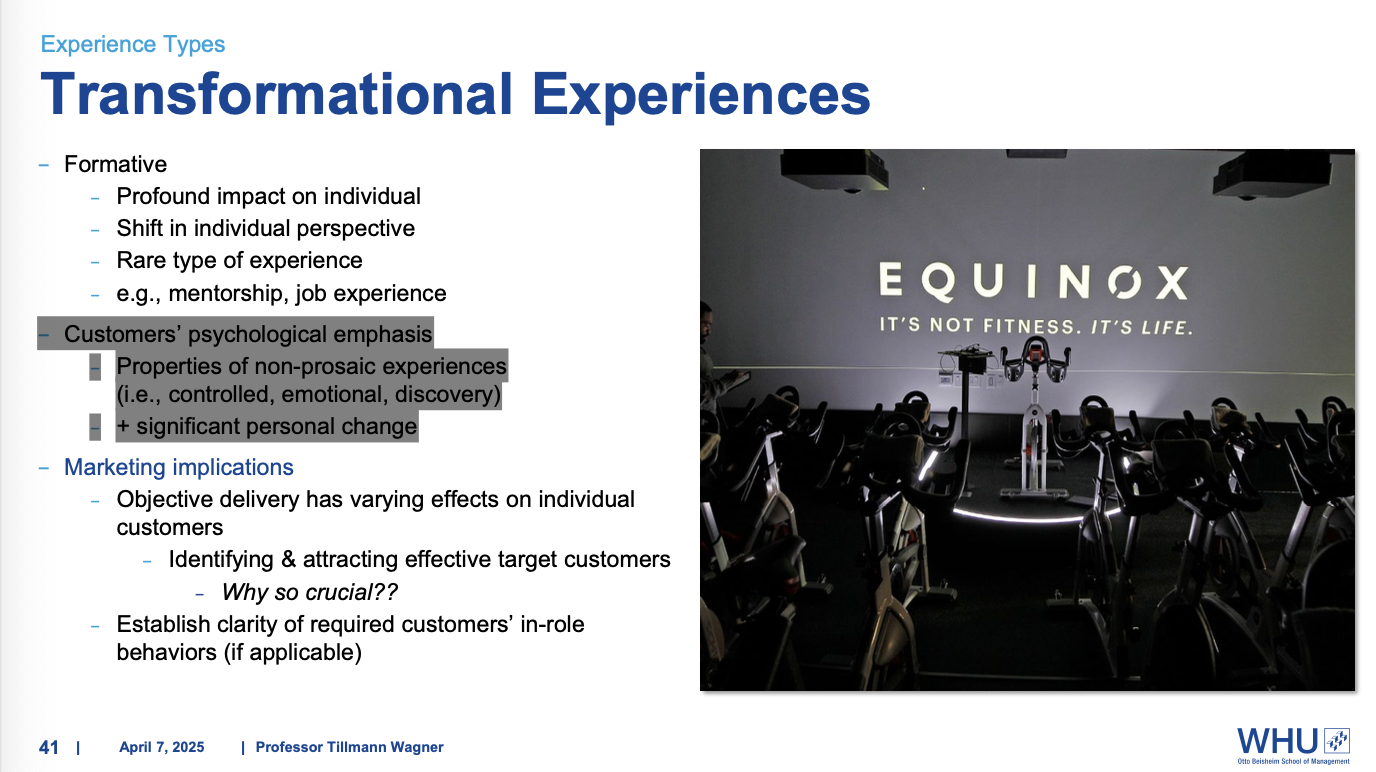
Chapter 4 - 4.4 Customer Experience Management
Customer Experience Management - Definition
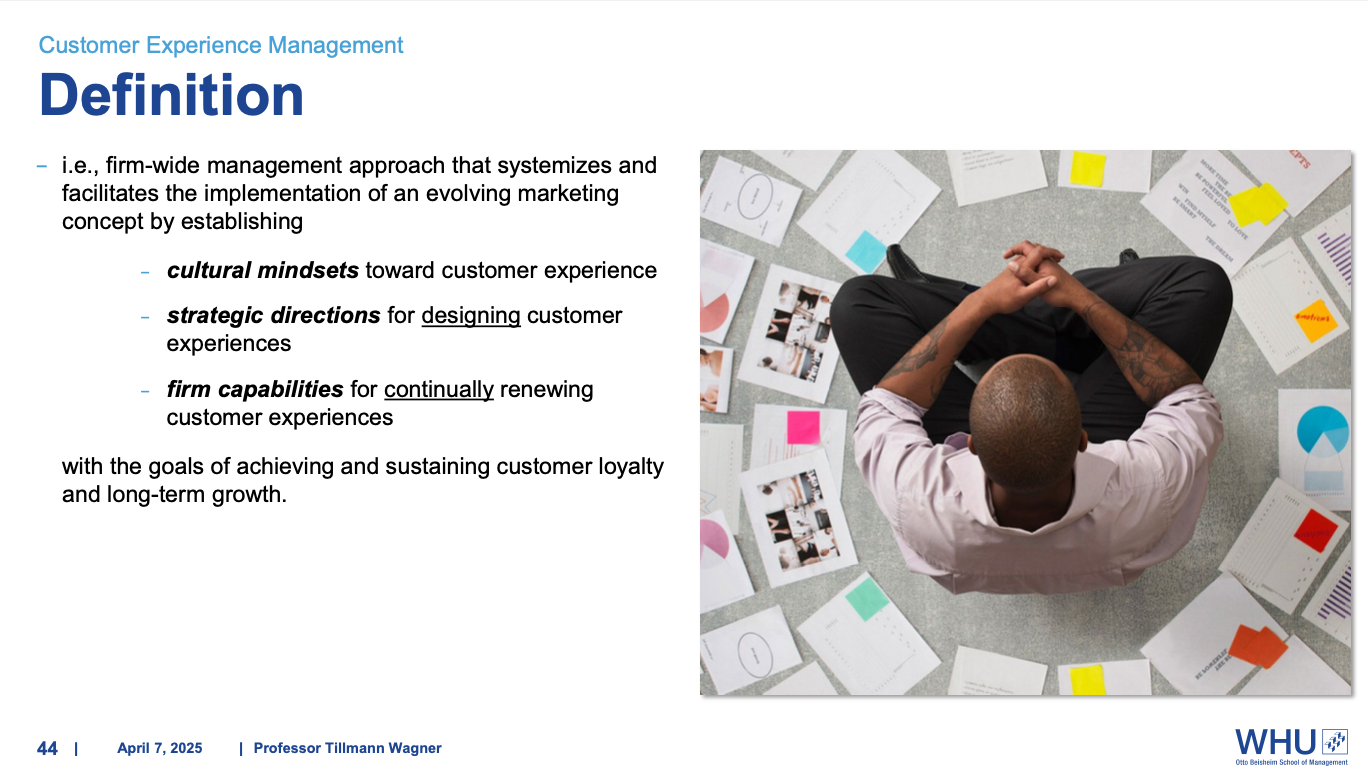
Customer Experience Management - Cultural Mindsets
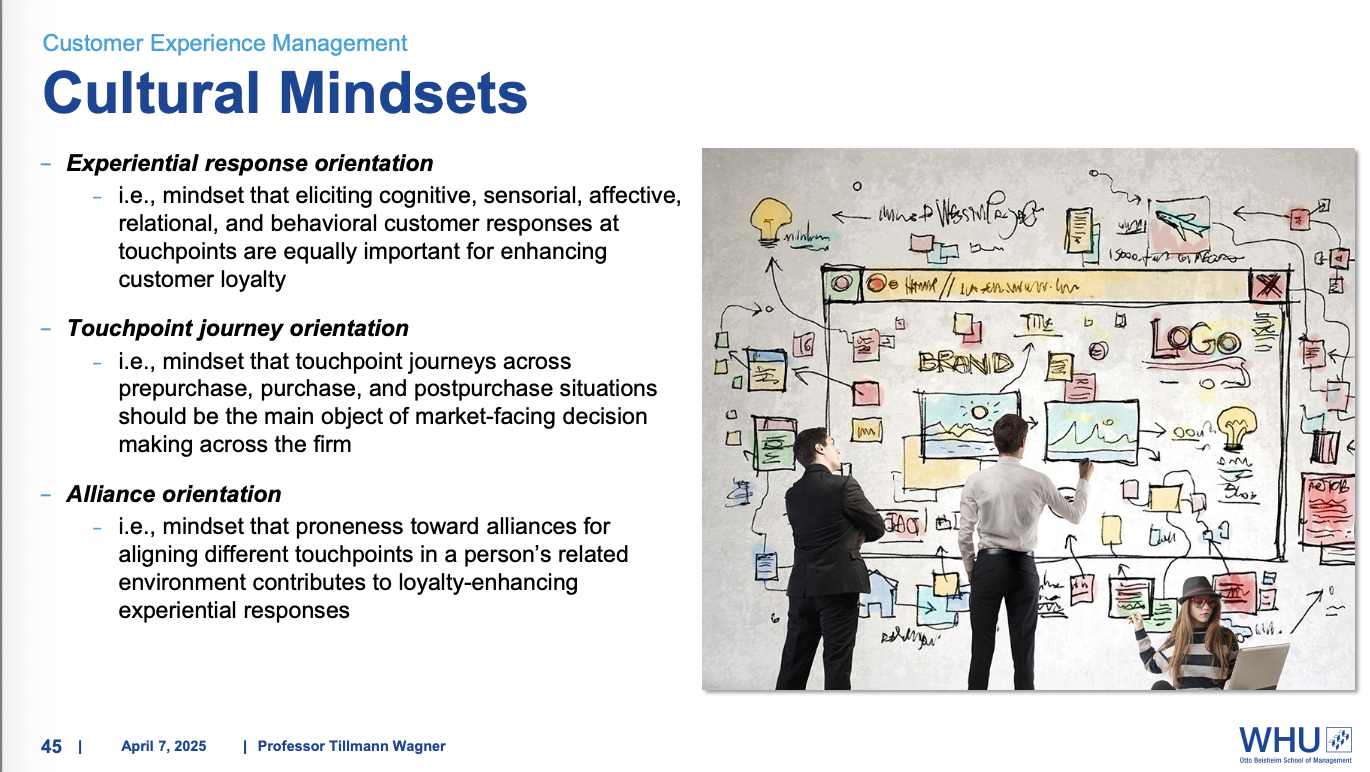
Customer Experience Management - Strategic Directions
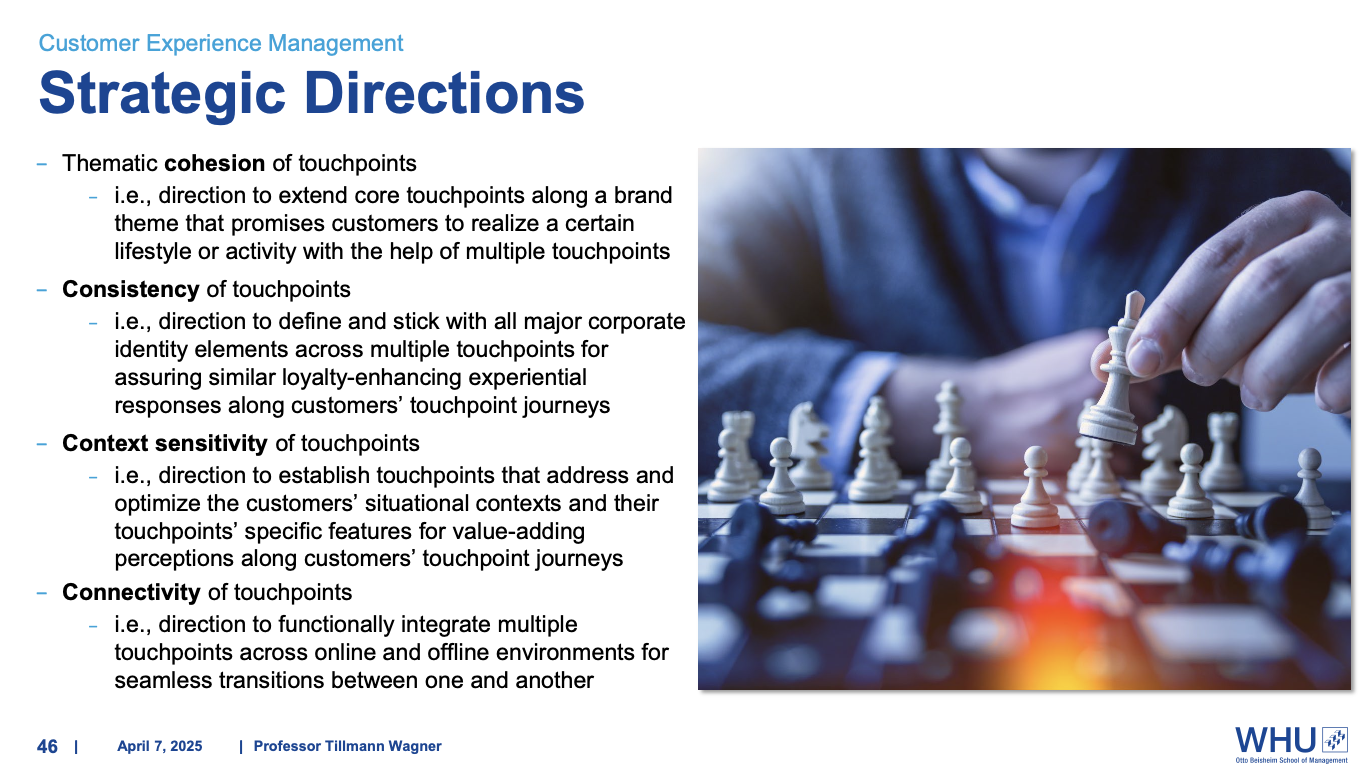
Customer Experience Management - Firm Capabilities
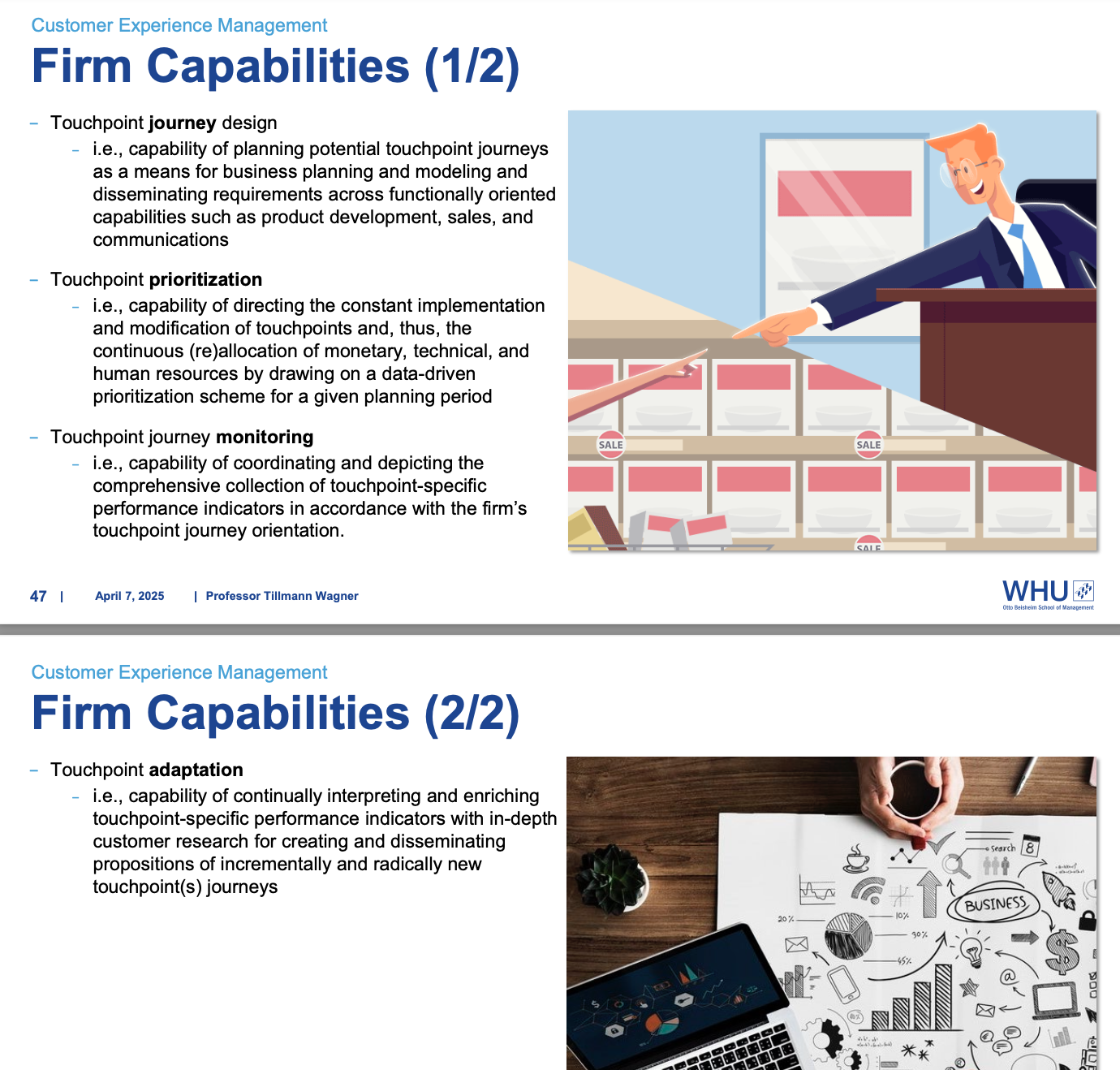
Customer Experience Management - Design Perspectives
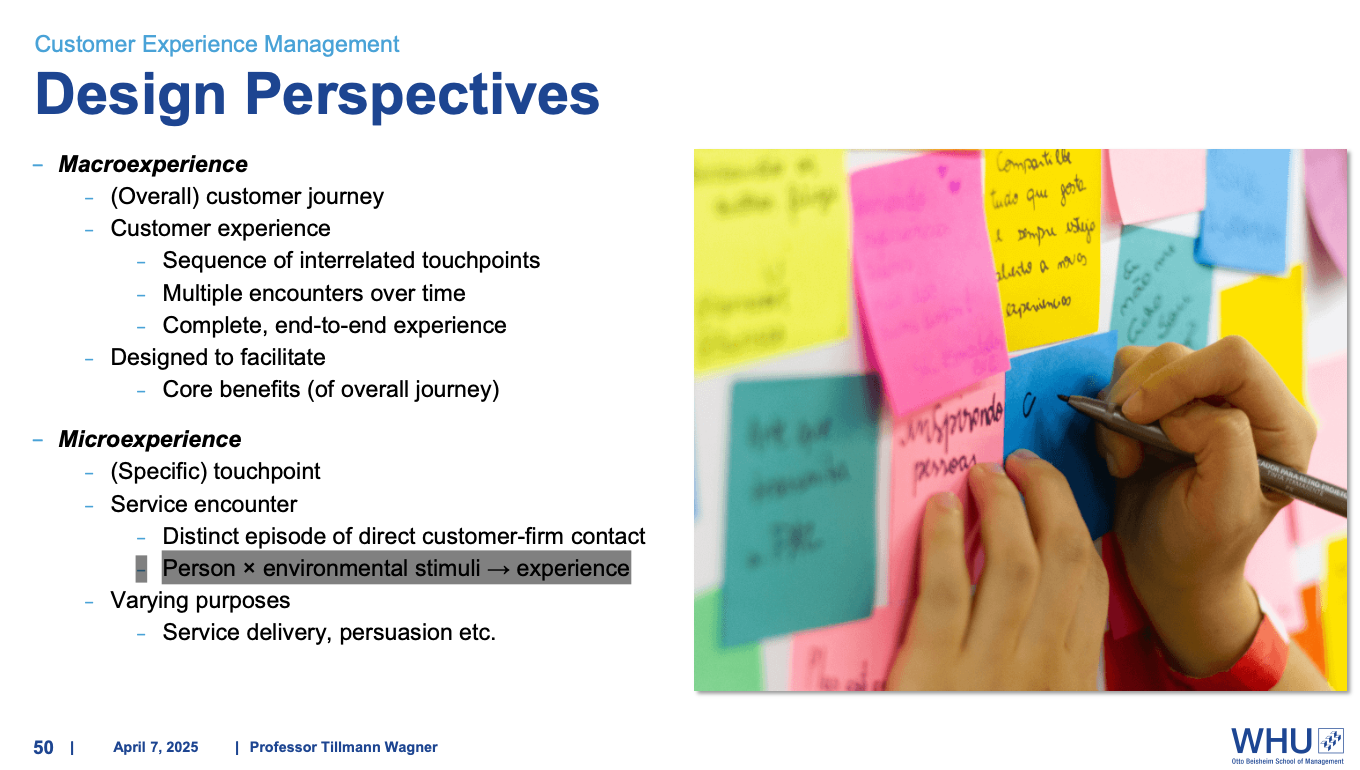
Chapter 5 - 5.1 Gaps Model of Service Quality
Experience Outcomes - Gaps Model of Service Quality
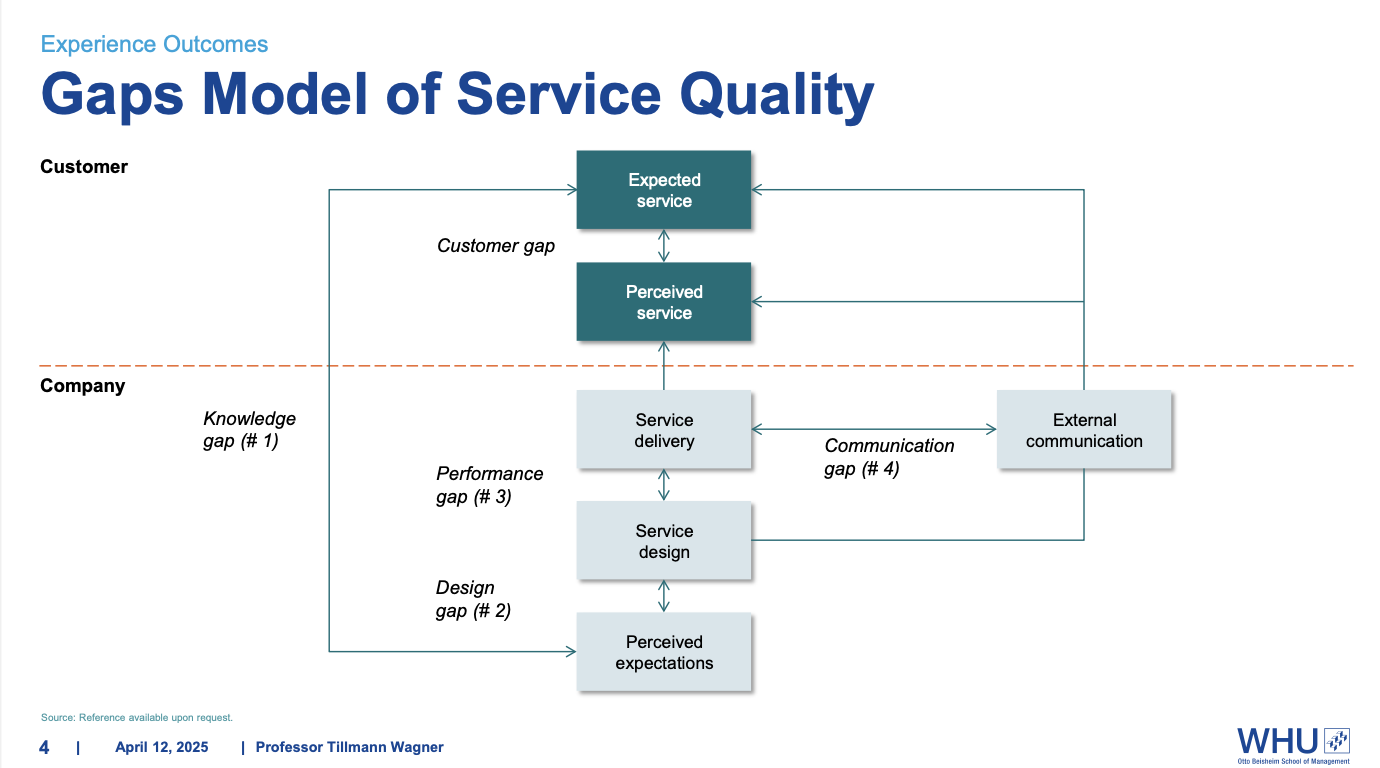
Gaps Model - Customer Gap
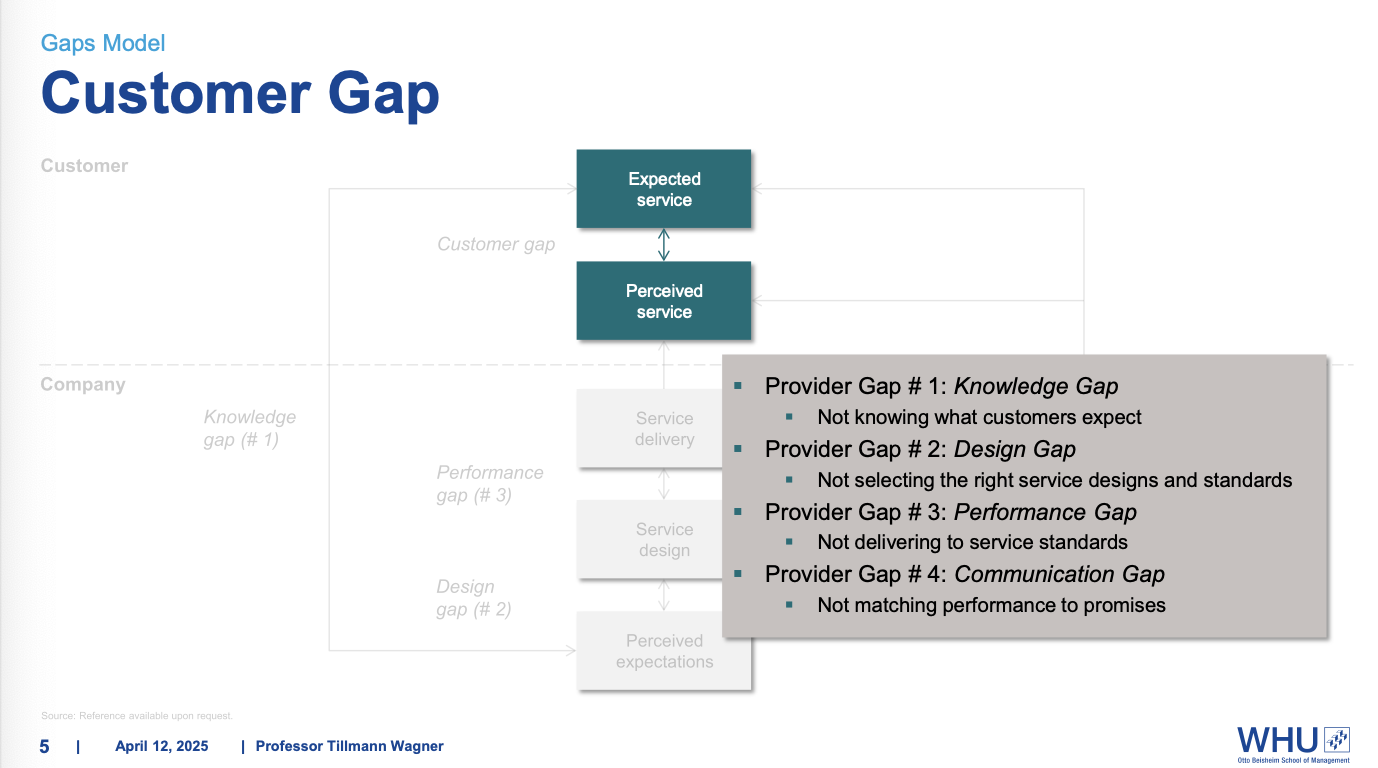
Gaps Model - Knowledge Gap
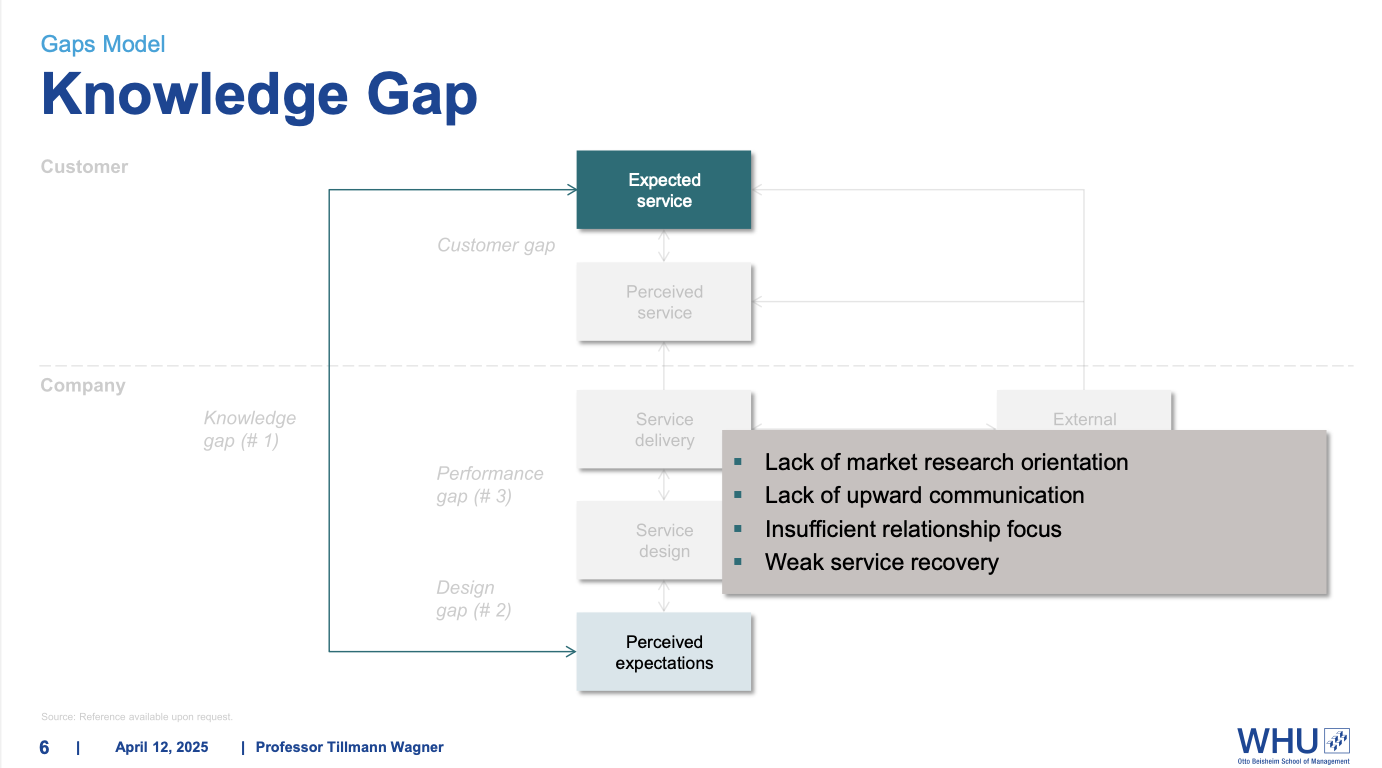
Gaps Model - Design Gap
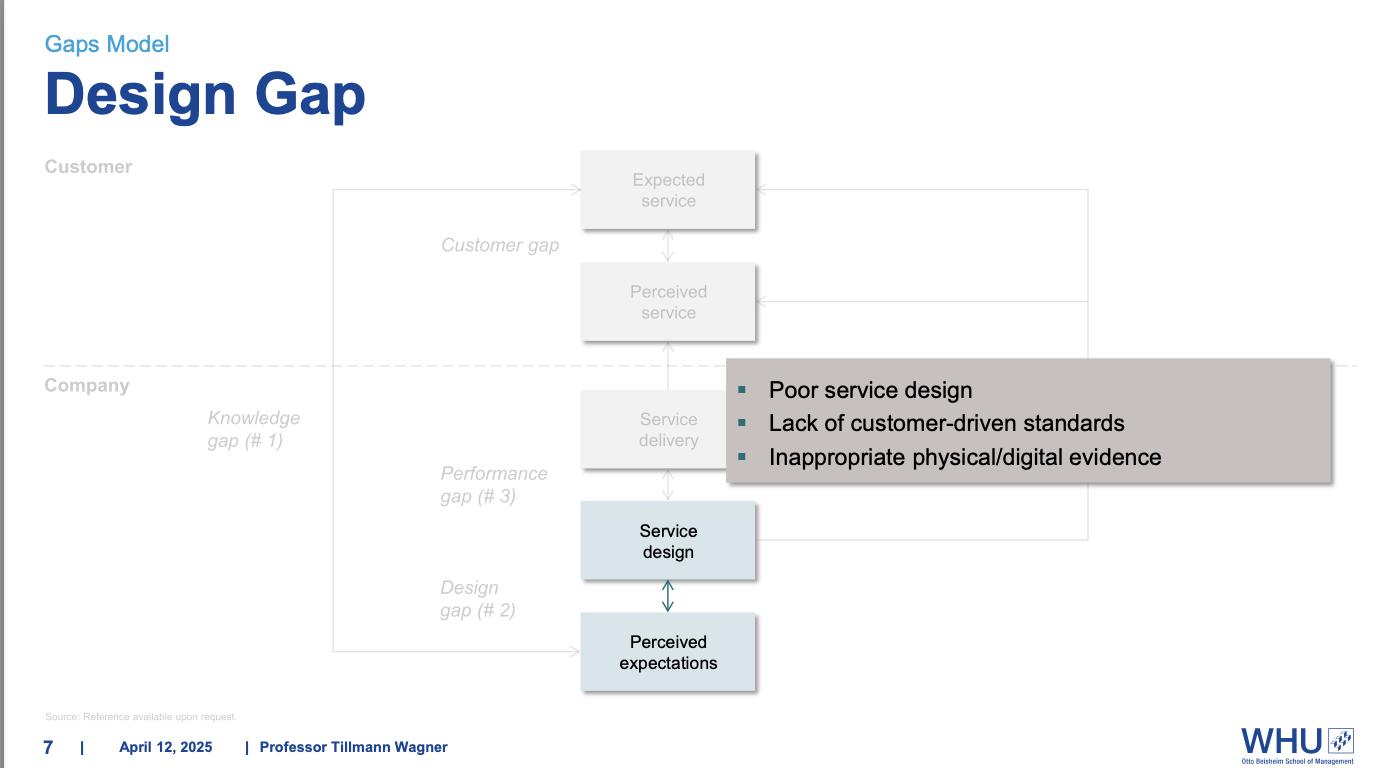
Gaps Model - Performance Gap
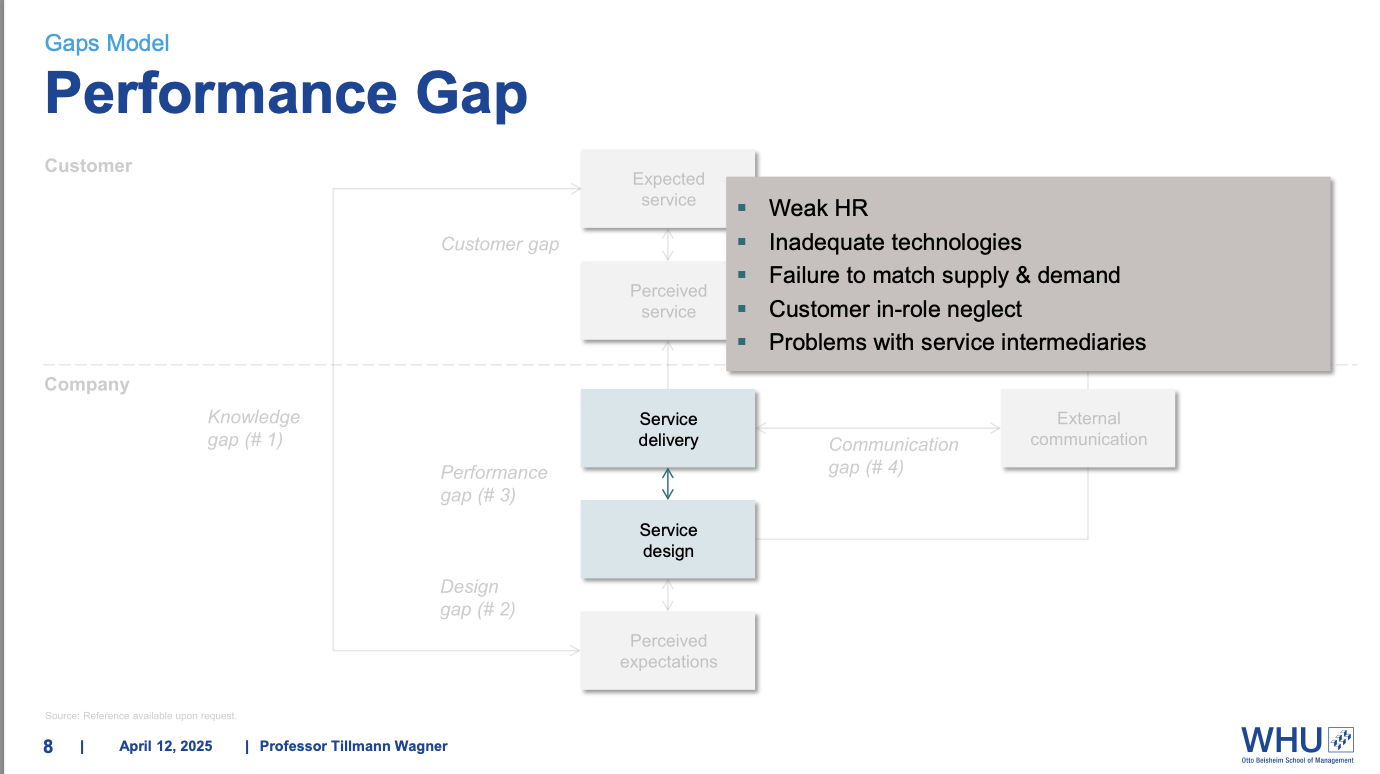
Gaps Model - Communication Gap
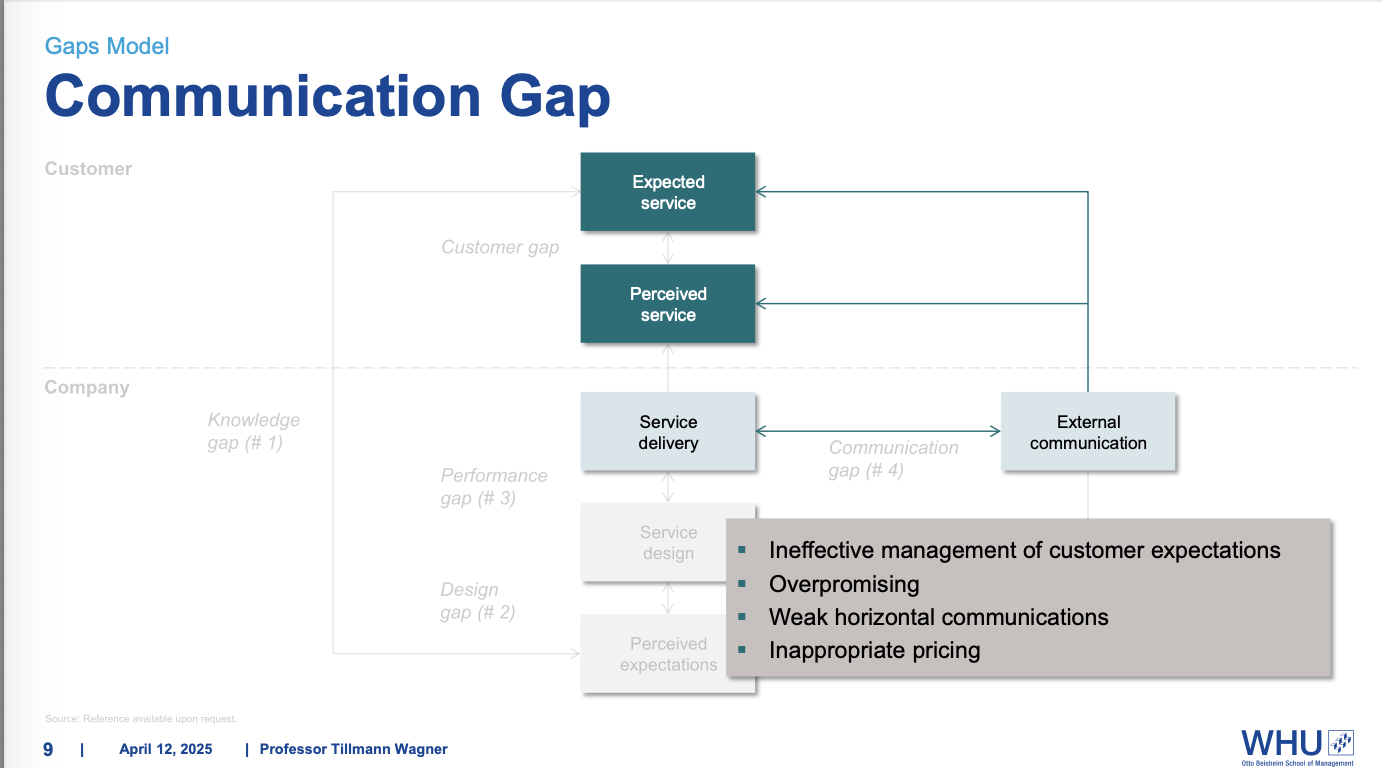
Chapter 5 - 5.2 Metrics & Data
Experience-Related Data - Types of Metrics
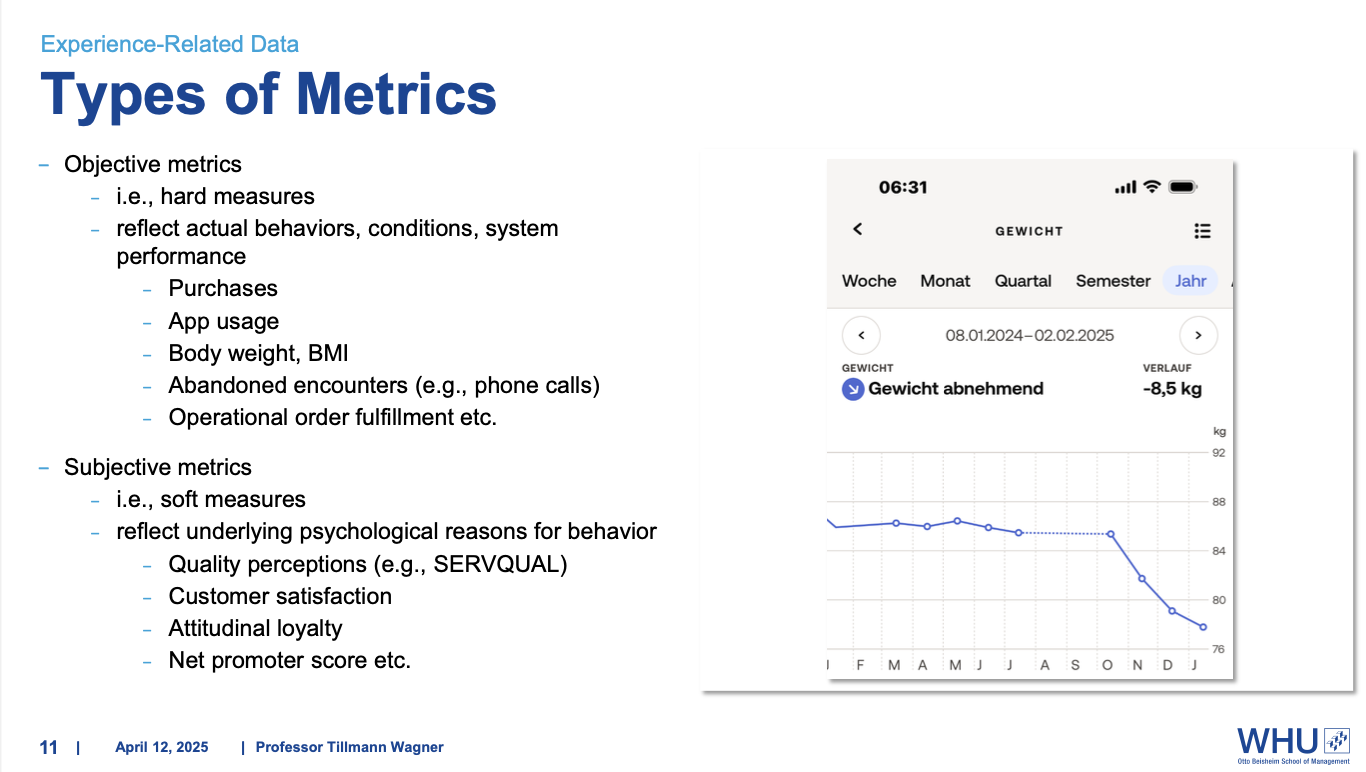
Experience-Related Data - Methods of Collecting Subjective Data
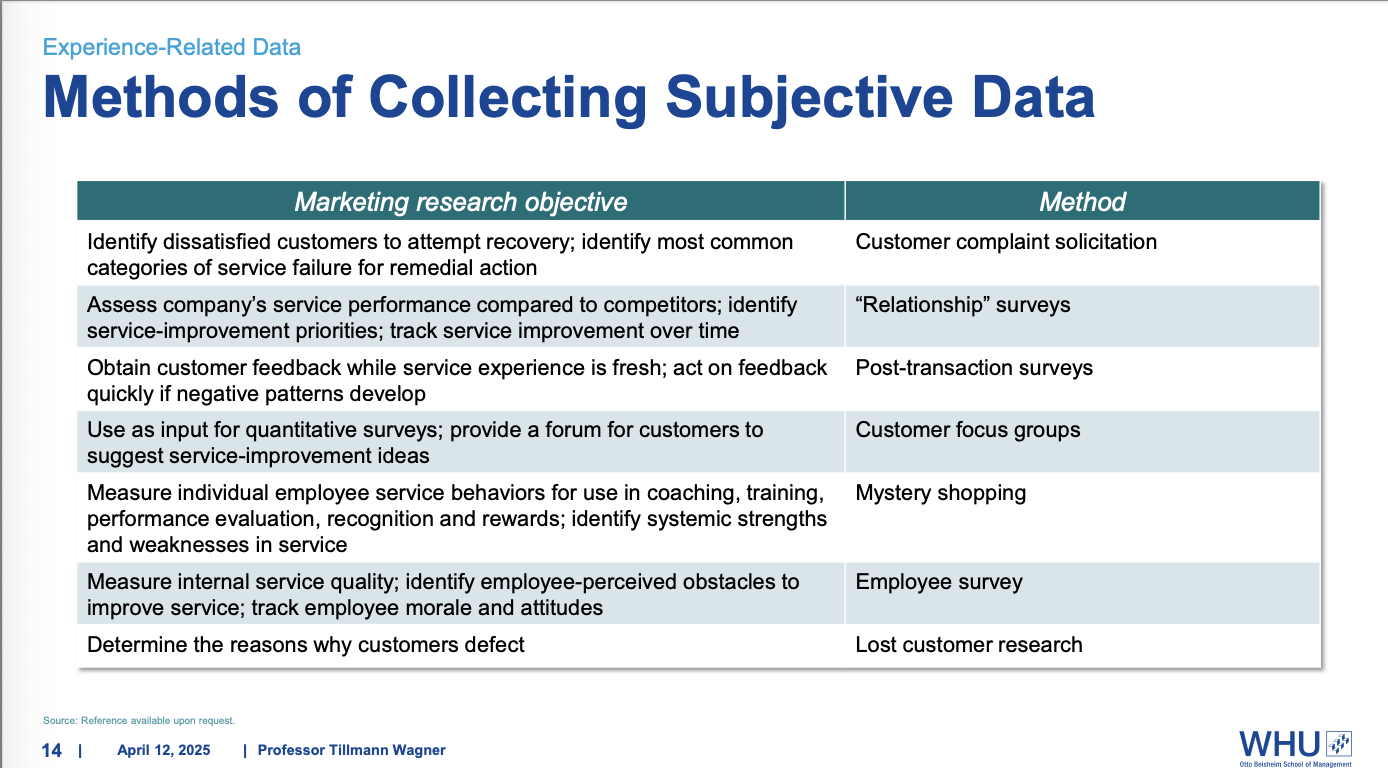
Net Promoter Score - Approach + Calculation
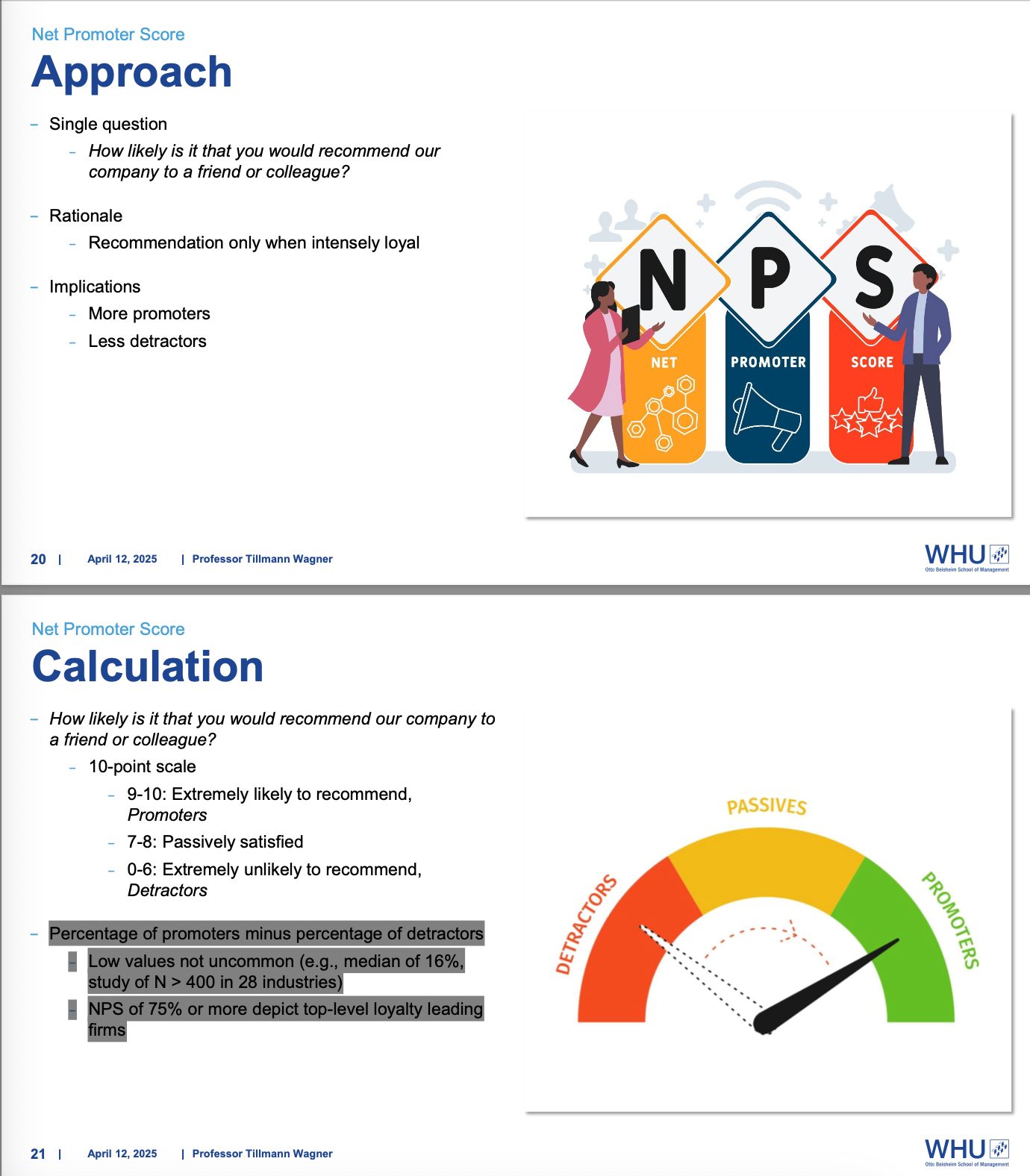
Experience-Related Data - Effective Research Program
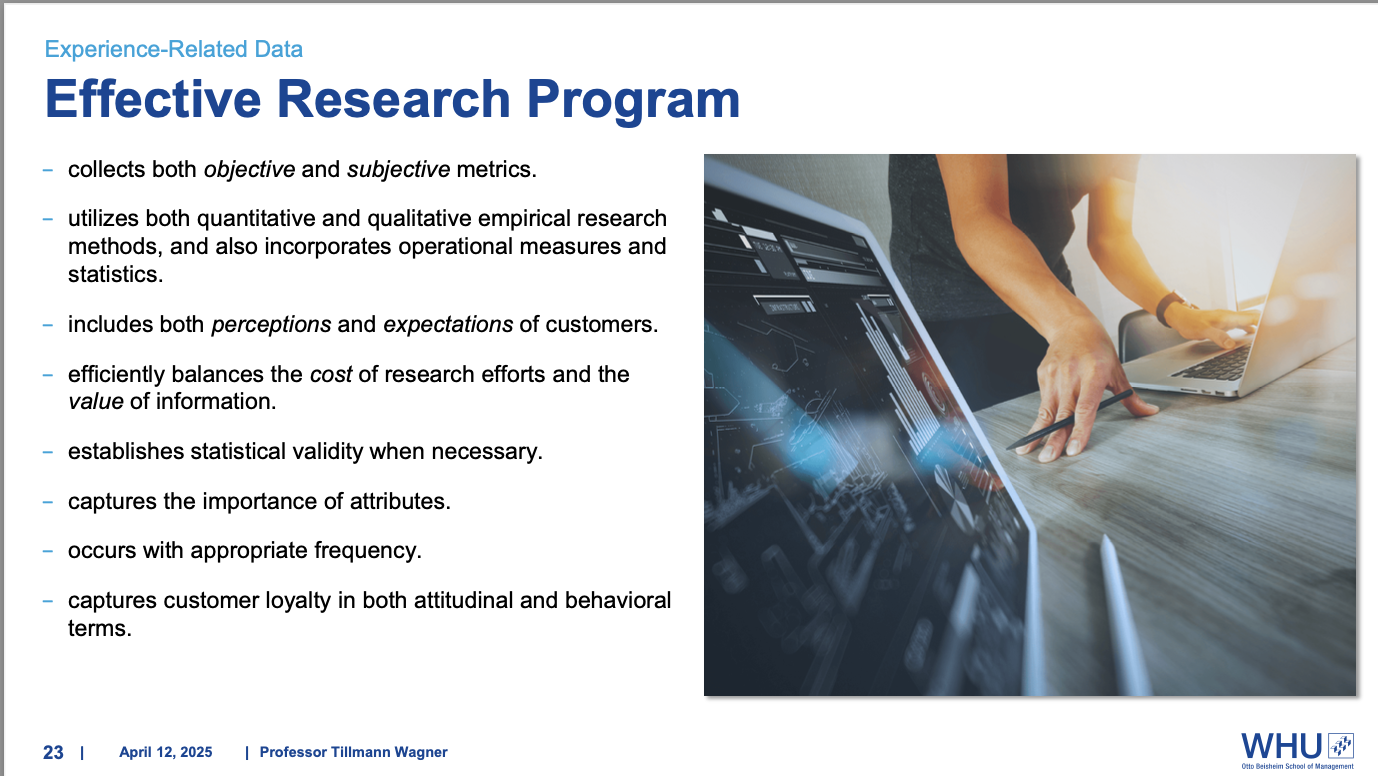
Chapter 5 - 5.3 Customer Switching
Customer Switching - Drivers of Customer Switching
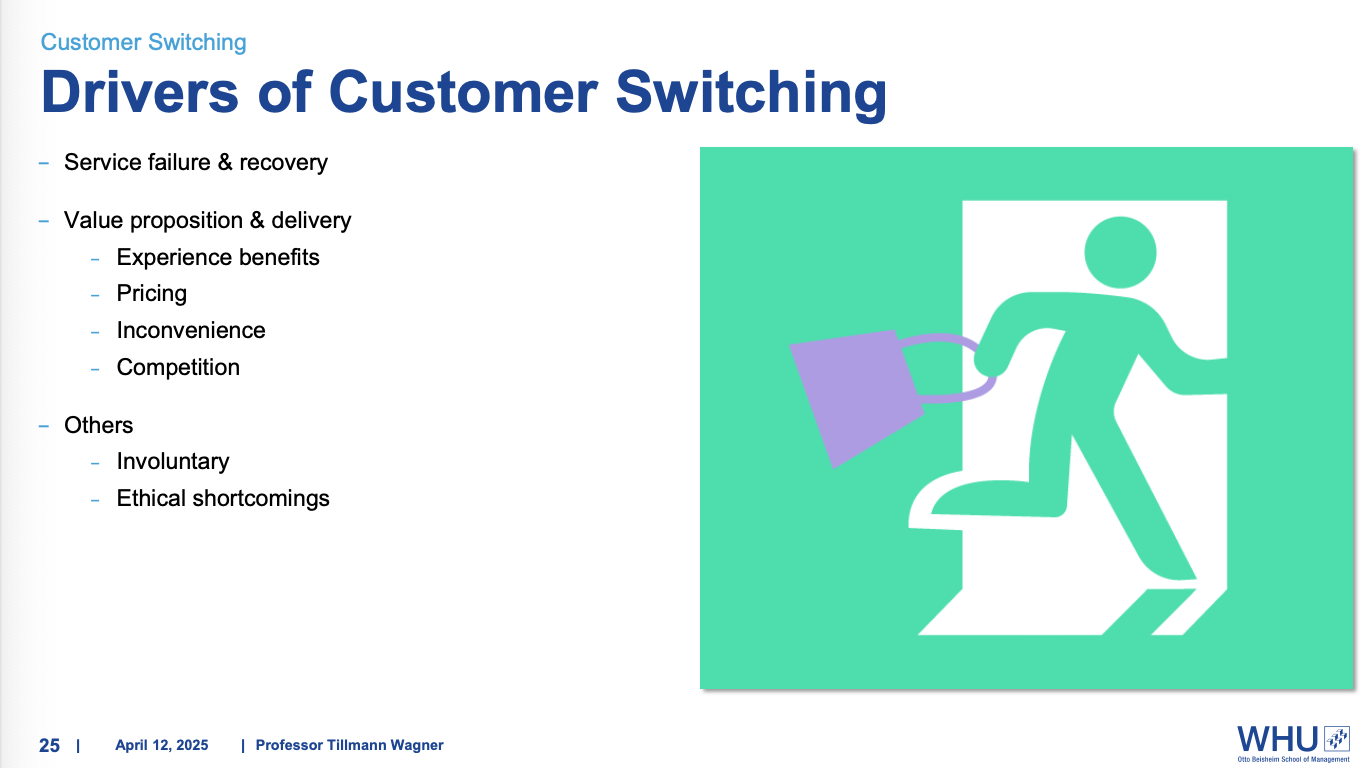
Customer Switching - Service Failure
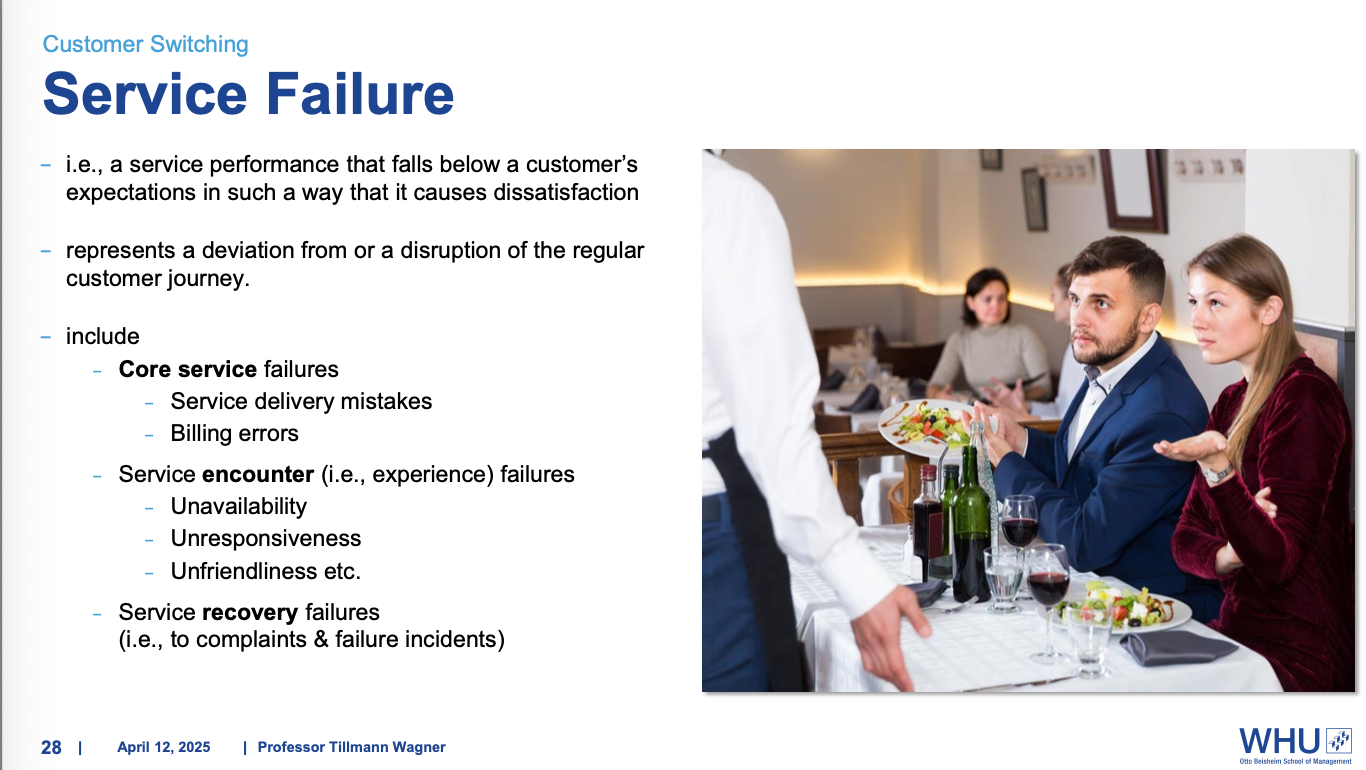
Customer Service Failure Responses - Customer Emotion Regulation
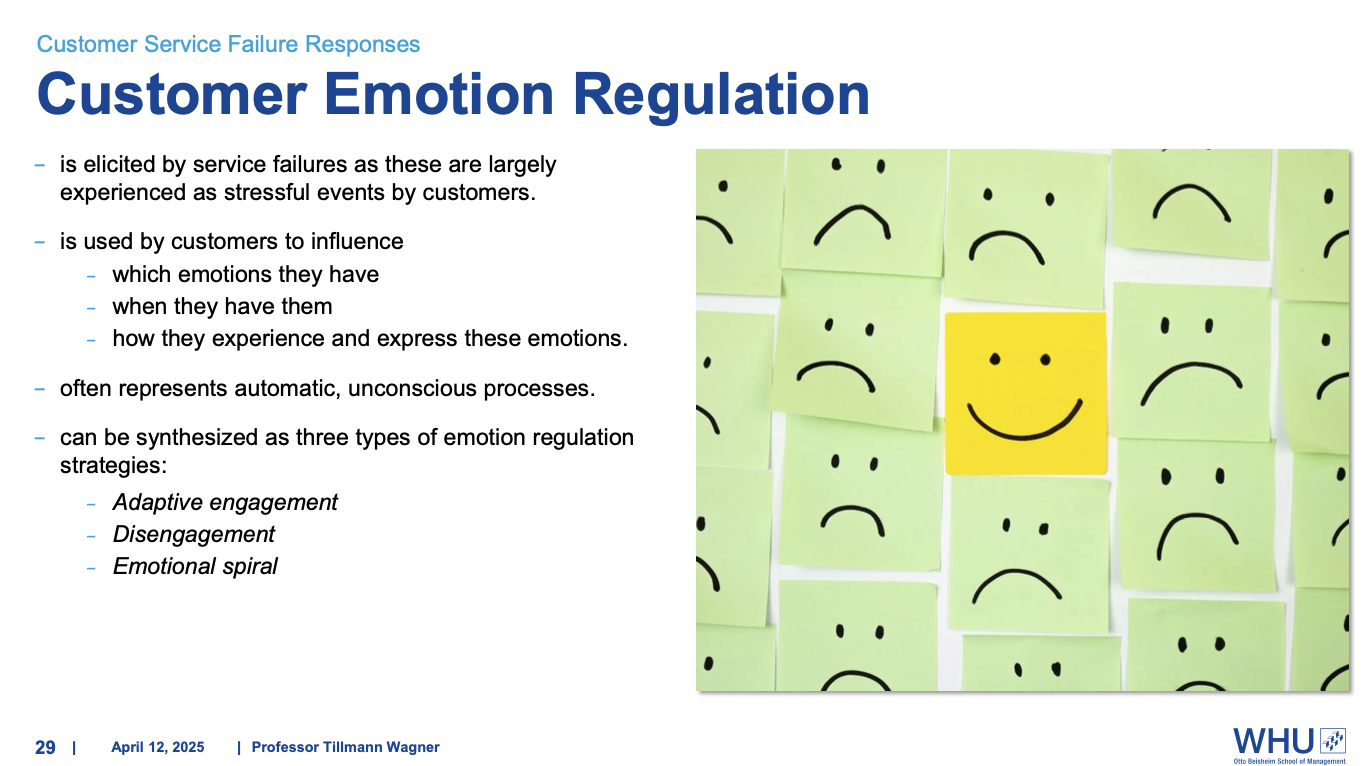
Emotion Regulation Strategies - Adaptive Engagement

Emotion Regulation Strategies - Disengagement
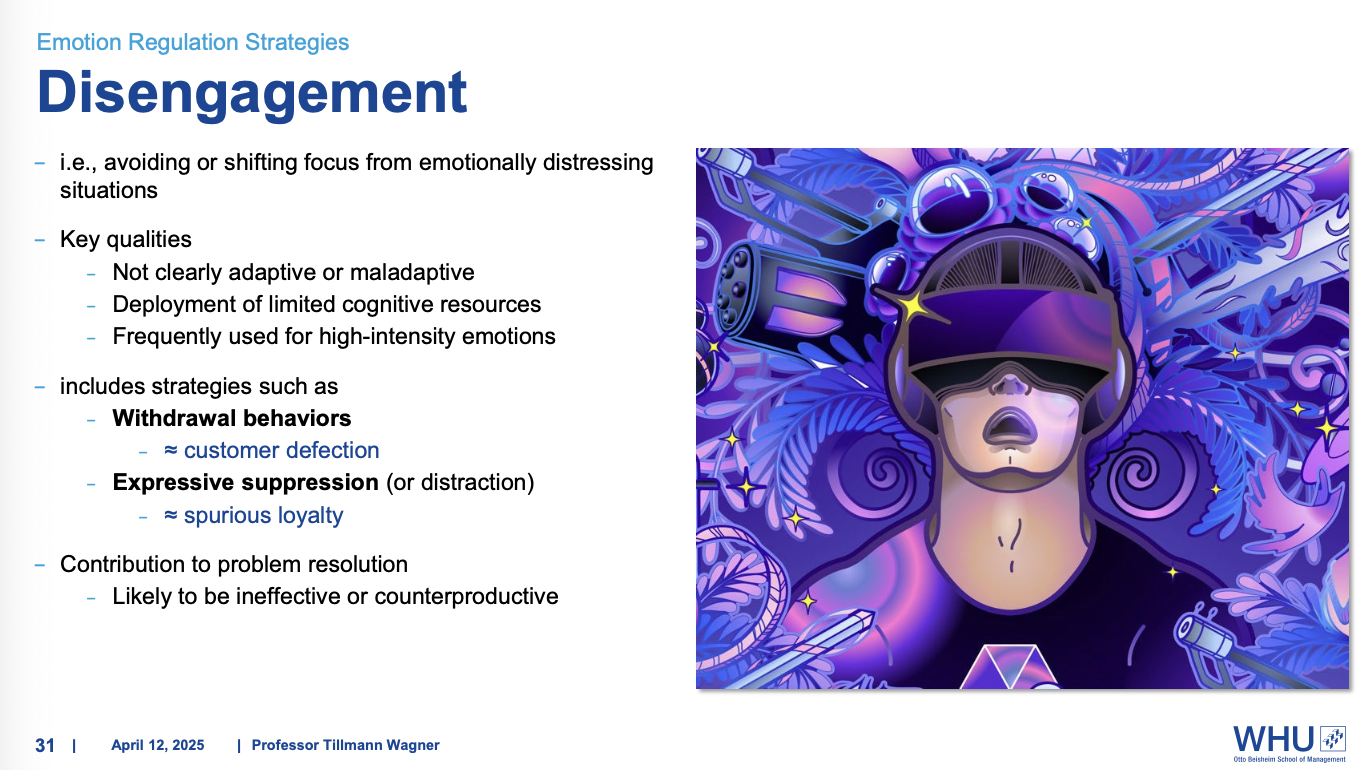
Emotion Regulation Strategies - Emotional Spiral
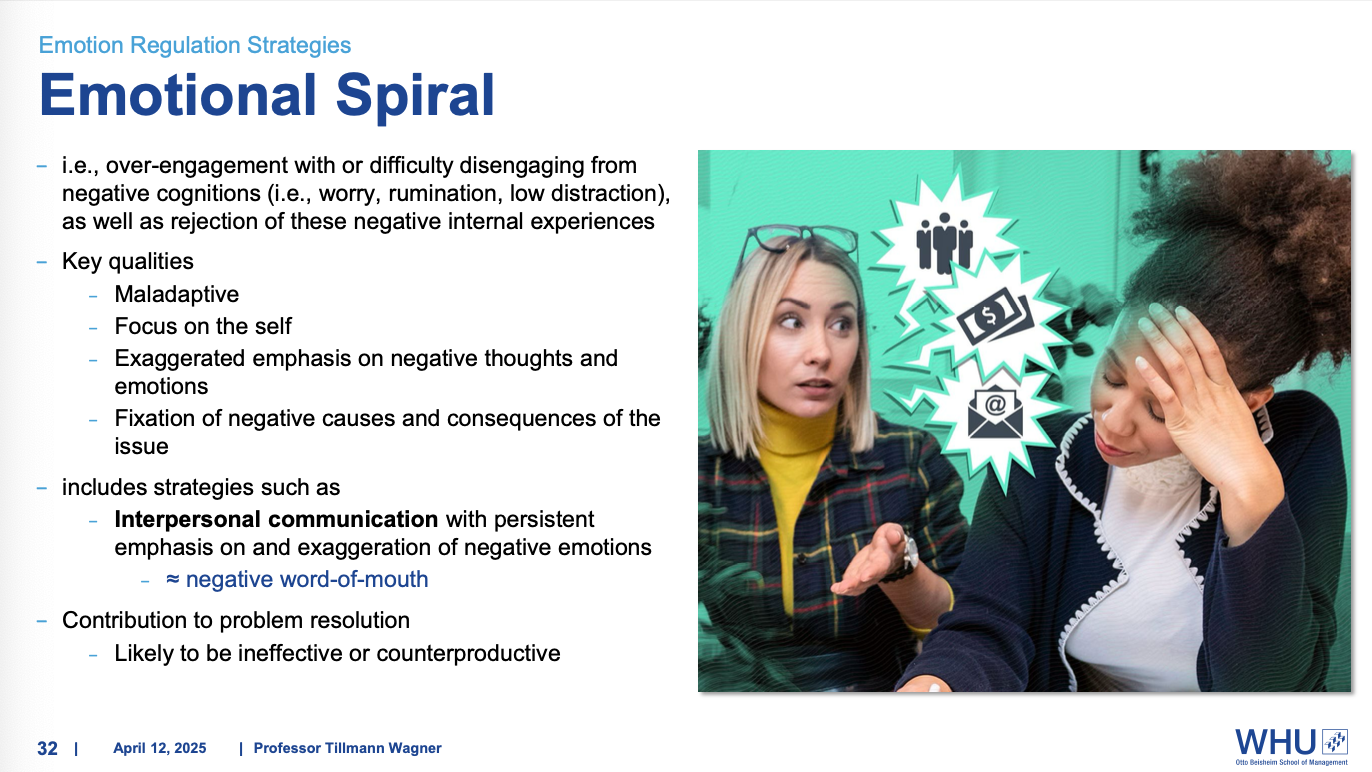
Customer Service Failure Responses - Direct Complaints to Firms
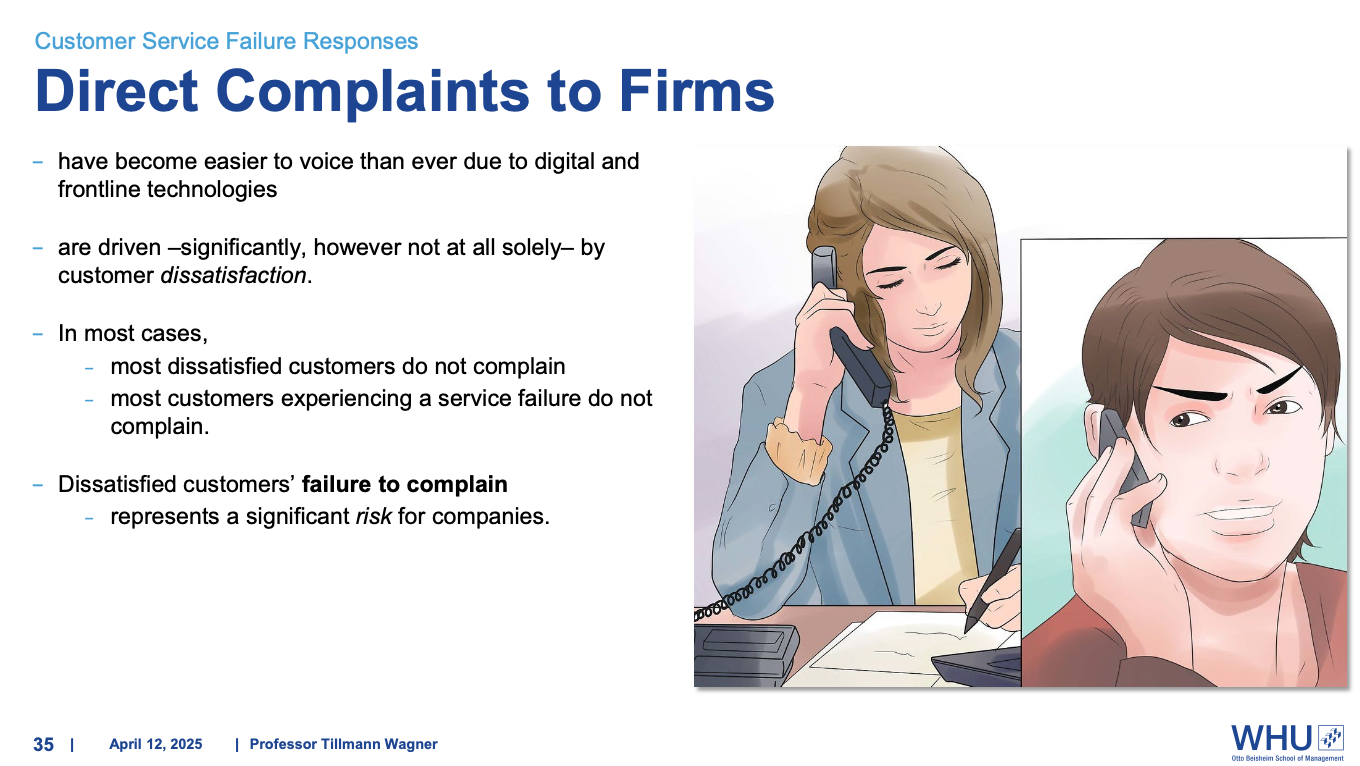
Direct Complaints to Firms - Annoyance Iceberg
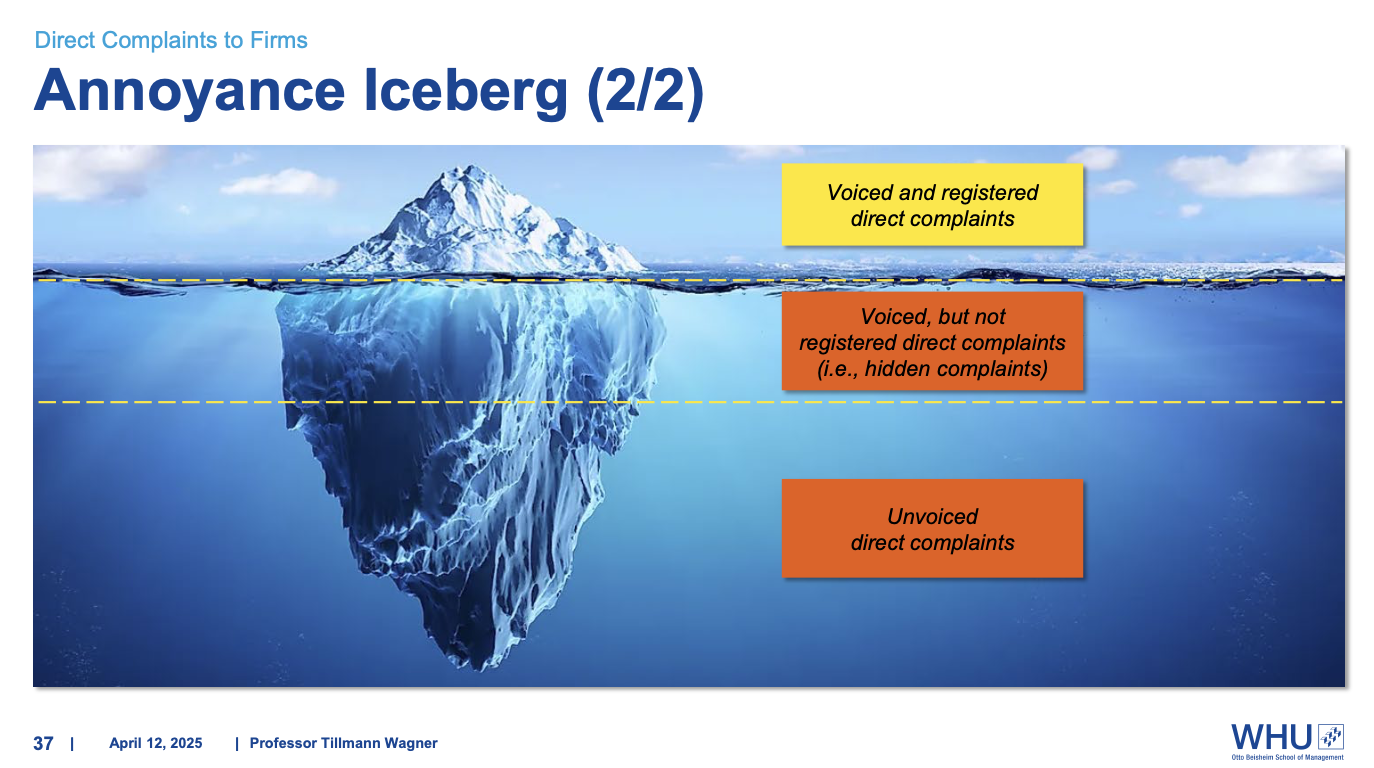
Chapter 5 - 5.4 Service Recovery
Recovery from Service Failure - Service Recovery
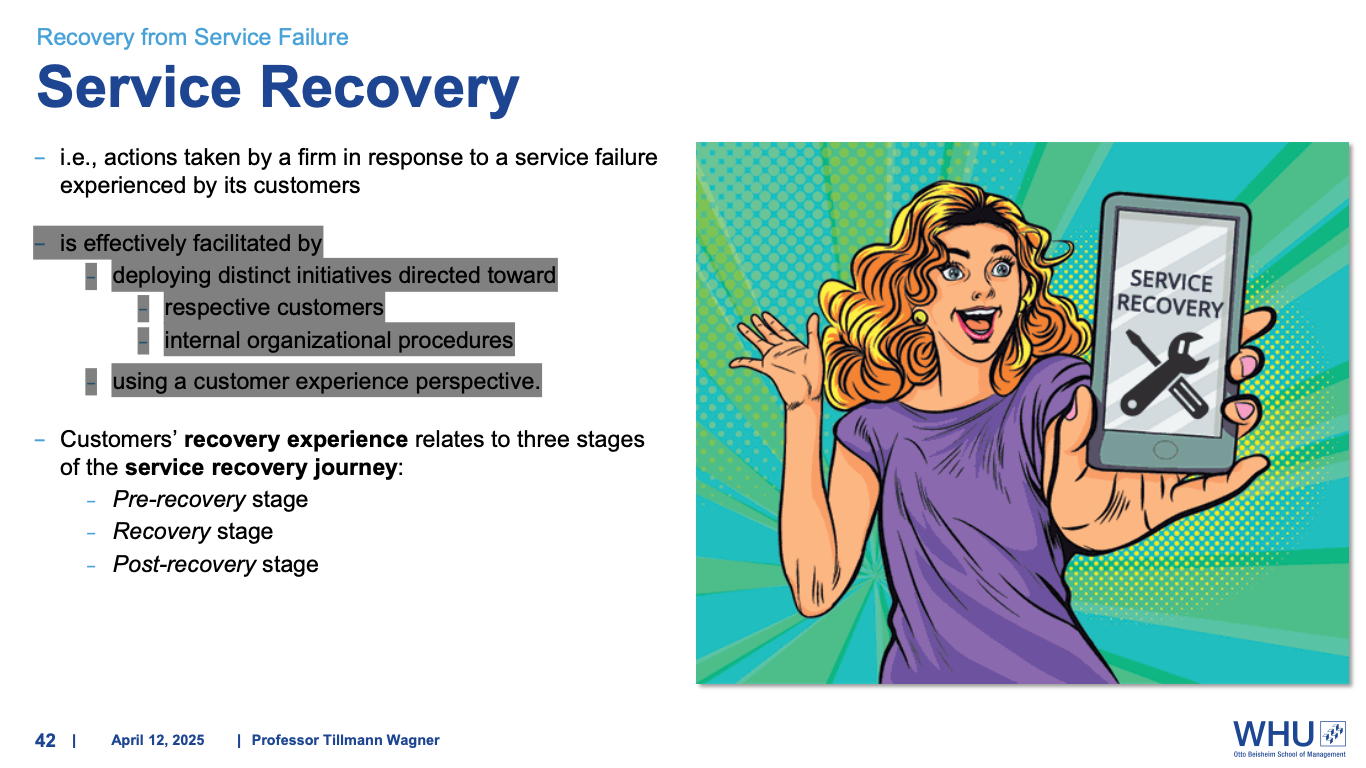
Recovery from Service Failure - Service Recovery Journey
